INTRODUCTION
Joint-Stock Company Nizhny Novgorod Engineering Company Atomenergoproekt
(hereinafter referred to as JSC NIAEP or NIAEP)

Details:
Postal address: 3, Svoboda sq., Nizhny Novgorod, 603006, Russia
Tel.: +7 831 421 79 00
Fax: +7 831 419 84 90; +7 831 421 06 04
Website: http://www.niaep.ru
E-mail: niaep@niaep.ru
Shareholders:
As of December 31, 2012 the sole shareholder of JSC NIAEP is Joint-Stock Company Atomic Energy Power Corporation (JSC Atomenergoprom).
Registrar:
The JSC NIAEP registered stock holders’ register is kept by Open Joint-Stock Company Registrator R.O.S.T.
Address: 18, build.13, Stromynka str., Moscow, Russia.
Auditor:
The JSC NIAEP external auditor is the Limited Liability Company Financial and Accounting Consultants (FBK Ltd.).
Postal address: 44/1, build. 2AB, Myasnitskaya str., 101990, Moscow, Russia
Tel.: +7 495 737 53 53.
Legal address: 44/1, build. 2AB, Myasnitskaya str., 101990, Moscow, Russia
Authorized capital:
As of December 31, 2012 the authorized capital of JSC NIAEP amounted to 500,001,877 rubles.
About this Report
The 2012 Public Annual Report (hereinafter referred to as the Report) is the fifth integrated report of JSC NIAEP (hereinafter referred to as NIAEP) disclosing its financial and non-financial performance results. The previous report was issued in 2012. The report is made in Russian and English and is available online.
Scope of Report
This Report covers the activity of NIAEP during the period from January 1, 2012 to December 31, 22. The Report also includes information about Joint-Stock Company Atomstroyexport (hereinafter referred to as ASE) with regard to some aspects of performance. This is due to establishment of Integrated Company JSC NIAEP – JSC ASE in 2012 (hereinafter referred to as NIAEP-ASE or the Company). With regard to NIAEP subsidiaries and affiliates, the Report includes information in the field of human resources management only. This seems to be reasonable, so far as the NIAEP final financial indices are not changed considerably by the intra-company balance of the subsidiaries’ financial indices; moreover, the NIAEP subsidiaries and affiliates bring no significant environmental impact 1. Only some aspects of the NIAEP Moscow Branch activity are presented, as it was established in 2012.
No material changes in data measurement methods and calculations were made.
Defining Report Content
The defining content process is based on consultations with interested parties. Feedback received from them during preparation of the previous report was taken into account (see Annex No. 11 Plans and Obligations to Interested Parties) and four dialogues as follows were carried out with the interested parties during preparation of the present:
1. January 30, 2013, Concept of 2012 Annual Report;
2. March 13, 2013, NIAEP-ASE Integrated Company Strategy;
3. March 13, 2013, Sustainable Development;
4. April 24, 2013, Public Consultations Regarding the Report Draft.
The Company has taken into account all comments and suggestions on information disclosure in the Report for 2012. The data regarding cooperation with the interested parties during preparation of the 2012 Report is given in Chapter 7.6.2 Dialogues with Interested Parties during Report Preparation, Chapter 7.6.3 Public Consultations on Report, and Annex No. 11 Plans and Obligations to Interested Parties.
According to the results of the Report discussion with the interested parties, elaboration of NIAEP-ASE Integrated Company strategy was named the most significant task set for 2013. In this connection the first-priority subject of the Report was defined as the NIAEP-ASE Integrated Company Strategy. This subject is covered by Section 2 Strategy. Moreover, information regarding some specific aspects thereof is specified in other sections of the Report.
Standards and Regulatory Requirements
• Policy of State Atomic Energy Corporation ROSATOM in the field of public reporting;
• Federal Law on Joint-Stock Companies No. 208-FZ dated December 26, 1995.
• Order of the Federal Commission for the Securities Markets of Russia (FCSM) on Approval of Regulations Concerning the Disclosing of Information on Equity Securities to Emitters No. 06-117/pz-n dated October 10, 2006.
• Order of the FCSM of Russia on Recommendations Concerning Application of the Code of Corporate Conduct No. 421/r dated April 4, 2002.
• Order of the FCSM of Russia on Methodological Recommendations Concerning the composition and Form of Presentation of Data on Observance of the Code of Corporate Conduct in Annual Reports of Joint-Stick Companies No. 03-849/r dated April 30, 2003.
• Federal Law on National Security Information No. 5485-1 dated July 21, 1993.
• Federal Law on Commercial Confidential Information No. 98 dated July 29, 2004.
• Federal Law on Information, Informational Technologies and Information Protection No. 149-FZ dated July 27, 2006.
• Federal Law on Accounting No. 129-FZ of November 21, 1996.
• Typical public annual accounting standard of key organizations (for the purpose of public accounting) of the State Atomic Energy Corporation ROSATOM;
• JSC NIAEP Public Annual Accounting Standard;
• Code of Ethics of the State Atomic Energy Corporation ROSATOM;
• AA1000 Series International Standards;
• Global Reporting Initiative Sustainability Reporting Guidelines (GRI G3.1);
• Industry-specific supplement to the GRI Guidelines Construction and Real Estate Sector Supplement (CRESS) designed for construction companies;
• Primary Integrated Accounting Standard of the International Integrated Reporting Committee (IIRC).
Application of IIRC Recommendations
In the process of the Report preparation we took into account recommendations contained in the Primary Integrated Accounting Standard of the International Integrated Reporting Committee (IIRC). The main elements were reported in accordance with these recommendations:
• Overview and context of the company’s activity (Section 1 About our Company);
• Management (Section 5. Management System);
• Opportunities and risks (Message from the President of JSC NIAEP and from the Chairman of the Boards of Directors of JSC NIAEP; Section 2. Strategy; Chapter 5.2. Risk Management);
• Strategy and plans on resources allocation (Section 2. Strategy);
• Business model (Section 4 Business Model);
• Performance results (Major Performance Indices; Key Events Calendar; Section 3. Performance Results of Strategic Importance; Section 7. Fund Development);
• Future prospects (Section 2. Strategy; Section 7. Fund Development).
The main difference of this Report from the NIAEP previous public annual reports consists in that the efficiency in the field of sustainable development is presented as activity on fund development:
• Economic efficiency – Chapter 7.1. Financial Capital, Chapter 7.2. Production Capital, Chapter 7.5. Social and Economic Capital;
• Social efficiency – Chapter 7.3. Human Capital, Chapter 7.5. Social and Economic Capital;
• Environmental efficiency – Chapter 7.4. Natural Capital.
GRI Application Level


Assurance of Report Information Credibility
The Report was externally assured by Closed JointStock Company NP Consult which confirmed the A+ GRI Application Level. The external audit report on assurance of non-financial statements is given in the Annex No. 7.
Management and audited financial statements of NIAEP according to the Russian Accounting Standards were used during preparation of this Report. The Report Draft was reviewed by the NIAEP Internal Control and Audit Department. Conclusion on results of the review is given in Annex No. 8
Disclaimer on Disclosure of Pro Forma Information
The Report contains pro forma statements with regard to production, financial, economic, and social indicators characterizing further development of the Company.
Implementation of assumptions and intentions is directly connected with political, economic, social, and legal situation. In this connection actual performance results of the Company may differ from the pro forma statements.
1 In the field of HR management of subsidiaries and affiliates NIAEP keeps records with regard to staff force only.
2 Branch application in final version.
Message from the President of JSC NIAEP
Dear Colleagues!
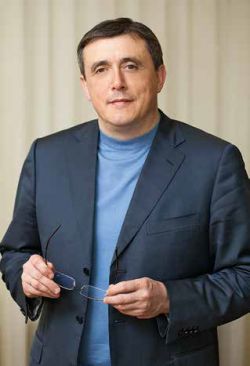 On some extent 2012 is of historical importance for us. That year we made a decision on establishment of NIAEP-ASE Integrated Company. Merger with JSC ASE was carried out in accordance with the NIAEP Strategy adopted in 2010 and the Strategy on Engineering Development in Russia of State Corporation ROSATOM.
On some extent 2012 is of historical importance for us. That year we made a decision on establishment of NIAEP-ASE Integrated Company. Merger with JSC ASE was carried out in accordance with the NIAEP Strategy adopted in 2010 and the Strategy on Engineering Development in Russia of State Corporation ROSATOM.
NIAEP-ASE Integrated Company shall form the basis for development of engineering business of State Corporation ROSATOM. We face the ambitious task of becoming the leading engineering company not only in Russia, but also worldwide. I am confident that our team of highly professional and responsible employees is equal to this task.
Integration of NIAEP advanced expertise in the field of NPP engineering and construction and ASE unique experience in international project management has significantly extended opportunities of our engineering company both on the Russian and global markets. It shall be noticed that our Company has more than 20 generating units, which are designed and constructed both in Russia and abroad.
Our most significant 2012 achievement is the commercial operation of generating unit 4 of the Kalinin NPP which took place on September 25. This achievement in the nuclear industry is of nationwide importance. Currently, Kalinin NPP generating unit 4 is the most advanced one in the territory of Russia. The construction proved that we are capable of keeping projects both on schedule and under budget. The main contributors to this achievement, our colleagues and employees, received state and official awards.
The Company proceeds with construction of units 3 and 4 of the Rostov NPP and units 1 and 2 of the Baltic NPP. Since October 2012 NIAEP-ASE has been the General Designer and General Contractor of the Kursk NPP second stage construction. It is planned to apply the most advanced reactor of VVER-TOI type in the structure of this power plant.
The second stage construction of the Yuzhnouralsk HPP is well under way; commissioning of unit 1 is planned for 2013.
Quite a number of significant events took place on international markets.
NIAEP is an open and transparent company which annually reports on its activity to the interested parties. Year after year we increase the level of reporting. I am proud to announce that in 2009, 2010, and 2012 our Company’s annual reports were recognized the best in the nuclear power industry. This annual public report is prepared to acquaint all interested parties with the detailed results of our activity in 2012.
In the end of the year the reactor start-up of Kudankulam NPP unit 1 in India was launched. Initial concrete placement for Tianwan NPS unit 3 in China took place on December 27.
On July 18, 2012 we signed the general contract on construction of the Belarusian NPP. Under this Contract, the Republic of Belarus will receive a new ready-to-operate nuclear power plant in compliance with all international safety standards.
In 2012 we submitted a bid to the Temelin NPP (Czech Republic) tender.
Our Company has also carried out significant large-scale work on spent fuel and nuclear waste handling at Russian and foreign facilities.
Entering the market as a global engineering company, in our activity we attribute equal importance to innovation, safety, and quality. We actively introduce the Multi-D technology to form the management system on its basis for control over the whole NPP life cycle from designing to decommissioning. This technology enables 3D-modelling of construction and mounting operations with consideration of optimal employment of resources prior to start of actual construction. This technology provides the possibility to proceed to a modeling of design and construction work on the base of a 3D model with the optimized use of resources. Its application reduces duration of construction and cost of projects and simultaneously increases labor productivity, work quality, and safety level at nuclear power facilities. This new technology is utilized for NPP engineering with VVER-TOI reactor.
In 2012 NIAEP arranged International Research and Practice Forums on Multi-D Technology at the Nizhny Novgorod Fare. We are proud to say that the Forum is becoming an inportant platform where world-class experts can share their opinions. Over 600 participants representing nearly 100 companies and 20 countries were registered during the last Forum.
Among our major tasks for 2013 we highlight elaboration of NIAEP-ASE Integrated Company Strategy.
Priority objectives of the Company for 2012–2016 consist in performance of all Investment Program implementation plans declared as of today.
In its activity NIAEP is always guided by sustainable development principles. Human capital is one of the Company’s first priorities. We create new working places fitted out with modern equipment, providing our employees with safe working conditions, respectable salary, and social package and helping them to develop their professional skills and move up the career ladder.
| President of JSC NIAEP |
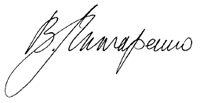 |
V.I. Limarenko |
Message from the Chairman of the Board of Directors of JSC NIAEP
Dear Ladies and Gentlemen!
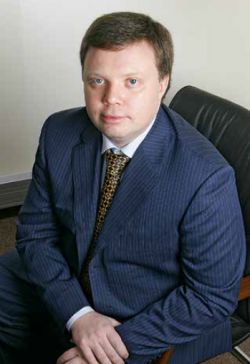
Reviewing the 2012 annual results, the NIAEP Board of Directors is pleased to declare: NIAEP-ASE Integrated Company established one year ago successfully performating the Strategy of State Corporation ROSATOM on Industry-Specific Engineering Development and demonstrates readiness to make fresh gains in Russia, as well as worldwide.
Today, JSC NIAEP is one of the leading engineering companies in Russia. During construction of Kalinin NPP unit 4, commissioned in 2012, JSC NIAEP performed the functions of the General Contractor. Kalinin-4 is the most significant project for the national nuclear power industry which demonstrated high professionalism of Russian nuclear experts. The unit was constructed green field within the time limits set and with considerable cost cutout.
Currently, NIAEP is engaged in construction of units 3 and 4 of the Rostov NPP, units 1 and 2 of the Baltic NPP, and second stage construction of the Yuzhnouralsk HPP and the Kursk NPP. These large-scale projects prove customers’ confidence in the Company and its management.
In 2012 JSC NIAEP acted as Management Company of JSC Atomstroyexport, having successfully accomplished such tasks as full capacity operation of the Bushehr NPP (Iran), preparation for a reactor start-up of the Kudankulam NPP (India), initial concrete placement for Tianwan NPP unit 3 (China), construction site mobilization for the Ostrovets NPP (Belorussia), design and survey work organization at the Akkuyu NPP (Turkey), the Ninh Thuan NPP (Vietnam) and the Ruppur NPP (Bangladesh).
The NIAEP Board of Directors is confident that the Integrated Company will become the center of industry-specific engineering business development. Company’s priorities remain unchanged: quality, innovativeness, efficiency, and safety above all. The high culture of environmental safety is an essential competitive advantage of NIAEP, necessary for successful promotion of domestic nuclear technologies on the world market.
Chairman of the Board of Directors
of JSC NIAEP,
Deputy General Director and
Director of Department for
Development and Global Business of
State Corporation ROSATOM |
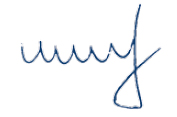 |
K.B. Komarov
|
Key Performance Indices
Table 1. Dynamics of Key Performance Indices for 2010–2013

Interactive analysis
Sales revenue
ths.
- Sales revenue, ths. rub.
- Net profit, ths. rub.
- Workforce productivity, ths. rub./person
- Average number of listed employees, people
- Quantity of power generating units under construction within the accounting period
- Tax deductions to the federal, regional, and local budgets (excluding personal income tax and state duties), ths. rub.
- Social expenditures, ths. rub.
- Internal performance (added value),%
3 2013 indices are of pro forma nature and may change in future.
4 For the purpose of pro forma statement, consolidation exclude subsidiaries and ASE, as the average
number of listed employees for 2013 has not been approved by State Corporation ROSATOM yet.
Key Events Calendar 2012
Key Events Calendar 5
February, 21
• The NIAEP Board of Directors made a decision on establishment of the Belarusian Representation.
February, 24
• The Company launched construction of Baltic NPP unit 1.
March, 14
• A Belorusian delegation headed by the First Deputy Prime-Minister V.I. Semashko visited NIAEP.
March, 20
• The Company launched preparatory work on construction of Belarusian NPP units 1 and 2 in the Republic
of Belarus.
April, 5–6
• A field meeting of the VVER-TOI Project Management Board under the guidance of the Deputy General
Engineering Director of OJSC Rosenergoatom Concern took place in NIAEP.
April, 25
• NIAEP Director V.I. Limarenko was elected to the Russian Board of Employers in Nuclear Power Engineering,
Power Engineering and Science Sector.
April, 30
• Safety systems of Kudankulam NPP unit 1 being constructed by the Integrated Company were successfully
tested.
May, 14
• The Company launched construction of Yuzhnouralsk HPP-2 unit 2.
May, 18
• Bureau Veritas Certification (an independent agency for certification of management systems) completed
recertification audit of the integrated management system (IMS) of ASE, NIAEP Moscow Branch, and
NIAEP Moscow Representation. Upon completion of the audit certificates were issued confirming
compliance of IMS with the requirements of ISO 9001:2008, ISO 14001:2004, and OHSAS 18001:2007.
May, 24
• The NIAEP Board of Directors made a decision on establishment of the Navashino Branch.
June, 14–15
• NIAEP organized the 2nd International Research and Scientific Forum on Life Cycle Management of
Complex Engineering Facilities and Development of Competitive Construction Technologies.
5 The Milestone Schedule Section includes information concerning both the Integrated Company in whole, and NIAEP and ASE separately.
Awards
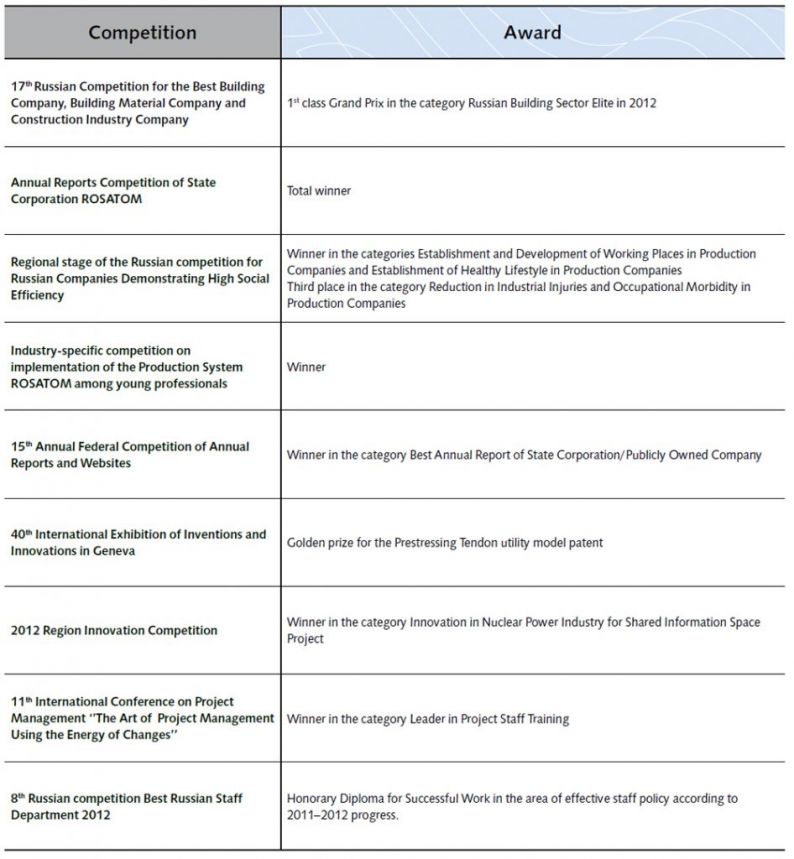
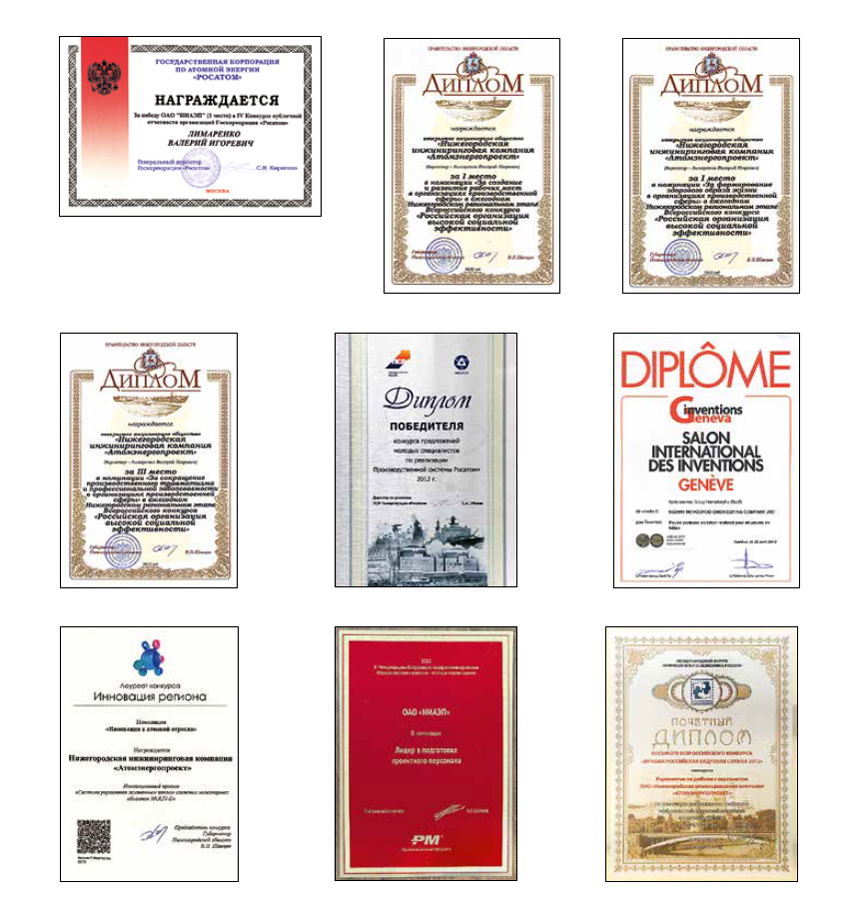
ABOUT OUR COMPANY

Description of Activity
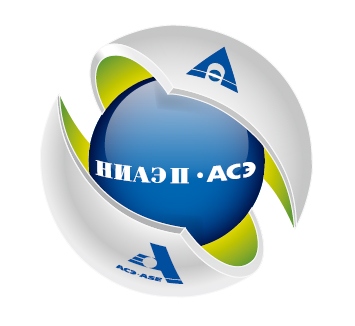
NIAEP-ASE Integrated Company bills itself as the leader in the nuclear power engineering business in Russia. The Company renders services on designing, construction, and decommissioning of complex engineering facilities such as:
- Nuclear power plants abroad;
- Nuclear power plants in Russia;
- Radioactive waste and spent fuel handling units;
- Heat power engineering facilities.
In addition, NIAEP-ASE Integrated Company supplies equipment for complex engineering facilities.
Information on performance results is given in Section 3 Performance Results of Strategic Importance.
Presence Regions
The NIAEP central office is located in Nizhny Novgorod, and the ASE central office in Moscow.
The Company operates in 14 countries: Armenia, Bangladesh, Belarus, Bulgaria, Hungary, Vietnam, India, Iran, China, Russia, Slovakia, Turkey, Ukraine, Czech Republic.
NIAEP Subsidiaries:
- Limited Liability Company Construction and Erection Department No. 1,
- Limited Liability Company Construction and Erection Department No. 2,
- Limited Liability Company Volgodonsk Erection Department.
Affiliates:
- NIAEP Udomlya Branch – Kalinin NPP General Contractor Directorate
- NIAEP Volgodonsk Branch – Rostov NPP General Contractor Directorate
- NIAEP Baltic Branch – Baltic NPP General Contractor Directorate
- NIAEP Yuzhnouralsk Branch
- NIAEP Moscow Branch
- NIAEP Kursk Branch – Kursk NPP General Contractor Directorate
- NIAEP Navashino Branch – Nizhny Novgorod NPP General Contractor Directorate.
Representations:
- NIAEP Moscow Representation,
- NIAEP St. Petersburg Representation,
- NIAEP Volgodonsk Representation,
- NIAEP Kharkov Representation,
- NIAEP Belarusian Representation.
Membership in Associations
- Russian Industrial Federation of Employers in Nuclear Power Engineering, Power Engineering and Science Sector;
- Association of Innovative Designing;
- European Utility Requirements Organization (EUR);
- Self-Governing Organization Non-Commercial Partnership SOYUZATOMGEO Association of Organizations for Engineering Surveys During Architectural and Structural Designing, Construction, Reconstruction, and Capital Repair of Atomic Industry Facilities;
- Self-Governing Organization Non-Commercial Partnership SOYUZATOMSTROY Association of Organizations for Construction, Reconstruction, and Capital Repair of Atomic Industry Facilities;
- Self-Governing Organization Non-Commercial Partnership SOYUZATOMPROEKT Association of Organizations for Architectural and Structural Designing of Atomic Industry Facilities;
- Czech Nuclear Forum.
Historical Background
1951
- Establishment of the Gorkovskoye Department of the Teploenergoproekt Institute. The Institute was mainly engaged in designing of thermal power facilities.
- NIAEP is a successor of the Gorkovskoye Department of the Teploenergoproekt Institute.
1968
- The Institute began to work in the atomic energy industry. A specialized NPP planning and design office was established. The startup project of the office was Armenian NPP.
1976
- Commissioning of Armenian NPP unit 1.
1970–1990
- The Institute designed Kalinin NPP-1 unit 1 and the Rostov NPP. Starting from 1990 NIAEP projects included Armenian NPP-2, the Rostov NPP-2, the Balakovo NPP, and the Novovoronezh NPP-2.
1996
- The Institute entered the international market of NPP designing.
1998
2007
- Federal State Unitary Enterprise NIAEP was transformed into Engineering Company NIAEP operating according to the EPCM model. In accordance with it NIAEP began to perform the whole scope of work on NPP construction on its own.
2011
- NIAEP entered the international market of NPP construction.
2012
- Establishment of NIAEP-ASE Integrated Company. NIEAP became the managing company of ASE.
Activity Environment
Russian NPP Construction Market
Currently, 10 nuclear power plants operate in Russia (total of 33 generating units with design capacity of 24.2 GW) generating about 16% of the total electric energy produced.
Scope and prospects of development of the Russia’s NPP construction market are defined in the Long-Term (2009–2015) Activity Program of State Corporation ROSATOM approved by the Resolution of the Government of the Russian Federation No. 705 of September 20, 2008, and in the General Allocation Scheme of Power Industry Facilities till 2020 approved by the Order of the Government of the Russian Federation No. 215-r of February 22, 2008.
In 2012 four companies acted as general contractors in the market of nuclear-power facilities construction in the Russian Federation:
- NIAEP-ASE Integrated Company;
- Atomenergoproekt;
- SPbAEP;
- Uralenergostroy.
19 NPP generating units are being designed and constructed in the Russian Federation as of the end of year 2012. 10 of them are being constructed by the Integrated Company (see le 1.1).
The share of the Integrated Company in the NPP construction market of Russia amounts to 53% (see Fig. 1.1).
The main customer of the Integrated Company in the Russian market is the Rosenergoatom Concern being the member of State Corporation ROSATOM. State Corporation ROSATOM defines the Russian production distribution market, scope of work and duration of performance thereof.
Information on facilities being constructed and designed is given in Section 3 Performance Results of Strategic Importance.
Table 1.1. Generating Units Being Constructed and Designed in Russia, End of Year 2012

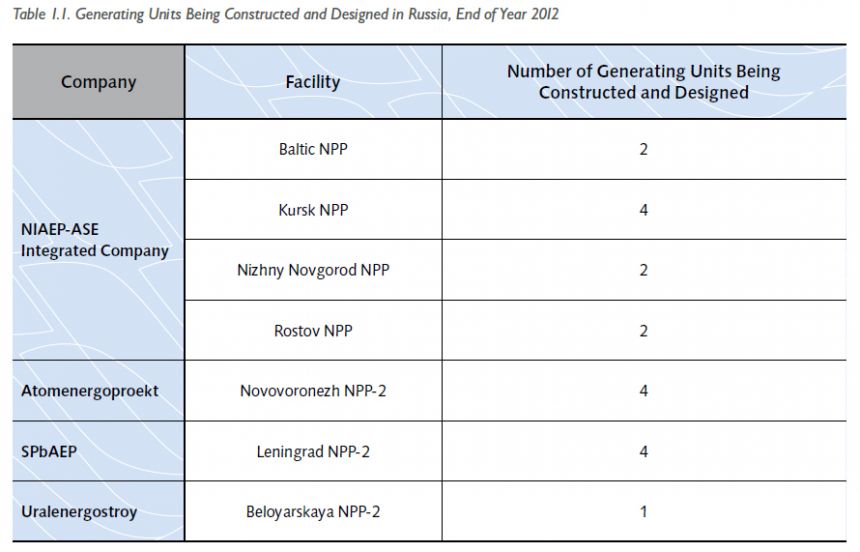
Fig. 1.1. Integrated Company Share in NPP Construction Market of Russia in 2012
International NPP Construction Market

According to the data of the World Nuclear Association (WNA) 6, over 60 generating units are currently at various stages of construction in 13 countries of the world. This estimate is confirmed by the IAEA report of September 9, 2012.
According to the IAEA report, the total NPP generating capacity in the world will increase from 375.3 GW to 501 GW (low scenario) or to 746 GW (high scenario) by 2030. If to assume that the average generating capacity of a reactor equals to 1,000 MW, one may forecast, that 126 generating units will be built under the low scenario and 371 – under the high scenario from 2010 to 2030.
Till 2030 the potential stock of orders of State Corporation ROSATOM in the international markets may amount to 80 generating units (currently, title establishing documents have been signed with regard to 19 generating units, in addition, organizations of State Corporation ROSATOM carry on negotiations and participate in tenders with regard to 21 NPP generating units abroad, 40 generating units afford ground for expansion of Russian companies) (see Fig. 1.2).
The share of the Company in the global NPP design and construction market, including the Russian market, amounted to 33% in 2012, and in the period from 2010 to 2030 this index may reach 30% under the low scenario or 10% under the high scenario.
Information on facilities being constructed or designed abroad is given in Section 3 Performance Results of Strategic Importance.
Fig. 1.2. Potential Market of Projects Abroad
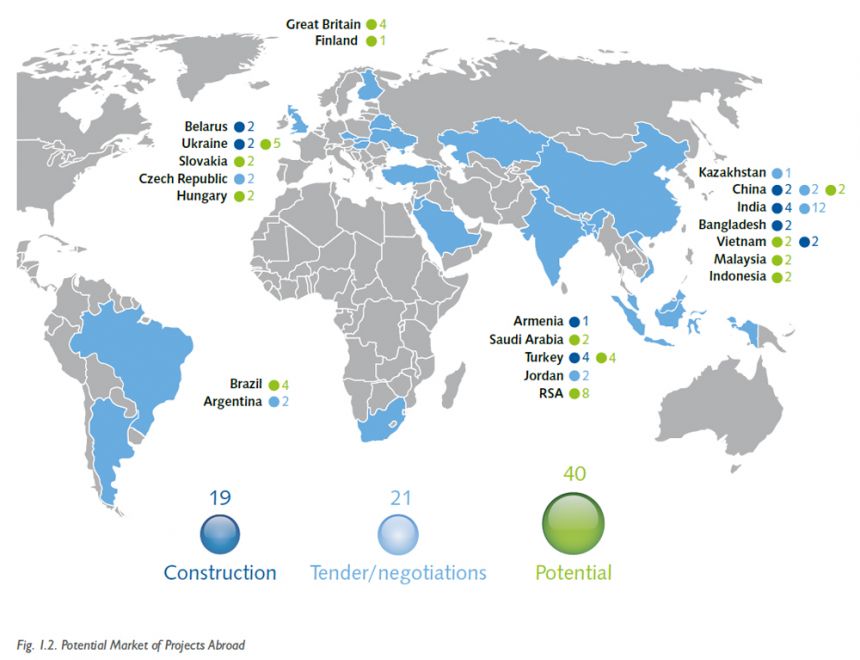
Service Market
Currently, the Integrated Company is rendering services – maintenance and repair, modernization, assets management – for the following nuclear power plants:
- Paks,
- Temelin,
- Bohunice ,
- Tianwan.
An assessment of market opportunities was carried out. Need in competences for rendering services of various types is described in Figure 1.3.
In the services market the Company plans to act as a general contractor of large projects on technical maintenance, repair and modernization, and as a consultant in the field of assets and education management.
Market of Radioactive Waste and Spent Fuel Reprocessing Facilities Construction
The market of facilities construction in the field of radioactive waste and spent fuel reprocessing is divided into two segments: construction of storages for radioactive waste and spent fuel and radioactive waste reprocessing plants. The total potential volume of foreign markets amounts to 348.5 billion dollars (see Fig. 1.4).
Fig. 1.3. Need in Competences for Rendering Services of Various Types
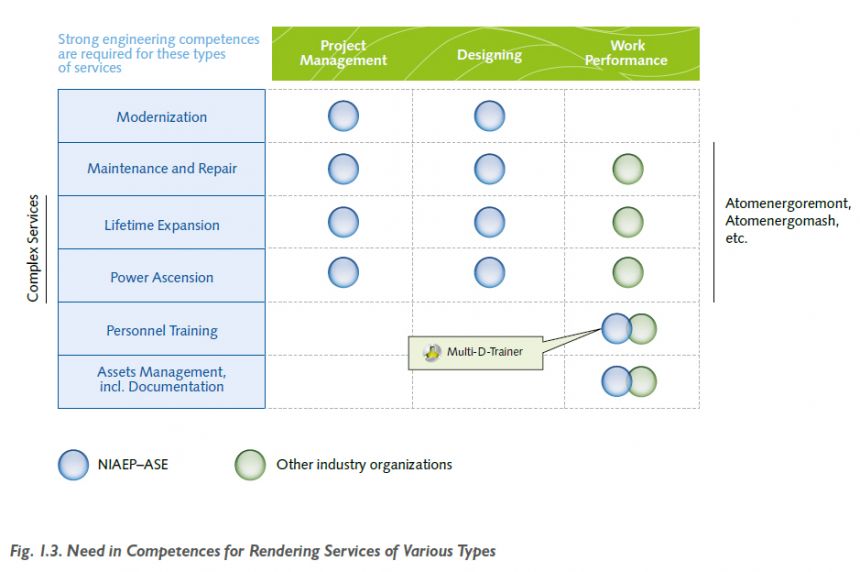
Fig. 1.4. Potentially Available Market in the Field of Radioactive Waste and Spent Fuel Reprocessing
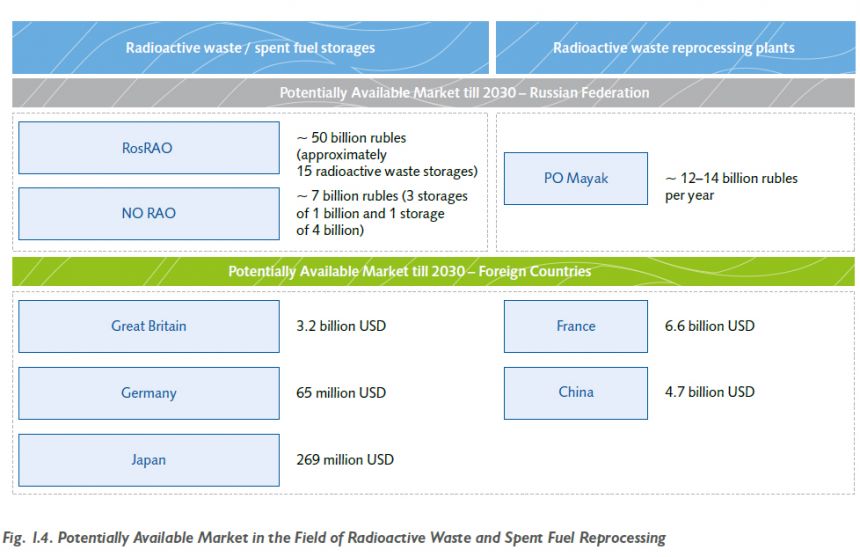
In order to strengthen its market positions, the Integrated Company plans to increase its competencies as a general contractor and designer of radioactive waste and spent fuel reprocessing plants and to establish its own production base.
Market of Thermal Power Plants Construction
Currently, the volume of the Russian thermal power market is rather restricted. The existing projects on construction and commissioning of additional facilities till 2020 are contracted within the Capacity Delivery Agreements (CDA) by various contractors. Commissioning of facilities without CDA requires establishment of an investment support mechanism which has not been yet elaborated. According to Booz & Company 7, from 2012 to 2020 it is planned to commission thermal power stations with a total capacity of up to 10 GW. Till 2030 it is planned to commission 25 to 35 GW, in addition modernization of 7 to 10% of the existing TPP facilities will be required. The current share of the Integrated Company in the TPP construction market amounts to 5 to 7%.
In the conditions of a restricted TPP construction market in Russia the Integrated Company sets the following targets:
- Preservation of the current share in the Russian market;
- Implementation of 3 to 4 projects in 1–2 countries abroad (see Table 1.2).
Table 1.2. Priority Foreign Markets of Ther mal Power Facilities

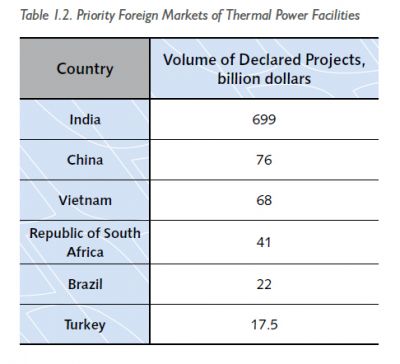
6 See details: http://www.world-nuclear.org/
7 http://www.booz.com
Company video
Company video "NIAEP"
STRATEGY

Mission and Values
Our Mission
Based on our wide experience in implementation of projects in the nuclear power industry, we manage construction of complex engineering facilities, deliver value for the shareholder and provide achievement of shareholder’s goals in the Russian and international markets.
Our Vision
We strive to establish competitive business which successfully implements projects on construction of complex engineering facilities and is directed at maximization of shareholder value.
Our Values

Strategy Overview
Strategy Overview 8
Fig. 2.1. Strategic Initiatives
of State Corporation ROSATOM
in the Engineering Business
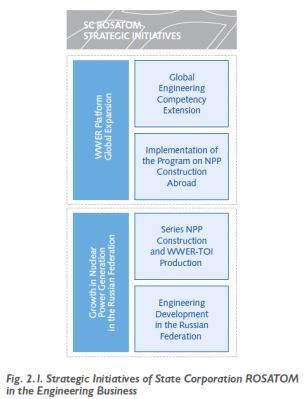 The NIAEP strategy till 2017 was approved by State Corporation ROSATOM and ratified by an order of the NIAEP Directorate in 2010. In the beginning of 2012 the NIAEP strategy was considerably amended in connection with the NIAEP and ASE merger. In 2013 it is planned to elaborate NIAEP-ASE Integrated Company’s strategy in the Russian and foreign markets till 2030. The Integrated Company’s strategy is being elaborated in compliance with the State Corporation ROSATOM schedule and will be approved in 2013 according to the established corporate procedures of the Company and State Corporation ROSATOM.
The NIAEP strategy till 2017 was approved by State Corporation ROSATOM and ratified by an order of the NIAEP Directorate in 2010. In the beginning of 2012 the NIAEP strategy was considerably amended in connection with the NIAEP and ASE merger. In 2013 it is planned to elaborate NIAEP-ASE Integrated Company’s strategy in the Russian and foreign markets till 2030. The Integrated Company’s strategy is being elaborated in compliance with the State Corporation ROSATOM schedule and will be approved in 2013 according to the established corporate procedures of the Company and State Corporation ROSATOM.
Strategic initiatives of the Company define the following approach to business development:
- Development in the main segment of operation: super power low- and medium-powered NPP construction
- Development of promising business segments which it is possible to enter on the basis of existing competencies: construction of facilities comparable to NPP with regard to complexity and scope 9.
The Integrated Company’s strategic initiatives with regard to development in the main segment of operation coincide with the strategic goals of State Corporation ROSATOM as follows: VVER Platform Global Expansion and Growth in Nuclear Power Generation in the Russian Federation (see Fig. 2.1).
Possible strategic development directions of the Integrated Company were outlined in 2012–2013 (see Fig. 2.2).
Fig. 2.2. NIAEP-ASE Integrated Company’s Strategic Development Direction 10
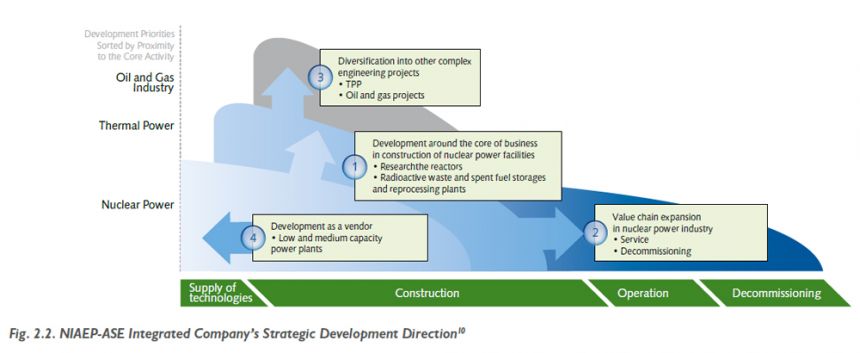
2012 Contribution to Strategy Implementation
In 2012 the Integrated Company performed activity aimed at implementation of the outlined strategic development directions.
1. Development around the core of business in construction of nuclear power industry facilities
- NIAEP-ASE Integrated Company acts as a general contractor and general designer of the Vietnamese Center for Nuclear Science and Technology. We also conduct negotiations on establishment of similar center in the Republic of South Africa.
- In the field of construction of storages and reprocessing plants for radioactive waste and spent fuel the Integrated Company carries out activities in the capacity of:
- - General contractor for construction of radioactive waste and spent fuel storage facilities and radioactive waste reprocessing plants;
- - Engineering and technology expert in back-end;
- - Equipment manufacturer and construction and mounting expert in the field of radioactive waste and spent fuel.
The strategic goal in this direction consists in Company development as a general contractor for construction of radioactive waste and spent fuel handling facilities with own production base and competencies in designing.
Information on performance within this strategic direction is given in Chapter 3.1. Development around the Core of Business in Construction of Nuclear Power Industry Facilities.
2. Value chain expansion in nuclear power industry
- In 2012 the Integrated Company performed operations on turnkey NPP construction and decommissioning of nuclear power equipment.
- In 2012 the Integrated Company rendered services at the Paks, Temelin, Bohunice, and Tianwan NPPs. The strategic goal within this direction consists in positioning of the Company as a general contractor for service operations and modernization and as an assets management consultant.
Information on implementation of this strategic direction is given in Chapter 3.2. Value Chain Expansion in Nuclear Power Industry.
3. Diversification into other complex engineering projects
- The Integrated Company has extensive experience in implementation of turnkey projects in the field of thermal power. In 2012 the Company completed construction of the Nevinnomysskaya TPP. The target vision in this direction is positioning of the Integrated Company in the capacity of a general contractor for TPP modernization and construction.
- An important direction of the Integrated Company’s strategic development consists in entering the market of oil and gas facilities construction. Currently, the Company considers the prospects of this market access. Taking into account the existing competencies, the Company may act in the capacity of a contractor with regard to some elements of work and thus participate in projects in cooperation with its partners.
Information on implementation of this strategic direction is given in Chapter 3.3. Diversification into Other Complex Engineering Projects.
4. Development as a vendor
- The Integrated Company’s activity is focused on construction of power plants. The Company is highly competent in turnkey NPP construction both in Russia, and abroad. In 2012 24 generating units abroad and 9 generating units in Russia were designed and constructed by the Company.
Information on implementation of this strategic direction is given in Chapter 3.4. Development as a Vendor.
8 It shall be noted that the Integrated Company’s strategy has not been approved yet and an overview of the planned strategic vision of the Company is given in this Report.
9 Nuclear power facilities (including back-end), TPP, LNG plants, oil refinery plants, oil platforms, oil and gas pipelines, RLNG terminals.
10 The outlined directions of strategic development of the Integrated Company are not approved and final and they can be changed in the process of further work on the Integrated Company’s Strategy elaboration.
Public Positions Concerning Sustainable Development
Public Positions Concerning Sustainable Development 11
The Company understands sustainable development as a system of successive social, economic and environmental activities making a contribution to achievement of the Company’s strategic goal together with far-sighted use of resources, workforce capacity development, and focus on scientific and technical growth.
The Integrated Company introduces principles of sustainable development into its activity taking into account current world nuclear power challenges.
The Company’s Management outlines 7 directions forming the Company’s public position in the field of sustainable development:
- Safety and quality;
- Staff development;
- Innovative activity;
- Contribution to economic development of regions of operation;
- Social responsibility;
- Environmental protection;
- Transparency and accountability.
Safety and Quality
Safety and quality are the main characteristics of facilities built by the Integrated Company. In its activity the Company strictly complies with all regulatory requirements for safety established at international, national and industrial levels.
Operational safety of NPP and other facilities depends on quality of work performance at all stages of construction. The Company guarantees high level of quality, reliability and safety of the facilities constructed by it. The Company applies the Quality Management System based on the principles of the Overall Quality Management reflected in the international ISO 9000 standards. NIAEP imposes the highest requirements for the necessary level of safety to its suppliers and contractors and strictly controls the quality of work, equipment and materials.
Detailed information is specified in Chapter 7.4.5. Nuclear and Radiological Safety of Nuclear Power Facilities.
Staff Development
The Company operates in an innovative high-tech market imposing higher requirements for the level of competence of the professional team. Due to this it is important to involve the best specialist of the industry and constantly improve knowledge and skills in all key aspects necessary for implementation of our projects.
The Company provides high level of remuneration and invests significant funds in staff development. The main principles in the field of staff management of the Company include impartial assessment of professional contribution of each employee, opportunity of advancement and interdependency of remuneration level with the employee’s performance results.
Information on the Company’s effectiveness in the field of staff development is given in Chapter 7.3. Human Capital.
Innovative Activity
Technical development of the Company is based on innovative approaches to management of NPP generating units designing and construction by means of modern information technologies.
The Company attaches equal importance to the level of technological and innovative development of its partners. Aiming at collaborative innovative development with its partners, the Company established the Innovative Designing Association.
Information about innovative projects is given in Section 6. Introduction of Innovations.
Contribution to Economic Development
Implementing large-scale projects important for the economy of the regions of operation, the Company realizes its responsibility for establishment of conditions for social and economic development of these regions.
The Company’s activity leads to creation of new jobs in the regions of its operation both for suppliers, and for equipment and materials manufacturers.
Information about the Company’s effectiveness in the field of contribution to economic development is given in Chapter 7.5. Social and Economic Capital.
Social Responsibility
Sustainable development of the Integrated Company directly depends on public acceptance of the activity on construction of nuclear power facilities. The Company lays special emphasis on social stability factor and sees social responsibility as one of the key principles of its activity.
Social influence of the Company is brought both at the internal (staff), and internal levels (local communities).
The collective agreement specified the NIAEP obligations as an employer in the field of social guarantees and benefits to employees.
Information on social responsibility of the Company is given in Chapter 7.3.3. Social Policy and Chapter 7.5. Social and Economic Capital.
Environmental Protection
The maximum impact of the Company’s activity on the environment is exerted during construction of generating units.
In order to control the environmental impact of the Company’s production activity, we elaborate the necessary documents on environmental safety, plans of activities on reduction of waste generation and disposal.
NIAEP complies with the regulations of the environmental legislation, hence, is not subject to punitive sanctions.
Information about the Company’s environmental impact is given in Chapter 7.4. Natural Capital.
Transparency and accountability
Within the frames of its core activity the Company is responsible to its shareholders for performance of investment obligations. In addition, different requirements are imposed to the Integrated Company by the key interested parties, including regional authorities, local self-governing authorities, business partners and local communities. Effective cooperation with the interested parties includes assessment of their expectations and definition of the Company’s reciprocal position, as well as taking their expectations into account in corporate policies, development strategy and current activity whenever reasonable.
The Company strives to establish long-lasting and mutually beneficial relations with interested parties, respects their opinion, guarantees fulfillment of its obligations, and demands the same from the interested parties.
The Company undertakes to inform the interested parties on all aspects of its activity important for them, including public reporting mechanism.
Information on fulfillment of the transparency and accountability principles in the Company’s activity is given in Chapter 7.6. Relations with Interested Parties.
11 The Company’s public position in the field of sustainable development is described in detail in the JSC NIAEP 2011 Annual Report.
PERFORMANCE RESULTS OF STRATEGIC IMPORTANCE

Development around the Core of Business in Construction of Nuclear Power Industry Facilities
Research Reactors
Table 3.1. Projects on Construction
of Radioactive Waste and Spent
Fuel Storages and Reprocessing Plants

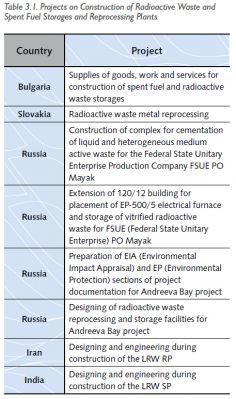
In 2012 the Integrated Company participated in construction of a research reactor in Vietnam.
Vietnam. Nuclear Science and Technology Center (NSTC)
Project description. In 2011 Russia and Vietnam concluded the Intergovernmental Agreement on Construction of the Nuclear Science and Technology Center for (NSTC) in Vietnam. ASE was appointed the project’s general contractor. NSTC construction is planned for the period from 2014 to 2019.
2012 results. In 2012 the Russian party elaborated the Materials for Preliminary Feasibility Study on the Nuclear Science and Technology Center (NSTC) in the Socialist Republic of Vietnam, which was submitted to the customer on November 21, 2012.
2013 arrangements:
- Approval of a site for laboratory with non-reactor technologies;
- Conclusion of the contract on FS-JOI elaboration.
Radioactive Waste and Spent Fuel Storages and Reprocessing Plants
In 2012 the Integrated Company carried out work within 8 projects on construction of storages and reprocessing plants for radioactive waste and spent fuel (see Table 3.1).
Bulgaria. Supplies of Goods, Work and Services for Construction of Spent Fuel and Radioactive Waste Storages
Project description. The project is executed within the partnership agreement concluded between the Integrated Company and Risk Engineering Ltd. (Bulgaria). Risk Engineering Ltd. is the customer of the project. NIAEP-ASE Integrated Company acts as the general contractor.
2012 results. The following work was performed: supplies of goods, work and services required for construction of spent fuel and radioactive waste storages, supplies of containers for spent fuel and radioactive waste transportation and storage and systems for transportation of containers, supplies of units, systems and plants for radioactive waste reprocessing, transportation, storage and burial, and rendering of services on NPP decommissioning, including designing, procurement of equipment (instruments and mechanisms), and deactivation and demounting services.
Slovakia. Radioactive Waste Metal Reprocessing
Project description. In March 2008 ASE signed a contract with the customer of the project, YAVIS Ltd. (Slovakia). The Integrated Company is the general contractor of the project. The contract does not stipulate for completion date.
2012 results. Import of radioactive waste metal to the territory of the Russian Federation for reprocessing is forbidden, due to this contractual work was suspended, in order to find ways for fulfillment of obligations.
Russia. Construction of Complex for Cementation of Liquid and Heterogeneous Medium Active Waste for FSUE PO Mayak
Project description. In July 2008 ASE concluded contract with the customer of the project, State Corporation ROSATOM. The Integrated Company performs work on a turnkey basis. It is planned to complete work in December 2013.
2012 results. The following work within the project was completed in 2012:
- Mounting of utility networks, heavy process equipment, ventilation and heating systems;
- Building inner finish;
- Mounting work and supply of additional equipment ordered by the customer at the end of 2011;
- Casting of foundation plates for radioactive waste storage;
- Mounting of metal structures (lining of compartments) for main construction facilities;
- Energy utilities construction;
- External lines arrangement;
- Mounting of concrete reinforcement of the process building and corrosion-resistant lining;
- Erection of cast-in-situ walls and floors;
- Mounting of heavy equipment.
Further plans under the project include completion of work, signing of work completion certificate, and, later on, fulfillment of obligations within the guarantee period.
Russia. Extension of 120/12 Building for Placement of EP-500/5 Electrical Furnace and Storage of Vitrified Radioactive Waste for FSUE PO Mayak
 Project description. The project is executed within the intergovernmental agreement concluded between Russia and Italy and stipulating for cooperation in the field of disposal of Russian nuclear submarines decommissioned from the naval forces and safe handling of radioactive waste and spent fuel. The agreement was concluded on November 5, 2003. Work is performed on a turnkey basis. The customer of the project is State Corporation ROSATOM. Contractual work was launched in October 2010, it is planned to complete the project in December 2013. The total cost of the project amounts to 1,552,163 thousand rubles. The project is financed from federal budget resources of the Russian Federation within implementation of the Federal Target Program on Nuclear and Radiation Safety in 2008 and up to 2015.
Project description. The project is executed within the intergovernmental agreement concluded between Russia and Italy and stipulating for cooperation in the field of disposal of Russian nuclear submarines decommissioned from the naval forces and safe handling of radioactive waste and spent fuel. The agreement was concluded on November 5, 2003. Work is performed on a turnkey basis. The customer of the project is State Corporation ROSATOM. Contractual work was launched in October 2010, it is planned to complete the project in December 2013. The total cost of the project amounts to 1,552,163 thousand rubles. The project is financed from federal budget resources of the Russian Federation within implementation of the Federal Target Program on Nuclear and Radiation Safety in 2008 and up to 2015.
2012 results. The following work was completed in 2012:
- Extension girder construction and reinforcement for EP-500/5 placement;
- Pile field driving for radioactive waste storage;
- Territory improvement;
- Removal of existing utility networks from the construction site.
- Extension frame erection for EP-500/5 placement and radioactive waste storage;
- Partial supply of process equipment.
Further plans under the project include completion of work on mounting of frame structures of the storage, completion of work on cast-in-situ structures, first-stage supply of nonstandard equipment; in the longer term: completion of work in 2015, fulfillment of obligations within the guarantee term.
Russia. Preparation of EIA and EP Sections of Project Documentation for Andreeva Bay Project
Project description. The Project is executed within the intergovernmental agreement concluded between Russia and Italy and stipulating for cooperation in the field of disposal of Russian nuclear submarines decommissioned from the naval forces and safe handling of radioactive waste and spent fuel. In 2010 for performance of work under the project ASE and the Federal State Unitary Enterprise Federal Nuclear and Radiation Safety Center (FSUE FNRSC) signed contract on elaboration of EIA and EP sections of project documentation. The customer of the project is FSUE FNRSC. It is planned to complete the project in June 2013. The scope of responsibility of the Integrated Company includes coordination of the Russian subcontractors during designing, supply and construction of radioactive waste reprocessing and storage plants at the Andreeva Bay facility.
2012 results. The project documentation including EIA and EP sections for radioactive waste reprocessing and temporary storage plants was elaborated in the reporting year.
Further plans under the project include completion of work, fulfillment of obligations within the guarantee term.
Russia. Designing of Radioactive Waste Reprocessing and Storage Facilities for Andreeva Bay Project
Project description. The goal of the project consists in establishment of infrastructure for radioactive waste disposal in the territory of the former technical base of naval forces. In February 2011 the contract was concluded between ASE and Ansaldo Nucleare (Italy) on elaboration of the Andreeva Bay project documentation. The project is executed within the intergovernmental agreement concluded between Russia and Italy and stipulating for cooperation in the field of disposal of Russian nuclear submarines decommissioned from the naval forces and safe handling of radioactive waste and spent fuel. The customer of the project is Ansaldo Nucleare. It is planned to complete the work in June 2013. The scope of responsibility of the Integrated Company includes coordination of the Russian subcontractors during designing, supply and construction of radioactive waste reprocessing and storage plants at the Andreeva Bay facility.
2012 results. In 2012 the project documentation including EIA and EP sections was elaborated for radioactive waste reprocessing and temporary storage plants at the Andreeva Bay facility.
Further plans under the project include completion of work, fulfillment of obligations within the guarantee term.
Iran. Designing and Engineering during Construction of the LRW Reprocessing
Plant (LRW RP)
Project description. Since 2008 the Integrated Company has performed design elaboration and field supervision of equipment manufacturing for the LRW reprocessing plant (LRW RP) within the frames of the contract on construction of the Bushehr NPP first generating unit. The customer of the project is the Nuclear Power Production and Development Company of Iran, the general contractor is NIAEP-ASE Integrated Company.
2012 results. In the reporting year the Integrated Company completed mounting and start-up operations on establishment of the LRW reprocessing plant. We proceeded with LRW RP commissioning and launching of operation under design conditions.
Further plans under the project include LRW RP commissioning, field supervision of integrated testing and commissioning, correction of maintenance and construction documentation according to the results of start-up operations, field supervision of LRW casks manufacturing, staff training, and fulfillment of obligations within the guarantee term.
India. Designing and Engineering during Construction of LRW Solidification Plant
Project description. Since August 2008 the Integrated Company has elaborated design of the liquid radioactive waste solidification plant (LRW SP) and performed field supervision of equipment manufacturing within the contract on construction of Kudankulam NPP generating units 1 and 2. Work is carrying out under the internal order within fulfillment of obligations under the contract on construction of Kudankulam NPP generating units 1 and 2. The project customer is Atomic Energy Corporation of India, LTD. It is planned to complete the project in 2013.
2012 results. The Integrated Company has carried out mounting, start-up and commissioning of the cementation plant (CP), concentrating facility (CF) units, and CP and CF I&C systems.
Further plans under the project include commissioning of LRW SP, field supervision over mounting, start-up, integrated testing and commissioning, correction of maintenance and construction documentation according to start-up results, and staff training.
International Cooperation in the Field of Radioactive Waste and Spent Fuel Handling
Working group was established, including specialists of ASE, Nukem Technologies (Germany) and the Russian Federal Nuclear Center – the Russian Research Institute of Experimental Physics (RFNC – VNIIEF), for consolidation of efforts in introduction of joint concept on arrangement of centralized long-term storage of the Russian nuclear power stations’ spent fuel assembly at FSUE GKH with application of cask storage technologies.
In June 2011 ASE and RFNC – VNIIEF signed the agreement on strategic partnership in the field of spent nuclear fuel handling. OJSC State Specialized Planning Institute (SSPI), OJSC SverdNIIKhimmash, NUKEM Technologies, ASE and NIAEP concluded the agreement on cooperation during turnkey execution of projects in the field of decommissioning of nuclear and radiation dangerous facilities (DNRDF), and spent fuel and radioactive waste handling. Cooperation is aimed at competitive growth, accumulation of competencies and creation of opportunity for distribution of experience in Russia, as well as further entrance to the global market. The partners have experience and competence in the following fields:
- OJSC SSPI – performance of project and construction operations for the needs of the nuclear industry of Russia;
- OJSC SverdNIIKhimmash – elaboration, manufac-turing and supply of equipment for nuclear power plants and fuel cycle facilities;
- NUKEM Technologies – technologies and equipment for DNRDF and spent fuel and radioactive waste handling;
- ASE – construction of nuclear power plants with reactors of Russian design and turnkey construction of nuclear facilities and units on the basis of EPCM model;
- NIAEP – construction and commissioning of nuclear power plants in Russia and abroad.
Value Chain Expansion in Nuclear Power Industry
Service
The Integrated Company rendered services for the following nuclear power plants: Paks, Temelin, Bohunice, and Tianwan.

Hungary. Paks NPP, Generating Units 1 to 4
Project description. The Company performs work within execution of the long-term framework contract concluded with CJSC Paks NPP for supply of equipment and components to provide operation of Paks NPP units 1 to 4. The current framework contract is in force from 2011 to 2014.
2012 results. In 2012 the Company fulfilled obligations in accordance with the contract. The scope of work performed amounted to 20.55 million rubles. The annual work plan was fulfilled 100 percent.
2013 arrangements. Plans for 2013 include rendering of consultation services under the executed contracts.
Czech. Temelin NPP, Generating Units 1 and 2
Project description. The work is carried out on the basis of three indefinite-term contracts for rendering of engineering and consultation services during NPP operation concluded with CEZ a.s.
2012 results. In 2012 the Company fulfilled obligations in accordance with the contract. The scope of work performed amounted to 5.89 million rubles. The 2012 annual work plan was fulfilled at 100%.

2013 arrangements. Plans for 2013 include rendering of consultation services under the executed contracts.
Slovakia. Bohunice NPP, Generating Units 3 and 4
Project description. The Company performed work on modernization of the Bohunice NPP within the guarantee obligations. Service operations under the project started in 2002. The scope of responsibility of the Company included replacement of NFCE systems, and in the period from 2008 to 2012 work within the guarantee obligations.
2012 results. The Company performed obligations in accordance with the concluded contracts. 2012 the guarantee obligations under the project were completely fulfilled.
2013 arrangements. Work under the project is completed; no plans are scheduled for 2013.
China. Tianwan NPP, Generating Units 1 and 2

Project description. The facility was commissioned in 2007. In 2011 the contract was concluded on substantiation of opportunity to increase the time between overhaul of the equipment, systems and pipelines of Tianwan NPP units 1 and 2 during transition to an 18-month fuel cycle from a 12-month one. The work completion time is 2013. In addition, in 2011 JNPC and the Company signed the contract on extraction of surveillance specimen from the reactor body by means of MP394 manipulator with attraction of specialists of OJSC NIKIMT-Atomstroy.
2012 results. In 2012 the Company performed obligations in accordance with the concluded contracts.
2013 arrangements. Plans for 2013 include contract completion and provision of a rational for change-over on 18-month-long cycle and also rendering of consultation services under the executed contracts.
Decommissioning
In 2012 the Integrated Company carried out work on 2 projects in 2 countries (see Table 3.2) within rendering of decommissioning services.
Table 3.2. Projects on Decommissioning of Nuclear Industry Facilities as of February 20, 2012


Ukraine. Second-Stage Construction of New Ventilation Pipe and Auxiliary Systems of the Chernobyl NPP
 Project description. The project is executed within operations on Object Shelter (sarcophagus) of the Chernobyl NPP. For participation in the tender on performance of work within this project the Shelter consortium was established (ASE, being the leader, and PJSC Ukrenergomontazh). Conclusion of a design contract between the Shelter consortium and the state specialized enterprise Chernobyl NPP is scheduled for 2014. The customer of the project was the International Fund Shelter. Work under the project was launched in July 2010; completion of work is scheduled for September 2013. The total cost of the project amounts to USD 9,361,382.
Project description. The project is executed within operations on Object Shelter (sarcophagus) of the Chernobyl NPP. For participation in the tender on performance of work within this project the Shelter consortium was established (ASE, being the leader, and PJSC Ukrenergomontazh). Conclusion of a design contract between the Shelter consortium and the state specialized enterprise Chernobyl NPP is scheduled for 2014. The customer of the project was the International Fund Shelter. Work under the project was launched in July 2010; completion of work is scheduled for September 2013. The total cost of the project amounts to USD 9,361,382.
2012 results. Work on construction of vent pipe was completed. We also proceeded with mounting of radiation control systems and auxiliary systems at the Chernobyl NPP.
Further plans under the project include completion of work, signing of work completion certificate; and later on fulfillment of obligations within the guarantee period.
 Bulgaria. Supply of LRW Reprocessing Plant for the Kozloduy NPP
Bulgaria. Supply of LRW Reprocessing Plant for the Kozloduy NPP
Project description. The project is executed within the frames of international program on decommissioning of units 1, 2, 3 and 4 of the Kozloduy NPP, Bulgaria. The project is aimed at treatment of water discharged to Danube and formed during decommissioning of the generating units. In 2004 the contract was signed within the tender of the European Bank for Reconstruction and Development, in 2005 project plan was elaborated, and supply of the equipment was completed in 2009.
2012 results. Test operations regarding the project are finished. The liquid radioactive waste reprocessing plant is commissioned.
Further plans under the project include fulfillment of obligations within the guarantee term (guarantee term expires in 2014).
Diversification into Other Complex Engineering Projects
Table 3.3. List of TPP Generating
Units Being Constructed and Designed by
the Integrated Company, and Status of Work

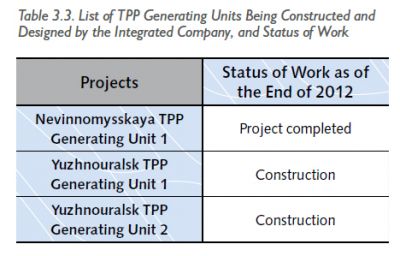 Further plans under the project include fulfillment of obligations within the guarantee term (guarantee term expires in 2014).
Further plans under the project include fulfillment of obligations within the guarantee term (guarantee term expires in 2014).
In 2012 the Integrated Company carried out construction of two thermal power plants: the Nevinnomysskaya TPP and the Yuzhnouralsk TPP (see Table 3.3).
Stavropol Territory. Nevinnomysskaya TPP
Project description. In 2008 OJSC OGK-5 and the consortium of ENEL Produzione S.p.A. and ASE signed the contract on management of engineering, procurement and construction of the generating unit of the combined cycle gas turbine plant (CCGTP) with a capacity of 410 MW on the site of the Nevinnomysskaya TPP. The consortium executed this project on the basis of EPCM model. The scope of responsibility of the Integrated Company within this project included performance of engineering survey on the site, preparation of feasibility study (FS) and working design estimate specification (DES), supply of accessories, general construction operations (including supply of building materials), mounting of the equipment, assistance in start-up of the generating unit equipment, and modernization of high-voltage 330 kV substation on a turnkey basis. The customer of the project was OJSC OGK-5.
2012 results. Construction of the second, third and fourth start-up facilities was completed. The power plant construction was finished in due course. Consortium prepared, signed and passed to the customer the End Facility Acceptance Certificate and the Certificated of End Facility Acceptance by the Acceptance Committee. In 2012 the profit with respect to the project amounted to nearly 20.7 million USD excluding VAT.
2013 arrangements. Signing of the specified certificated by the customer is scheduled for 2013.
Chelyabinsk Region. Yuzhnouralsk TPP-2
Project description. In 2009 ASE and OJSC OGK-3 signed the contract on construction of energy complex of Yuzhnouralsk TPP-2 on the basis of the EPC model. The customer of the project is OJSC OGK-3. According to the technical solution of the customer, the energy complex of the Yuzhnouralsk TPP-2 is a condensate combined cycle power plant (CCCPP) including three generating units with a capacity of 400 MW each with additional structures and utility lines. ASE put forward a proposal on construction of three 415 MW single-shaft generating units on the basis of Siemens Power Island (gas turbine power plant, steam turbine power plant, and generator) and three-loop waste-heat recovery unit.
2012 results:
Generating Unit 1
In 2012 start-up operations were carried out and 90 percent completed by the end of the year. 2012 the profit with respect to the project amounted to nearly 12 billion rubles excluding VAT.
Generating Unit 2
On May 14, 2012 the general contractor contract was signed. 80 percent of working documentation was prepared by the end of the reporting period. In addition, in 2012 operations of the preparatory stage were fulfilled including vertical leveling, commissioning of temporary electricity supply, construction of motor highway and administrative building, arrangement of main building pit, foundations for main building structures, waste-heat recovery unit and smoke stack, mounting of main building metal structures. In 2012 the profit with respect to the project amounted to nearly 173 million rubles excluding VAT.
2013 arrangements:
Generating Unit 1
In 2013 it is planned to completed start-up and commissioning of the unit (planned date of commissioning September 30, 2013). Final completion of project operations is scheduled for October 2013.
Generating Unit 2
The main tasks for 2013 include completion of the main building thermal envelope (by the end of December), supply and mounting of the Power Island equipment. In 2013 it is planned to complete main construction operations, major part of work on equipment mounting, and to launch start-up.
Development as a Vendor
NPP Construction Abroad
In 2012 the Integrated Company performed operations on designing and construction of generating units of nuclear power plants in India, Iran, Belarus, Slovakia, Turkey, China, Ukraine, Vietnam and Bangladesh (see Table ).
This included construction of 7 generating units as follows: Bushehr NPP generating unit 1; Kudankulam NPP generating units 1 and 2; Belarusian NPP generating units 1 and 2; and Tianwan NPP generating units 3 and 4.
Table 3.4. List of NPP Generating Units Being Constructed and Designed by the Integrated Company Abroad, and Status of Work

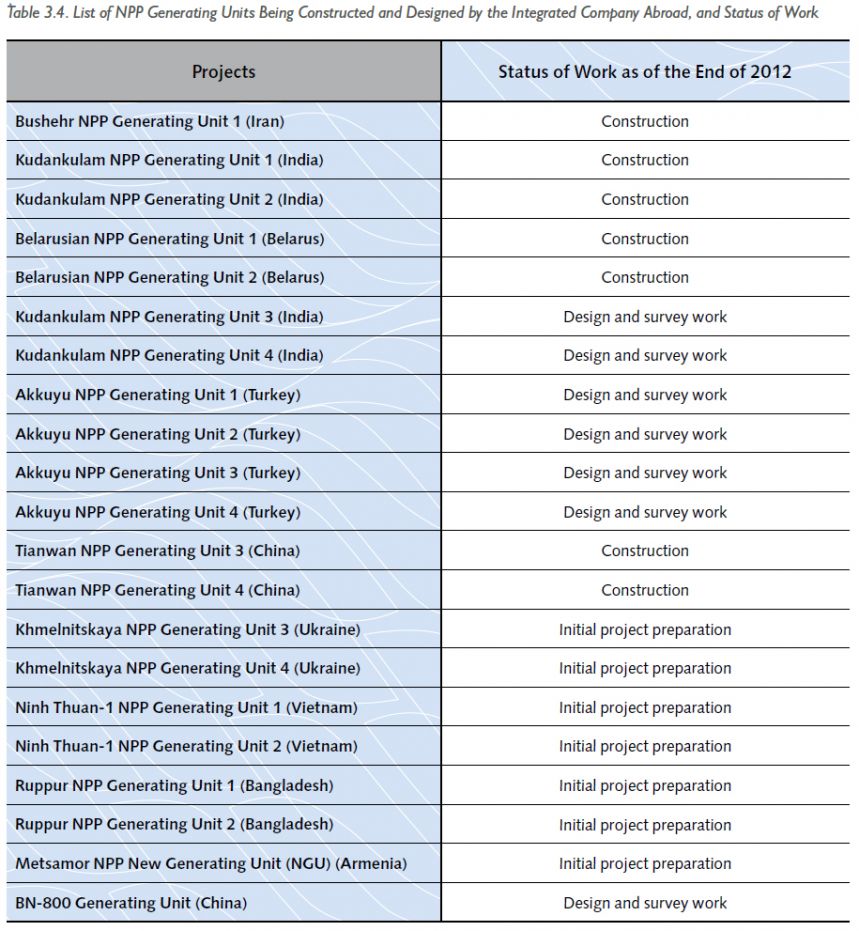

Iran. Bushehr NPP, Generating Unit 1
Project description. In 1976 the contract was concluded with the German trust Kraftwerk Union A. G. (Siemens/KWU) on construction of Bushehr NPP generating unit 1. The project construction was launched in 1995. The Customer of th
e project was the Atomic Energy Organization of Iran (AEOI). In October 2010 ASE obtained the license for NPP commissioning. The scope of responsibility of the Integrated Company in respect of this project includes commissioning.
The Bushehr NPP is constructed on the basis of VVER-446 project; all operations are carried out in accordance with the international standards, legislation, and non-proliferation regime, and are controlled by IAEA. It is planned to complete the project in 2015.
2012 results. 52 percent of annual work plan was completed according to the Bushehr NPP construction schedule. As of December 31, availability of Bushehr NPP generating unit 1 amounted to 99.85%, and the contribution of 2011 to the level of the project availability was only 0.16%. On August 30, 2012 Bushehr NPP generating unit 1 was launched at 100% of design capacity.
2013 arrangements. Field trial of the unit is scheduled for 2013.
India. Kudankulam NPP, Generating Units 1 and 2
Project description. In accordance with the cooperation agreement on construction of a nuclear power plant in India signed 1988 between the USSR and the Republic of India, the Russian Federation renders technical support to India in construction of two generating units of the Kudankulam NPP with VVER-1000 reactor units. It is planned to construct a total of 6 generating units at this NPP. In 2001 designing work was launched, in 2002 construction began.
After consolidation of NIAEP and ASE, execution of the Agreement on Construction of Kudankulam NPP Units 1 and 2 is performed by the Integrated Company on the Russian part and the Nuclear Power Corporation of India Limited (NPCIL) on the Indian part. The customer of the project is NPCIL.
The scope of responsibility of the Integrated Company within the project includes elaboration of project, start-up and maintenance documentation, supply of equipment and materials, rendering technical support during NPP construction, mounting and commissioning, as well as training of Indian staff.
 2012 results. In 2012 construction of generating units 1 and 2 was carried out at the Kudankulam NPP. The work plan on construction of the generating units was completed 100 percent. Availability of generating unit 1 amounted to 100% and of generating unit 2 to 98%. Contribution of the reporting period to the project availability is 2 to 3%. The volume of work performed amounted to 51 million USD. The following results were achieved in the reporting period:
2012 results. In 2012 construction of generating units 1 and 2 was carried out at the Kudankulam NPP. The work plan on construction of the generating units was completed 100 percent. Availability of generating unit 1 amounted to 100% and of generating unit 2 to 98%. Contribution of the reporting period to the project availability is 2 to 3%. The volume of work performed amounted to 51 million USD. The following results were achieved in the reporting period:
- Work on generating unit 1 in accordance with the 2nd revision program completed;
- Work on generating unit 1 in accordance with the reactor start-up program launched;
- Process systems of generating unit 2 washed and hydro-tested;
- Functional testing of equipment of generating unit 2 started.
2013 arrangements. The expected 2013 contribution to the level of project availability is 2 percent. The following types of operations are scheduled for 2013:
- Launch of generating unit 1 at minimum controllable power;
- Synchronization and first network connection of the unit 1 generator;
- 50, 75, and 100% power testing of generating unit 1;
- Operations on the program of hydraulic testing and circulation flushing on generating unit 2;
- Hot operational testing of generating unit 2;
- Launch of operations within the reactor start-up program on generating unit 2.
Generating Units 3 and 4
Project description. Generating units 3 and 4 of the Kudankulam NPP will be also designed on the basis of VVER-1000 platform. The scope of responsibility of the Integrated Company within this project includes designing, supply of equipment and delegation of specialists for technical support.
2012 results. In 2012 initial project work was carried out including adjustment of technical and commercial proposal and conclusion of general framework agreement with the project customer.
2013 arrangements. Designing of generating unit 3 is scheduled for 2013. The key activities scheduled for 2013 include:
- Final approval of the technical and commercial proposal for construction of Kudankulam NPP generating units 3 and 4;
- Conclusion of the General Framework Agreement.
Belarus. Belarusian NPP. Generating Units 1 and 2
Project description. In 2011 the intergovernmental agreement was concluded between Russia and Belarus onconstruction of the Belarusian NPP. According to the agreement, ASE was appointed general contractor of the Belarusian NPP construction project, and the State Enterprise Nuclear Power Plant Construction Directorate (GU DSAE) acted as the customer. The Belarusian NPP will include two generating units with VVER-1200 reactors (V-491) with a capacity of up to 1,200 MW each. The gross installed capacity will amount to 2,400 MW. The commissioning of generating unit 1 is scheduled for 2018 and of unit 2 for 2020.
2012 results. In 2012 work was launched on designing of the Belarusian NPP. By the end of the year, 963 people worked on the project, number of construction machines engaged amounted to 260 units. By the end of 2012, availability of the project equaled to 10 percent, and 65% of the project documentation was elaborated. The following results were achieved in the reporting period:
- Designing of the foundation pit for generating unit 1;
- Initial designing of the foundation pit for generating unit 2.
2013 arrangements. The following operations are scheduled for 2013:
- Completion of work on concrete foundation arrangement for generating unit 1;
- Completion of soil excavation for the foundation pit and waterproofing of main buildings and structures of generating unit 2;
- Completion of work on concrete foundation arrangement for generating unit 1.
Turkey. Akkuyu NPP, Generating Units 1–4
Project description. In 2010 the intergovernmental agreement was signed between Russia and Turkey on cooperation in the field of construction and operation of the nuclear power plant. ASE was appointed general contractor of the project, and Akkuyu NGS A.S. acted as the customer.
In 2011 work was started on execution of the Akkuyu NPP project which includes construction of 4 generating units of AES-2006 type with VVER-TOI platform and total capacity of 4,800 MW.
2012 results. The scope of the work performed within the project amounted to 39 million USD. 84.3 percent of the annual work plan was completed. The 2011 contribution to the level of the project availability amounted to 0.02 percent, and the level of availability was 0.25% by the end of 2012.
In 2012 the general contractor performed the following operations within the Akkuyu NPP project:
- Engineering explorations at the design stage;
- Survey of the site’s rocky soils to determine the possibility of their application for preparation of building materials during NPP facilities construction;
- Turkey market analyses;
- Survey of the existing site infrastructure;
- Elaboration of draft design for camp construction for operational staff;
- Tender for selection of contractor for excavation and site relief arrangement at the first stage.
2013 arrangements. The expected 2013 contribution to the level of the project availability will amount to 0.43%. The list of key scheduled operations includes:
- Signing of a contract with contractor on preparatory stage works (off-site access routes, complex of off-site facilities of potable water supply of Akkuyu NPP, temporary inhabited area for Akkuyu NPP constructors, building and installation facilities for Akkuyu NPP construction, cargo terminal);
- Engineering surveys and production of design and operational documentation for the facilities of preparatory stage (off-site access routes, complex of off-site facilities of potable water supply of Akkuyu NPP, temporary inhabited area for Akkuyu NPP constructors),
- Termination of temporary infrastructure facilities repair on site, including system of reliable energy supply,
- Start of engineering surveys of the stage ‘’Operational Documentation’’,
- Monitoring of Akkuyu NPP site.
China. Tianwan NPP (TNNP), Generating Units 3 and 4
Project description. Generating units 3 and 4 refer to the second stage of the Tianwan NPP, are located on the NPP site in Jangsu Province (China) and border with TNNP generating units 1 and 2 (first stage) which were commissioned in 2007 and transferred to the Chinese customer after trial guarantee operation on April 15, 2010. The Tianwan NPP second stage (TNPP-2) is being constructed in accordance with the General Contract on the TNPP Generating Units 3 and 4 Construction which entered into force in 2011. The customer of the project is Jangsu Nuclear Power Corporation (JNPC). The service supplier is NIAEP-ASE Integrated Company. In accordance with the General Contract on the TNPP Generating Units 3 and 4 Construction, the Integrated Company is obliged to elaborate design and supply equipment for nuclear island (NI), and also bears general technical responsibility for the NPP project in whole.
The planned term of commissioning of the generating units: generating unit 3 in February 2018, generating unit 4 in December 2018.
2012 results. In 2012 the Company performed elaboration of technical design documentation packs, including technical specifications for procurement of equipment in China and third countries, as well as documents for obtaining the permits required to launch construction of generating units 3 and 4 of TNNP. In December 2012 JNPC obtained the permit for construction of TNNP-2 generating units 3 and 4. In 2012 the total cost of work on construction and designing of TNPP generating unit 3 amounted to 14.8 million euro. 100% of the annual work plan was completed. The TNNP-2 availability level amounted to 5.19 percent by the end of 2012, the contribution of the previous year to the level of the project availability equaled to 1.21%.
The key 2012 activities on construction of TNNP generating units 3 and 4 include:
- Procurement of building permit for construction of both generating units;
- Start of construction (first concrete casting) of generating unit 3.
2013 arrangements. Generating unit 4 construction shall start on October 20, 2013. The expected 2013 contribution to the TNPP-2 availability level shall equal to 4.77%. In this connection the main plans for 2013 include:
- Final transfer of the first-priority NF working documentation for generating units 3;
- Supply of equipment for first concrete casting on generating unit 4;
- First concrete casting on generating unit 4.

Ukraine. Khmelnitskaya NPP, Generating Units 3 and 4
Project description. In 2010 the Government of the Russian Federation and the Cabinet of Ministers of Ukraine concluded an agreement on cooperation in construction of Khmelnitskaya NPP generating units 3 and 4. According to the agreement ASE was appointed general contractor and State Enterprise GP NAEK Energoatom acted as the customer of the construction of generating units 3 and 4 of Khmelnitskaya NPP. The signing of contract is scheduled for 2014. To ensure the delivery of an agreement dated 09.02.2011 between ASE and GP NAEK Energoatom a contractual arrangement was signed for the development of technical project (TP) of reactor plant (RP) VVER-1000/B-392 and the equipment supply of RP for generating units 3 and 4 of the Khmelnitskaya NPP, which is marked by frame character and provides a phased signing of series of contracts by parties.
The expected years of commissioning of Khmelnitskaya NPP generating units 3 and 4 are 2020 and 2021 accordingly.
2012 results. The conditions of draft contract on elaboration of detailed design of the VVER-1000 reactor units of B-329 project and contracts on manufacturing and supply of equipment for reactor units with prolonged manufacturing cycle were approved.
2013 arrangements. Further work on concept design of generating units 3 and 4, approved by the parties is planned for 2013.
Vietnam. Ninh Thuan 1 NPP, Generating Units 1 and 2
Project description. In 2010 Russia and Vietnam concluded an intergovernmental agreement on cooperation in nuclear power plant construction in the territory of Vietnam. The Integrated Company is the general contractor of the project. The customer is Electric Energy Corporation of Vietnam (EVN). The Nihn Thuan 1 NPP will include two generating units with a capacity of 1,000 MW each.
2012 results.
In October 2012 NIAEP-ASE Integrated Company elaborated and approved the Nihn Thuan 1 NPP directive construction schedule at the level of joint working group. The schedule will be submitted for approval to competent authorities of Russia and Ukraine by the end of March 2013.
2013 arrangements:
- Elaboration and approval by the joint team of a Nihn Thuan 1 NPP construction schedule and submission thereof for approval to relevant competent Russian and Vietnamese authorities till the end of March 2013;
- Collection of initial data for preparation of contracts for elaboration of NPP and construction site detailed designs in 2014.
Bangladesh. Ruppur NPP, Generating Units 1 and 2
Project description. In 2011 Russia and Bangladesh signed an intergovernmental agreement on cooperation in nuclear power plant construction in the territory of Bangladesh. The Integrated Company is the general contractor of the project and will manage all operations on project construction.
2012 results. In 2012 initial project preparation was carried out: elaboration and approval by the customer of preparatory stage contracts on JOI and EIA elaboration, survey work, contracts on detailed design elaboration, and first-priority construction and mounting operations on site.
2013 arrangements:
- Launch of operations on designing and construction of Ruppur NPP generating units 1 and 2.
Armenia. Armenian NPP, New generating unit (NGU)
Project description. In 2010 an intergovernmental agreement on NGU Construction was signed. The engineering company CJSC Metsamorenergoatom (CJSC MEA) acts as the customer of the project and in future will become the owner of the nuclear power plant. The CJSC MEA founders are CJSC ASE on the Russian part and the Ministry of Energy and Natural Resources of the Republic of Armenia on the Armenian part.
2012 results. NIAEP-ASE Integrated Company has developed and presented to the customer projects of licensing plan and technical specifications for NGU, processes of preliminary period of NGU construction and pre-design proposition of In 2012 work was carried out on establishment of legal basis of the project, as well as arrangement and technical activities. The prepared international legal basis is sufficient for preparat ion of the project’s contract basis.
China. Fujian Sanming NPP with Fast Reactors of BN-800 Type (NPP-FR)
Project description. Cooperation of Russia and China under the project on construction of the Fujian Sanming NPP started after conclusion of the memorandum between State Corporation ROSATOM and China National Nuclear Corporation (CNNC) on October 28, 2008. The document stipulates construction of two generating units in China within the frames of the project on expansion of the Tianwan NPP and of one demonstration commercial fast reactor within the two generating units with BN type reactors with electric capacity of 800 MW each. The customer of the project is Fujian Sanming Nuclear Power Co Ltd (FSNPC). Initial project preparation was carried out from 2009 to 2012.
2012 results. On November 29, 2012 NIAEP-ASE Integrated Company, FSNPC and China National Nuclear Corporation signed a contract on preparatory work for the framework contract on construction of the Fujian Sanming NPP with fast reactors.
2013 arrangements:
- Elaborate materials for framework contract preparation;
- Send the elaborated materials to the customer.
NPP Construction in Russia
In 2012 the Integrated Company carried out designing and construction of 7 generating units in Russia (see Table 3.5), including construction of 5 generating units in the capacity of general contractor: Kalinin NPP generating unit 4; Rostov NPP generating units 3 and 4; and Baltic NPP generating unit 1 and 2.
Table 3.5. List of NPP
Generating Units Being Constructed
and Designed by the Integrated Company
in Russia, and Status of Work

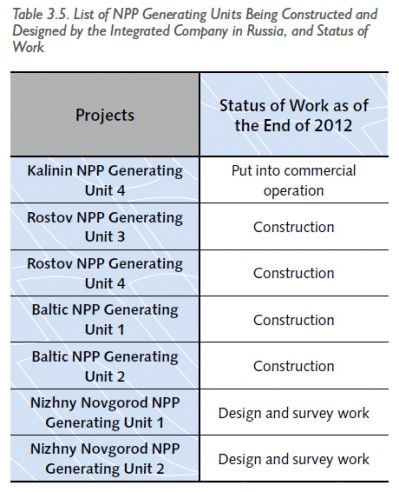
In all projects on NPP construction in Russia the Integrated Company acts in the capacity of general contractor and renders the whole range of services from designing to commissioning of facility. The customer of each project is OJSC Rosenergoatom Concern.
Tver Region. Kalinin NPP, Generating Unit 4
Project description. The work on construction is carried out on the basis of a contract signed between NIAEP and OJSC Rosenergoatom Concern in 2008. Construction of Kalinin NPP unit 4 started in 2007 and was completed in 2012.
2012 results. The scope of design and exploration work amounted to 147,828.61 thousand rubles in 2012. The key events in the reporting period were the completion of work on the project and commissioning of Kalinin NPP unit 4 in September 2012. The level of the project availability on 2012 was 100% and contribution of the reporting period to the availability level amounted to 8.82%. In 2012 the Integrated Company cooperated with 12 subcontractors during performance of work on the Kalinin NPP project. The total number of staff of the subcontracting organizations amounted to 1,083 people, including 903 workers.
2013 arrangements. Construction is completed.
Rostov Region. Rostov NPP, Generating Units 3 and 4
Project description. The work on construction of Rostov NPP units 3 and 4 is carried out on the basis of a contract concluded by NIAEP and OJSC Rosenergoatom Concern in 2009. Construction of generating unit 3 started in 2009, and it is planned to complete the work in 2014. Construction of generating unit 4 started in 2009, and it is planned to complete the work in 2017.
2012 results. All scheduled work was completed in due course in 2012. The scope of design and exploration work in respect of generating unit 3 amounted to 1,217,978.42 thousand rubles, and in respect of generating unit 4 273,12.07 thousand rubles. In October 2012 voltage supply for the balance of the plant was performed on unit 3. As of the end of 2012 the availability of generating units 3 and 4 amounted to 42.07% and 15.55%. The contribution of the reporting period to the project availability was 16.07 and 9.09 percent for units 3 and 4 accordingly. The total scope of work on generating unit 3 is completed to 101.97% and on generating unit 4 to 97%. In 2012 the Integrated Company cooperated with 42 subcontracting organizations during performance of work on the Rostov NPP project. The total number of staff engaged amounted to 6.253 including 5.148 workers.
2013 arrangements. Further work on the project is scheduled for 2013. The expected contribution of 2013 to the availability of generating unit 3 amounts to 23.13%, thus, by the end of 2013 the availability of the unit will be 65.2%. The expected contribution of 2013 to the availability of generating unit 4 amounts to 12.47 percent, thus, by the end of the year generating unit 4 will be completed to 28.02%.

Kaliningrad Region. Baltic NPP, Generating Units 1 and 2
Project description. The work on construction of generating units 1 and 2 is carried out on the basis of a contract signed by NIAEP and OJSC Rosenergoatom Concern in 2011. Construction of generating unit 1 started in 2011, it is planned to complete the work on unit 1 in 2017 and on unit 2 in 2018.
2012 results.
For generating units 1 and 2 accordingly:
- The scope of design and exploration work amounted to 846,622.37 thousand rubles and 303,277.30 thousand rubles.
- The availability by the end of 2012 amounted to 4.14% and 1.16%.
- The contribution of the reporting year to the project availability amounted to 4.14% and 1.16%.
- In 2012 the total scope of work is completed to
87.84% and 93.11%.
In 2012 the Integrated Company cooperated with 24 subcontracting organizations during generating units installation on the Baltic NPP project. The total number of staff of the subcontracting organizations amounted to 1,160 people, including 935 workers.
2013 arrangements. By the end of 2013 it is planned that generating unit 1 will be completed to 15.52%, and generating unit 2 to 2.64%. Thus, the 2013 contribution to the availability of units 1 and 2 will amount to 11.37% and 1.48% accordingly.
Nizhny Novgorod Region. Nizhny Novgorod NPP, Generating Units 1 and 2
Project description. The initial project preparation was completed in 2010. Expert conclusions were issued by the Scientific and Engineering Center for Nuclear and Radiation Safety. In January 2011 OJSC Rosenergoatom Concern obtained a license for construction of generating units 1 and 2 of the Nizhny Novgorod NPP issued by Rostekhnadzor (Federal Service of Environmental, Technological and Nuclear Supervision).
2012 results. In 2012 design and exploration work was carried out. Justifications of investment, materials on safety cases, engineering surveys were elaborated. In 2012 the total amount of design and exploration documentation amounted to 975,889.38 thousand rubles.
2013 arrangements. It is planned to complete design by the end of 2013.
BUSINESS MODEL
The Company constantly improves its business-model for the purpose of its Strategy (see Section 2. Strategy). The main element of the Company’s business-model (see Fig. 4.1) is the value chain.
The specified value chain in the engineering business on NPP construction is a component of the value chain in the nuclear industry (see Fig. 4.2).
The costs of capital transform along the value chain, either increasing or decreasing. Transformation of five capitals takes place in the Integrated Company’s business model. The changes thereof are described in the corresponding chapters of the Report:
- Financial capital – see Chapter 7.1;
- Production capital – see Chapter 7.2;
- Human capital – see Chapter 7.3;
- Natural capital – see Chapter 7.4;
- Social and economic capital – see Chapter 7.5.
Fig. 4.1. NIAEP-ASE Integrated Company’s Business Model
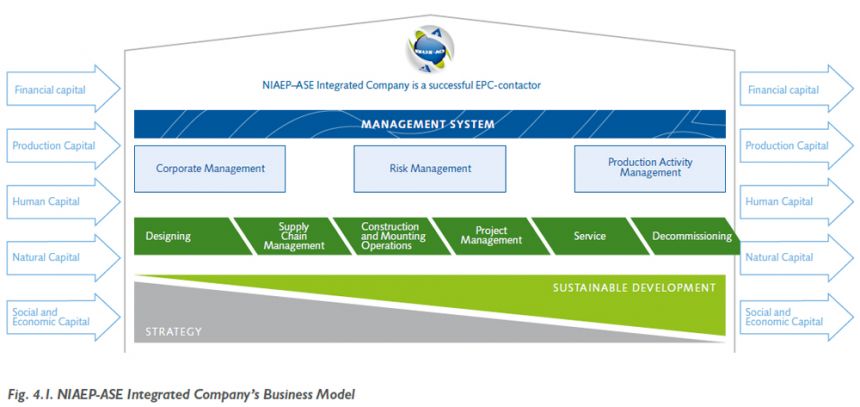
Effective management of the specified capital is performed on the basis of a management system (see Section 5. Management System). The general target view of the described business model is the development of NIAEP-ASE Integrated Company in the capacity of a successful EPC-contractor.
Fig. 4.2. Nuclear Industry Value Chain
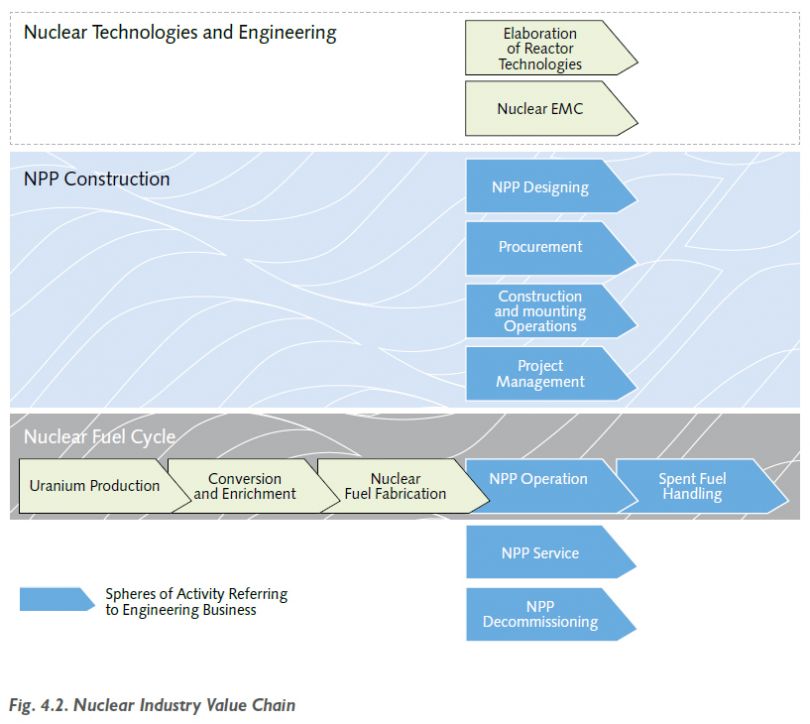
MANAGEMENT SYSTEM

Corporate Management
Corporate Management 12
Fig. 5.1. Corporate Management Bodies
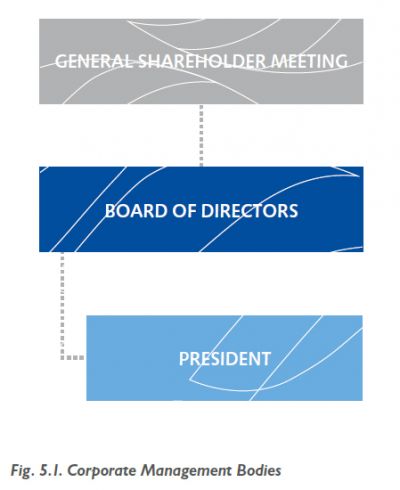 The JSC NIAEP corporate management system is based on the requirements of State Corporation ROSATOM with consideration of interests of the key parties concerned. The corporate management is carried out in accordance with the following regulatory documents:
The JSC NIAEP corporate management system is based on the requirements of State Corporation ROSATOM with consideration of interests of the key parties concerned. The corporate management is carried out in accordance with the following regulatory documents:
- Federal Law No. 208-FZ on Joint-Stock Companies.
- Regulation on cooperation of the JSC NIAEP structural subdivisions during preparation of materials for meetings of the JSC NIAEP Board of Directors and the JSC NIAEP General Shareholder Meeting.
- Provision on cooperation of the JSC NIAEP structural subdivisions and executive officers in the course of management of JSC NIAEP subsidiaries.
12 Information in Chapter 5.1. Corporate Management is given only in respect of the head company, JSC NIAEP.
Corporate Management Bodies
The JSC NIAEP management bodies are the General Shareholder Meeting, President and the Board of Directors.
General Shareholder Meeting
The General Shareholder Meeting is the highest management body of JSC NIAEP. The sole shareholder of the Company is JSC Atomenergoprom, included into the structure of State Corporation ROSATOM. Relations of JSC NIAEP with the sole shareholder are regulated by Federal Law No. 208-FZ on Joint-Stock Companies of December 26, 1995 and the Charter of JSC NIAEP.
Decisions on issues referring to the competence of the General Shareholder Meeting are made by the sole shareholder alone; hence, possibility of a corporate conflict is reduced to a minimum.
President of JSC NIAEP
Starting from 2007, the sole executive body of the Company is the Director of JSC NIAEP, Valery Igorevich Limarenko. Since November 2012 the position of Director has been renamed into President of JSC NIAEP. President is accountable to the Board of Directors and the General Shareholder Meeting and is elected by the sole shareholder. President organizes execution of decisions of the sole shareholder and the Board of Directors.
The size of remuneration of President of JSC NIAEP is determined by the labor contract. President of JSC NIAEP acts on the basis of sole shareholder’s decisions No. 1 of December 22, 2008 and No. 26 of November 7, 2012. Dependency of remuneration on KPI is described in Chapter 7.3.2. HR Management.
Board of Directors
The membership of the JSC NIAEP Board of Directors, determined by the sole shareholder’s decision includes five members. The Board of Directors may not include independent directors (this issue refers to the competence of the sole shareholder; as of today the sole shareholder has never made a decision on inclusion of independent directors into the Board of Directors).
In the course of 2012 the Board of Directors changed twice:
- On the basis of sole shareholder’s decision No. 23 of June 29, 2012;
- On the basis of sole shareholder’s decision No. 25 of August 24, 2012.
The members of the JSC NIAEP Board of Directors as of December 31, 2012 are:
- Kirill Borisovich Komarov, Chairman,
- Ivan Alekseevich Borisov,
- Yevgeniya Gennadyevna Gorbunova,
- Valery Igorevich Limarenko,
- Yekaterina Viktorovna Lyakhova.
No committees under the Board of Directors are established. The issue on establishment of such committees refers to the scope of the JSC NIAEP Board of Directors, and as of today a decision on establishment thereof was never made.
|
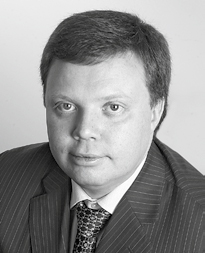
|
Kirill Borisovich Komarov, Chairman of the Board of Directors
Kirill Borisovich Komarov was born 1973 in Leningrad. In 1992 he graduated from the Law Lyceum under the Urals State Law Academy; in 1997 from the Judicial and Prosecution Faculty of the Urals State Law Academy; in 2000 he accomplished postgraduate study in the Academy. Kirill Borisovich holds a degree of candidate of legal sciences.
From 1993 to 2000 he worked in JSC YurKon Consulting Company (Yekaterinburg) on various positions from Specialist to First Deputy President. From 2000 to 2005 he worked in the Renova Group of Companies (Director for Legal Issues and Project Management of JSC Renova, First Deputy General Director of JSC Renova, General Director of JSC Renova – Razvitiye). Sphere of activity: projects in the field of privatization, shareholding, bankruptcy, property protection, establishment of corporate management systems, establishment of large holdings. From 2005 to 2006 he took the position of Deputy Head of the Federal Agency for Water Resources. Scope of responsibility: management of state property and subordinated organizations, coordination of state procurements, communication, R&D.
From 2006 to 2007 he combined the positions of the Vice-President of the JSC Korporatsiaya TVEL and the General Director of JSC Atomenergomash, from March 2007 he occupied the position of the General Director of JSC Atomenergomash. From December 2007 to March 2010 he was Deputy Director of JSC Atomenergoprom, Executive Director of JSC Atomenergoprom. From March 2010 to March 2011 he was Executive Director of the Directorate for Nuclear Weapon Complex of State Corporation ROSATOM, from April 2011 Deputy General Director and Director of the Department for Development and International Business of State Corporation ROSATOM. From April 2010 has been combining this position with the position of the Director of JSC Atomenergoprom.
Since 2012 he has been the Chairman of the Board of Directors of JSC NIAEP. Kirill has no share in the charter capital of JSC NIAEP. |
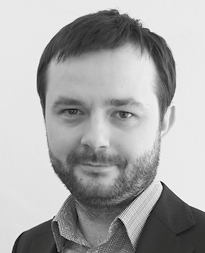 |
Ivan Alekseevich Borisov
Ivan Alekseevich Borisov was born in 1981 in Leningrad. In 2003 he graduated from the St. Petersburg State University with a degree in Mathematical Methods in Economy.
Career in State Corporation ROSATOM: from November 2008 to March 2009 Deputy Director of the Center for Organized Development and Project Management; from March 2009 to February 2010 Deputy Director of the Department for Long-Term Development and System Engineering; from February 2010 to January 2011 Deputy Director of the Strategic Management Department, Head of the Department for Strategy Elaboration and Long-Term Planning; from January 2011 to January 2013 Development and Restructuring Director (Department for Development and International Business); from February 2013 has been the Vice-President for Development of JSC NIAEP.
Since 2012 he has been a member of the Board of Directors of JSC NIAEP. He has no share in the charter capital of JSC NIAEP. |
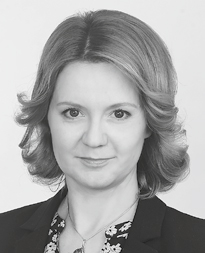 |
Yevgeniya Gennadyevna Gorbunova
Yevgeniya Gennadyevna Gorbunova was born in 1972 in Moscow. In 1994 she graduated from the Moscow State University of Economics and Statistics (MESI) with a degree in Applied Mathematics.
From 1994 to 1999 Yevgeniya worked in AKB Metallinvestbank taking various positions from Economist of the Department of Debit Operations of Credit Management to Head of Project Financing Management. From 1999 she occupied the position of Head of Economic Department of JSC OMK, from 2003 to 2005 was the Vice-President of JSC OMK. From 2005 to 2009 Yevgeniya held the position of the Director for Organizational Development in OJSC Federal Network Company of Unified Energy System (OJSC FSK EES).
Since 2010 she has taken the position of the Director of the Organizational Development Department in State Corporation ROSATOM. Scope of responsibility: organization of activity on elaboration and introduction of target model of management and management of projects on organizational changes.
Since 2012 she has been a member of the Board of Directors of JSC NIAEP, since 2013 a member of the Board of Directors of JSC Atomenergomash. She has no share in the charter capital of JSC NIAEP. |
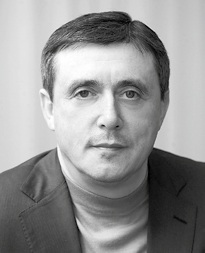 |
Valery Igorevich Limarenko
Valery Igorevich Limarenko was born in 1960 in Kharkov. In 1983 he graduated from the Kharkov Aviation Institute with a degree in Liquid Propellant Jet Engines. From 2001 to 2003 he took the position of the Minister of Construction and Housing and Utility Services of the Nizhny Novgorod Region Government. From 2005 to 2007 he was the Deputy Governor, Deputy Chairman of the Nizhny Novgorod Government for Construction, Energy, Housing and Utility Services, and Information Technologies. Valery is a 3rd category State Councilor of the Russian Federation.
From May 2007 to November 8, 2012 he was the Director of JSC NIAEP. Since November 9, 2012 he has taken the position of President of JSC NIAEP. Since 2007 Valery has been the member of the Board of Directors of JSC NIAEP. He holds no share in the charter capital of JSC NIAEP.
|
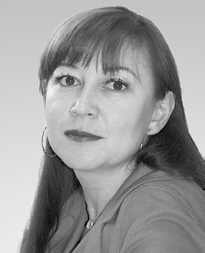 |
Yekaterina Viktorovna Lyakhova
Yekaterina Viktorovna Lyakhova was born in 1975 in Yekaterinburg. In 1997 she graduated from the Urals State Law Academy with a degree in Law; 2003 she gained a diploma of additional education on the program Master of Business Administration, MBA degree, in the Lomonosov Moscow State University; from 2008 to 2011 she studied the program of Executive MBA (EMBA) in the Universiteit Antwerpen Management School.
In 1995 Yekaterina took the position of Legal Adviser in the Urals State Medical Academy. From 1996 to 2000 she worked in the JSC YurKon Consulting Company. From 2000 to 2008 work in Renova on the positions from the Head of the Law Department of CJSC Renova to the Head of the Representation of Renova Project Limited (Republic of Cyprus). In 2008 she was appointed the General Director of OJSC Koltsovo-Invest (managing company of the Koltsovo airport in Yekaterinburg).
From 2010 to 2011 Yekaterina took the position of Vice-President for Corporate Management of OJSC TVEL. Since 2011 she has been the Director for Investment and Operational Efficiency Management of State Corporation ROSATOM, Chairman of the Board of Directors of OJSC Atomenergoprom, OJSC Atomenergomash and OJSC SPbAEP.
Since 2012 Yekaterina has been a member of the Board of Directors of JSC NIAEP. She holds no share in the charter capital of JSC NIAEP. |
In 2012 48 meetings of the Board of Directors were held. During the meetings issues were discussed and decisions made with regard to 6 main directions:
- Decision making on suggestions made to the sole shareholder concerning changes in the Charter of JSC NIAEP;
- Decision making on establishment of separate subdivisions of the Company and approval of corresponding provisions;
- Approval of the Provision on Procurement of JSC NIAEP;
- Approval of the Collective Agreement of JSC NIAEP for 2013–2014;
- Approval of transactions;
- Decision making on issues referring to the competence of the General Shareholder Meeting of JSC NIAEP subsidiaries.
According to the decision of the sole shareholder, members of the Board of Directors may receive remuneration and (or) reimbursement of expenditures connected with performance of their functions as members of the Board of Directors of JSC NIAEP during the period of fulfillment of their obligations thereof. The amount of remuneration and reimbursement shall be determined by the sole shareholder’s decision.
According to the results of work of the JSC NIAEP Board of Directors in 2012, no such decision was made by the sole shareholder; during the reporting period remuneration to the Board members was neither assigned nor paid.
Financial and Economic Activity Control
JSC NIAEP financial and economic activity control is carried out by the Review Committee, independent auditor and Internal Control and Audit Department of JSC NIAEP.
Review Committee
In order to control financial and economic activity of the Company, the JSC NIAEP Review Committee is annually elected by the General Shareholder Meeting. By decision No. 31 of the JSC NIAEP General Shareholder Meeting made on April 4, 2013, the Review Committee was elected including members as follows:
- Aleksey Alekseevich Pimenov
- Vera Yevgenyevna Topilskaya
- Elena Vladimirovna Samogorodskaya
The competence of the Review Committee is determined by:
- Federal Law on Joint-Stock Companies;
- Charter of JSC NIAEP;
- Provision on the JSC NIAEP Review Committee.
The Review Committee is accountable to the General Shareholder Meeting only and is independent from executive officers of the Company’s management bodies. Conclusion of the Review Committee according to the results of work in 2012 is given in Annex No. 6.
According to the sole shareholder’s decision, members of the JSC NIAEP Review Committee may receive remuneration or reimbursement of expenditures connected with performance of their obligations. The amount of remuneration and reimbursement is determined by the sole shareholder’s decision. No such decisions were made in 2012, no remuneration paid and no expenditures reimbursed.
Independent Auditor
Limited Liability Company Financial and Accounting Consultants acts as the JSC NIAEP independent auditor in accordance with decision of the sole shareholder No. 23 of June 29, 2012.
Internal Control and Audit Department
The Internal Control and Audit Department carries out control over financial and economic activity of JSC NIAP and its subsidiaries. The work of the Internal Control and Audit Department is regulated by the schedule of inspections approved by the Internal Control and Audit Department of State Corporation ROSATOM and the decisions of the JSC NIAEP management bodies, as well as orders and instructions of the JSC NIAEP sole executive body.
In accordance with the Agreement on Transfer to JSC NIAEP of Powers of the JSC ASE Sole Executive Body, since 2012 the Department has performed the functions of internal control and audit in JSC ASE as well. As a consequence, in 2012 the number of inspections increased and changes were made in the list of objects subject to review and in the inspection structure.
83 inspections were held in 2012 (72 in 2011). The share of field inspections of financial and economic activity of JSC NIAEP separate subdivisions and its subsidiaries and affiliates amounted to 77% of the total number of inspections.
As in the previous periods, in 2012 procurement and contractual work was reviewed on a mandatory basis during inspections of financial and economic activity of subdivisions: the carried out procurement procedures were reviewed for compliance with the Unified Industry Standard of Procurement and supply contracts were checked for fulfillment. Special attention was paid to purchases from the sole supplier.
A considerable number of violations were revealed in such business processes as procurement and management of suppliers’ services during design and exploration work; procurement and management of subcontracting organizations’ services during construction and mounting work; investment management; informational technologies management. In order to reduce the risks in these business processes, corrective measures were elaborated. Elimination of the revealed violations is controlled by the Internal Control and Audit Department.
This notwithstanding, in 2012 a considerable reduction (4 times compared to 2011) was noted in the number of violations revealed during inspection of procurements and supplies of equipment and materials for the facilities under construction. According to the results of inspections, 11 executive officers were brought to disciplinary responsibility (6 only in 2011), including 10 top managers.
JSC NIAEP Share Capital
In 2012 the share capital of JSC NIAEP remained unchanged. As of December 31, 2012, the JSC NIAEP share capital amounted to 500,001,877 rubles. The number of placed securities was 500,001,877. All shares are placed by means of closed subscription. The nominal cost of one security issued amounts to 1 ruble.
Information on Payment of Dividends
The procedure of payment of dividends in JSC NIAEP is regulated by Section 8 of the Company’s Charter. In accordance with the Charter, pursuant to the results of the first quarter, half-year period, nine month period of the financial year and/or financial year, the sole shareholder is entitled to make decision (announcement) on payment of dividends.
The decision on payment of dividends pursuant to the results of the first quarter, half-year period, nine month period of the financial year can be made within three month after completion of the corresponding period. The decision on payment of dividends, including amount, procedure, form and terms thereof, shall be made by the OJSC Atomenergoprom sole shareholder. In this case the amount of dividends can not exceed the one recommended by the JSC NIAEP Board of Directors.
According to the results of financial and economic activity in 2012, the sole shareholder made Decision No. 23 of June 29, 2012 on payment of dividends in the amount of 585,238,630.60 rubles. Payment of dividends (excluding profit taxes) was made by transfer of monetary funds to the settlement account of JSC Atomenergoprom within 60 days from the date of decision making.
Risk Management
One of the main factors providing achievement of the Company’s strategic goals is risk management. Risk management in the Company is not centralized, and in this connection responsibility for specific risk management is distributed between the corresponding functional subdivisions.
Functioning principles of the Company’s Risk Management System correspond to the principles reflected in the Risk Management Policy of State Corporation ROSATOM approved by order of the General Director No.1/4 – P of January 13, 2011.
On the basis of the results of poll taken among the subdivisions, key risks and mitigation measures were determined (see Table 5.1).
Table 5.1. Key Risks and Mitigation Measures


Strategic risks are risks of the highest level which may lead to non-performance of the Company’s strategic goals. In the reporting year the map of strategic risks was prepared in the Company (see Table 5.2).
Fig. 5.2. The map of strategic risks
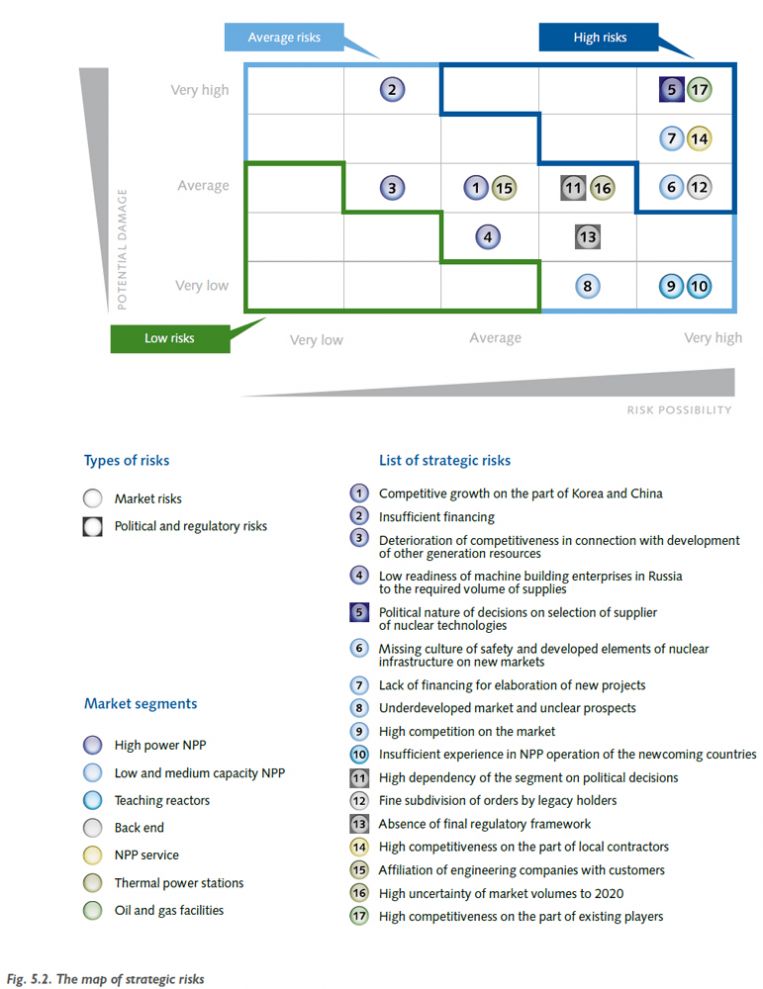
Production Activity Management
Within the frames of production activity management the Company makes its mission to reduce duration and cost of construction. In order to solve these tasks the Integrated Company executes a number of projects:
- Elaboration and introduction of the Multi-D technology for optimization of construction and mounting operations;
- Introduction of Production System Rosatom (PSR);
- Improvement and introduction of construction cost management method;
- Optimization of procurement procedures.
In 2012 elaboration, setup and trial operation of the NPP construction management system based on the Multi-D technology was completed within the VVER-TOI project. This technology provides for management of designing and construction on the basis of an information model (Multi-D model) of the facility.
Multi-D Technology for Optimization of Construction and Mounting Operations
The Multi-D technology is aimed at optimization of construction and mounting operations and based on detailed planning of the working operations sequence. The main goal of using the Multi-D technology consists in reduction in time of NPP generating unit construction. Application of the technology permits to plan the schedule of construction precisely and solve the problems connected with this stage of construction at the design stage. This technology supplements the traditional expert directive approach to planning of construction and mounting operations which provides for determination of completion schedule with consideration of expert assessments of stage duration.
The Multi-D model includes a comprehensive 3D model of the facility, information on schedule and network planning (4D), information on configuration, completeness and supplies of materials and equipment (5D), and information about labor, technical and other resources required for generating unit construction (6D).
The efficiency of NPP construction management with application of the Multi-D technology is increased due to:
- Optimal placement of each element of the facility with the help of a 3D-model;
- Calculation of the best path for each element’s rigging;
- Calculation of the best mounting sequence with detailed planning of welded joints;
- Even distribution of workload among mounting workers within the whole period of construction;
- Reduction in labor expenditures in the mounting zone due to enlargement of elements into mounting modules;
- Detailed planning of operations (including twenty-four-hour planning) and preparation of staff of mounting organizations on the basis of this planning;
- Consideration of scheduled dates of equipment supply and possible deviations from the schedule;
- Construction process control in real time mode.
The Integrated Company is planning further development of the Multi-D technology in 2013.
Introduction of Production System Rosatom (PSR)
Since 2009 the Production System Rosatom (PSR) has been introduced into enterprises of the industry. PSR is based on the principles of the efficiency enhancement system of Toyota recognized as one of the most successful programs in this sphere. PSR helps to increase efficiency and quality, reduce expenditures and time of work performance and achieve maximum satisfaction of customer’s requirements. Application of PSR tools facilitates the reduction in time of NPP generating unit construction and in cost of work due to a more effective process control system.
Results of PSR introduction in 2012:
- Reduction in total duration of production processes on generating units 3 and 4 of the Rostov NPP by 100 days;
- Development of opportunity to issue actual weekly-daily task (with application of the Multi-D system);
- Execution of the first stage of work on introduction of bar-coding system for stock in warehouses of the Volgodonsk Branch;
- Twofold reduction in accident frequency on the construction site of the Rostov NPP;
- 5% increase in efficiency during designing operations (field engineering) at the Rostov NPP.
An important part of PSR introduction consists in staff training. In 2012 NIAEP obtained a state license for training according to the Production System Rosatom Program. Currently, the central platform for training on this program is the Rostov NPP. Upon completion of training, participants of the program gain a state-recognized degree.
Due to the PSR introduction the time of work performance during execution of pilot projects was reduced (see Table 5.2).
2013 Arrangements on PSR introduction include reduction in duration of production cycles at the Rostov NPP, the Baltic NPP, and the Yuzhnouralsk TPP.
Table 5.2. Results of PSR Introduction in 2012

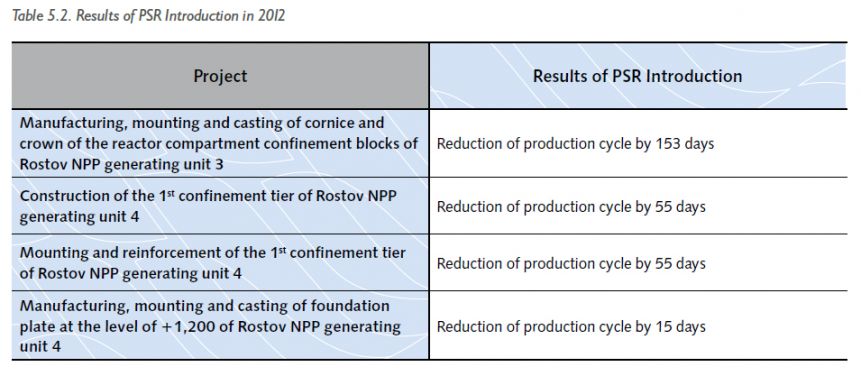
Construction Cost Management Method
In 2012 the Integrated Company carried out activities on improvement and introduction of the construction cost management method applied for construction of NPP generating units. This method is elaborated to perform tasks assigned by State Corporation ROSATOM and OJSC Rosenergoatom Concern in respect of reduction in investment costs of projects on construction of generating units.
In 2012 the marginal cost determination and control model for construction of NPP generating units was elaborated in the Company. This model was approved by the OJSC Rosenergoatom Concern and submitted to State Corporation ROSATOM for consideration of the opportunity of industrial introduction thereof (see Fig. 5.3). The model permits to calculate the cost of NPP generating unit construction at each stage of NPP construction (concept design stage, project approval stage, detailed design documentation elaboration stage, construction stage, and commissioning stage), control compliance with the fixed limits, and elaborate compensating measures.
In accordance with this model it is possible to track the cost of construction of Rostov NPP generating units 3 and 4, and Baltic NPP generating units 1 and 2. Due to the model application in 2011 and 2012 during construction of Rostov NPP generating units 3 and 4 the saving was achieved in the amount of 107.5 million rubles relative to the fixed marginal cost of 164.4 billion rubles; during construction of Baltic NPP generating units 1 and 2 in 2012 the saving amounted to 654.08 billion rubles relative to the fixed marginal cost of 249.6 billion rubles.
Fig. 5.3. Scheme of Marginal Cost Determination and Control Model for Construction of NPP Generating Units
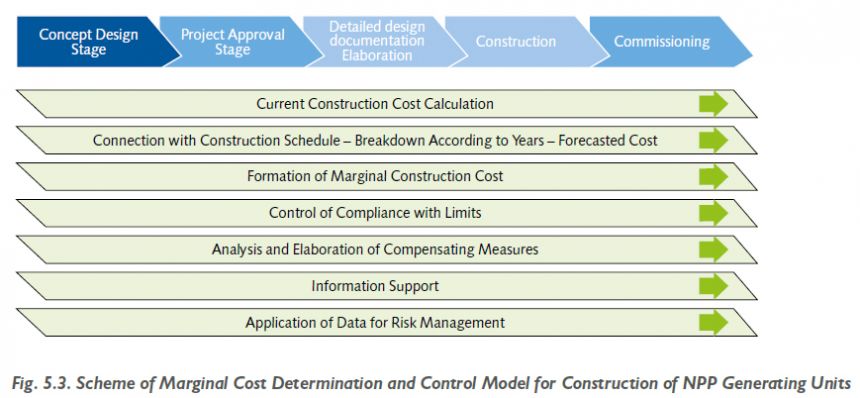
The model was applied for calculation of NPP construction cost in Russia and abroad. In 2012 the following operations were performed with application of the model:
- Calculation of cost of the Nizhny Novgorod NPP and Kursk NPP;
- Calculation of construction cost of the Belarusian NPP;
- Formation of tender documentation and submission of technical and commercial proposals on construction of the Temelin NPP (Czech) and the Majdal NPP (Jordan);
- Correction of construction costs calculated for the Kudankulam NPP (India) and the Tianwan NPP (China).
Information on relevant purchases made during execution of construction projects of the Integrated Company, Atomenergoproekt and SPbAEP was used in calculations.
The technology of construction cost management with consideration of changes was presented during the 2nd International Scientific and Research Forum “Multi-D Project: Development of Competitive Technologies of Complex Engineering Facilities Construction”.
In 2012 the database was provided on cost of material and labor resources applied during NPP construction on the basis of VVER-TOI platform. Relevant information on current cost of resources with supporting materials was included in the database.
In 2012 during execution of orders of State Corporation ROSATOM management the package of primary documentation was elaborated including substantiating calculations on cancellation of reduction factors applied to overhead and profit. On the basis of the presented documents the Ministry of Regional Development of the Russian Federation made a decision on cancellation of reduction factors applied to operations on NPP construction.
The following activities on cost management are scheduled for 2013:
- Development of the marginal cost determination and control model for construction of NPP generating units at the level of State Corporation ROSATOM;
- Commissioning of extended module of the Automated Cost Management System (ACMC CCMS NIAEP);
- Further application of the model to foreign construction projects;
- Finalization of materials Catalogue with consideration of industry practices.
Executive Management of JSC NIAEP
|
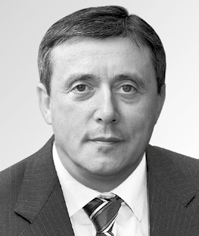
LIMARENKO
Valery Igorevich
President
|
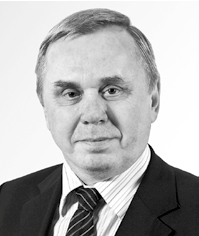
IVANOV
Yury Alekseevich
Senior Vice President, Designing irector |

KATZ
Vladimir Lazarevich
Senior Vice-President, Economics and Finance |
|
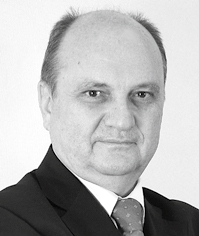
SAVUSHKIN
Vladimir Nikolaevich
Senior Vice President, Head of the Moscow Branch |
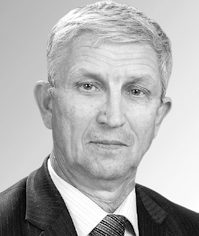
BELOV
Vladimir Sergeevich
Vice-President of construction in North West Russia and CIS |
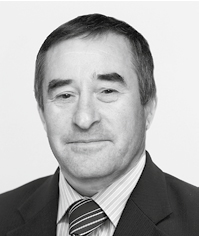
PETRENKO
Nikolay Vasilyevich
Vice-President |
|
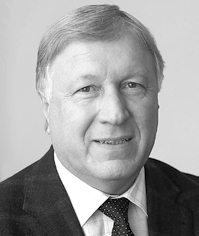
SHESHOKIN
Nikolay Pavlovich
Vice President, Human Resources |
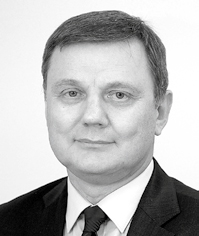
PAVLOV
Vladimir Nikolaevich
Vice President of Construction in Middle East and Central Asia |
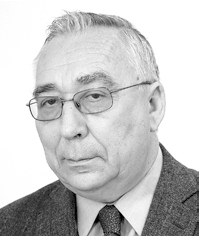
IVANOV
Yury Germanovich
Vice President of Projects
in East and South-East Asia |
|

LEBEDEV
Andrey Olegovich
Vice President of Construction in South Asia |

TEPKYAN
Gennady Onikovich
Vice President |

OLONTSEV
Sergey Petrovich
Vice President of Construction in Russia
|
|
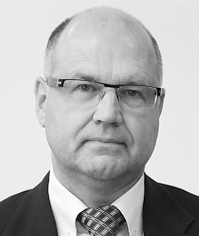
VAGANOV
Leonid Sergeevich
Supply Chain Director
|
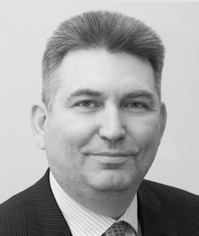
STRELTSOV
Sergey Aleksandrovich
Quality Management Director, Head of Moscow Office |
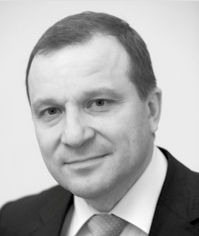
MEDVEDEV
Andrey Arkadyevich
Procurement and Purchasing Director |
|
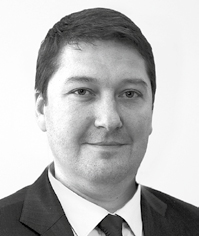
KHAZIN
Aleksandr Borisovich
Director of Rostov NPP Construction |
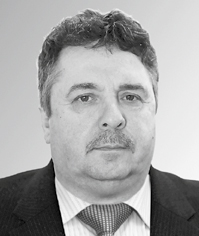
MAKHONIN
Vyacheslav Mikhaylovich
Director of Baltic NPP Construction |
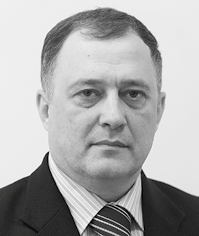
PUSTOVOY
Yury Alekseevich
Director of Belarusian NPP Construction, Director of Representative Office |
|
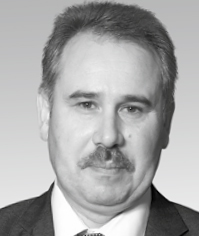
KRUUZ
Igor Vladimirovich
Construction and Installation Director
|
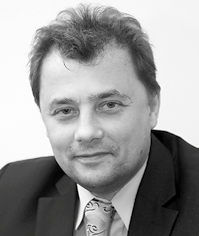
Rymar
Oleg Vladimirovich
Cost Management Director
|
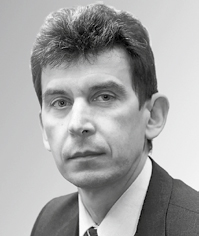
SHCHERBAK
Mikhail Yuryevich
Capital Construction Director |
|
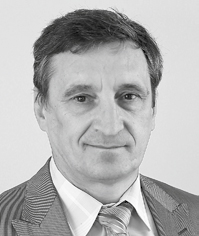
JARYGIN
Vladimir Gavrilovich
Security Director
|
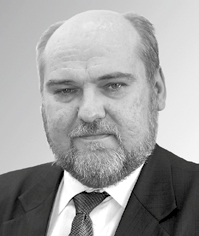
SHKITILEV
Dmitry Vladimirovich
Chief Engineer
|
|
INTRODUCTION OF INNOVATIONS
In 2012 the following work was carried out on introduction of innovation systems and technologies:
- Elaboration of an NPP lifecycle management system;
- Elaboration of a unified industry-specific nomenclature Catalogue of NPP equipment and materials;
- Elaboration of an electronic technical document management system (ETDMS);
- Development of capital construction complex management system (CCMS NIAEP).
NIEAP - Innovation in the region 2012
NPP Lifecycle Management System
Pursuant to the results of the session of the Russian Federation Presidential Committee for Modernization and Technological Development of the Russian Economy which took place on July 22, 2009, the President of Russia set a challenge before the nuclear industry to optimize performance characteristics of pressurized water reactors and create VVER-TOI Project (see Section 2. Strategy). Solving this task the Integrated Company elaborates the NPP Generating Unit Lifecycle Management System.
The NPP Generating Unit Lifecycle Management System is designed to provide the VVER-TOI Project participants with access to relevant information about a generating unit. The system provides for informational cooperation both of participants of one NPP unit lifecycle stage, and of participants of various stages.
Within the frames of establishment of the Lifecycle Management System the Integrated Company plans to elaborate the unified information model of VVER-TOI and create an organizational and functional model (OFM) of the VVER-TOI lifecycle management (see Table 6.1).
Table 6.1. VVER-TOI Project Key Indices

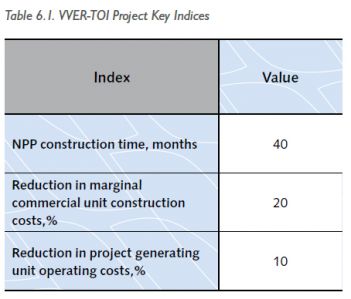 Within the frames of the VVER-TOI Project in the period from 2011 to 2012 work was carried out on creation of lifecycle management system with results as follows:
Within the frames of the VVER-TOI Project in the period from 2011 to 2012 work was carried out on creation of lifecycle management system with results as follows:
- Repository of unified information model of generating unit;
- Repository of organizational and functional model;
- Package of organizational and methodical documents on design and construction process management including description of business-processes at NPP design and construction stages, generating unit configuration management standard; standard for management of changes in basic project part, standard for connection of the VVER-TOI Project to sites of NPP under construction.
In the reporting year the volume of investments to elaboration of Lifecycle Management System amounted to 176.4 million rubles.
In 2013 it is planned to perform trial operation and preparation for pilot commissioning of elements of the NPP Generating Unit Lifecycle Management System as it pertains to cooperation with the Multi-D technology.
Unified Industry-Specific Nomenclature Catalogue of NPP Equipment and Materials
Elaboration of the Unified Industry-Specific Nomenclature Catalogue of NPP Equipment and Materials (UISNCEM) was launched in 2011 within the frames of development of the typical Project of Optimized and Information-Supported Generating Unit on the Basis of VVER-TOI Technology.
The main goals of UISNCEM elaboration were determined as follows:
- Simplification of designing and procurement;
- Creation of a centralized database on equipment and materials.
The catalogue is a comprehensive systemized and user-friendly database about all products manufactures for the needs of nuclear industry (see Fig. 6.1).
Fig. 6.1. UISNCEM Application Concept
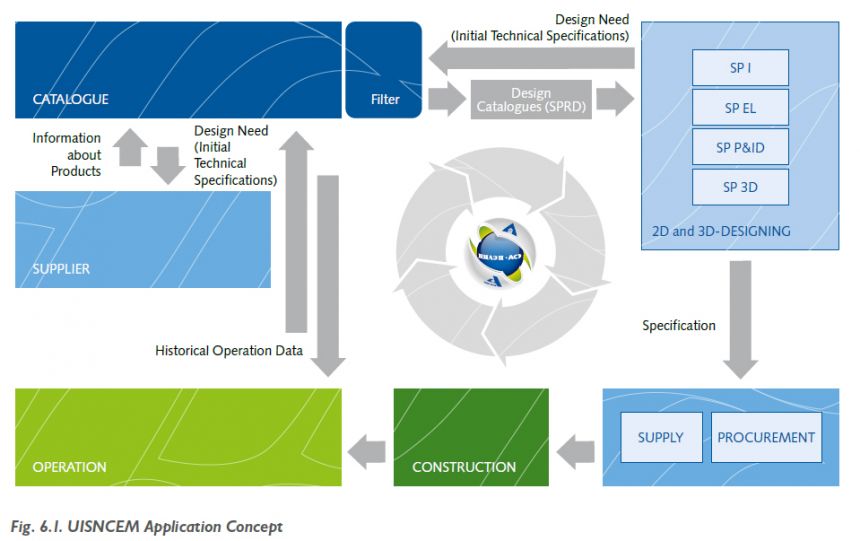
In December 2012 the Company completed the first stage of the UISNCEM project. On the basis of the first stage results an effective tool was elaborated for optimization of design processes and further procurement of equipment. Optimization is based on application of the centralized equipment and materials database formed in accordance with information of the manufacturing plant.
As of the end of 2012 the centralized NPP equipment and materials database included 2 thousand nomenclature types of products. A unique pattern of standard description of technical and operational characteristics was created for each product.
Over 500 manufacturers and suppliers are registered in the capacity of permanent partners and participants of the UISNCEM project, including more than 100 foreign ones. The catalogue includes over 140 thousand notes on equipment (equipment cards) and over 15 thousand various 3D-models. The Verification Center established in NIAEP provides manufacturers and suppliers with informational and methodical support and secures monthly processing and verification of up to 1.5 thousand of equipment cards created by them.
Among the registered users of the system there are over 60 employees of design subdivisions of the Integrated Company, Atomenergoproekt and SPbAEP which introduced UISNCEM as the main source of data on manufactured products.
It is planned to include information on new types of products in the database and verify these data in 2013. Moreover, an increase in quantity of UISNCEM constant users to 150–200 people is expected in the industry by the end of 2013.
Electronic Technical Document Management System (ETDMS) on the Basis of Intergraph SmartPlant Foundation Software
Work on elaboration of the Electronic Technical Document Management System with application of an electronic digital signature (EDS) is carried out pursuant to the Order of the Director of State Corporation ROSATOM of August 18, 2011 on Execution of the Project on Creation of Information Space between General Contractor and Customer for Work with Technical Documentation during NPP Construction.
Creation of Electronic Technical Document Management System with application of EDS is aimed at simplification of communication technology inside the Company and between the Company and customers in the process of elaboration, coordination and storage of technical documentation.
In 2012 the ETDM system went through operation testing and was put into trial operation. In the course of the unified information space elaboration between SPbAEP and the Integrated Company the infrastructure of detailed design documentation preliminary approval was developed on the basis of the SmartPlant Foundation document management system. The joint Regulation was approved concerning the work in the electronic technical document management system of the unified information space between the Integrated Company and SPbAEP during elaboration, approval up to the status “approved for construction” and transfer of detailed design documentation issued during designing of the Baltic NPP.
It is planned to put the system into commercial operation in 2013.
Capital Construction Complex Management System (CCMS NIAEP)
Since 2009 NIAEP has been applying the Capital Construction Complex Management System CCMS. The System includes automated systems of capital construction, contract management, equipment procurement, and data integration.
 The main tasks solved with the help of CCMS NIAEP include:
The main tasks solved with the help of CCMS NIAEP include:
- Contractual arrangements management;
- Detailed design documentation elaboration management;
- Management of estimate limits and period-based financing;
- Actual work performance control;
- Subject-related planning and reporting;
- Equipment and materials procurement management;
- Monitoring of actual number and labor expenditures of contracting organizations;
- Summary analysis of constructed facilities’ condition.
In 2012 the Integrated Company proceeded with execution of the project on automation of construction cost management. Functionality of the CCMS NIAEP system was elaborated permitting to plan costs prior to completion of construction.
Development of Procurement and Supplies Management System
One of the most significant innovations currently introduced into the Integrated Company is the standard Procurement and Supplies Management System (PSMS). Elaboration thereof is carried out within the VVER-TOI Project and is oriented to foreign construction projects. PSMS is an integrated platform with a set of tools for cooperation of all participants of NPP construction project: designer, purchasers, engineering and construction companies, etc. PSMS is controlled by means of the SmartPlant Materials information platform.
 The main tasks to be solved by the Procurement and Supplies Management System:
The main tasks to be solved by the Procurement and Supplies Management System:
- Elaboration of an integrated solution for management of material supplies, logistics and relationship with suppliers;
- Development of a unified platform for cooperation of all project participants;
- Reduction in costs of project execution and time of work performance, increase in risk management efficiency, and gaining advantage on complex highly competitive markets;
- Assurance of easy access to data on materials and equipment for each department or functional unit of an enterprise.
The total volume of financing of the System from the VVER-TOI Project budget funds amounts to 83.4 million rubles. Additional financing to provide staged and trial application of the System is made at the Company’s expense.
In 2012 work on elaboration of the Procurement and Supplies Management System was carried out in two directions approved by the VVER-TOI Governing Board:
- Development of the Procurement and Supplies Management System to be applied in the territory of Russia;
- Development of the Procurement and Supplies Management System to be applied abroad.
2013 plans on further elaboration of the Procurement and Supplies Management System on the basis of SmartPlant Materials software include:
- Holding of open tender for improvement of the SmartPlant Materials platform;
- Improvement of the SmartPlant Materials platform;
- Carrying out of tender procedures within the frames of execution of the Procurement and Supplies Management System;
- Elaboration of possibility to download the reports from SmartPlant Materials in xls format;
- Holding of tender of work execution for elaboration of locks against unauthorized access, mass mail distribution and junk mail;
- Integration with Atomsmeta 13 Complex;
- Integration with accounting system of the enterprise.
Pilot commissioning of the Procurement and Supplies Management System in the Integrated Company is scheduled for 2013 within the database of the Belarusian NPP.
13 The unified costing complex of the nuclear industry companies which permits to use the integrated method of costing documentation control within the full accounting chain, including application of a single approach to cost formation for various facilities of the nuclear industry.
DEVELOPMENT OF CAPITALS
 Development of five capitals is described in the Integrated Company’s business-model (see Section 4. Business-Model):
Development of five capitals is described in the Integrated Company’s business-model (see Section 4. Business-Model):
- Financial;
- Production;
- Human;
- Natural;
- Social and economic.
Increase in and expenditure of capitals takes place as a result of actions on value increment. According to the terminology defined in the prototype standard of integrated reporting, each type of capital is determined as follows:
- Financial capital consists of monetary funds used by the Company to carry out its activity;
- Production capital inlcudes production physical and infrastructure objects available to the Company and applied in its activity, as well as projects providing for effective production activity management;
- Human capital is the staff of the Company;
- Social and economic capital means social and economic relations of the Company with local communities and suppliers and contractors in regions of operation;
- Natural capital implies natural physical objects (water, air, soil, energy resources) applied by the Company in its activity and subject to effects of this activity.
Financial Capital
Financial Capital 14
All in all, a positive dynamics of financial and economic indices is observed due to expansion of production activity coverage as a result of formation of the NIAEP Moscow Branch. Consequently, we observe increase in proceeds from other services, growth in volume of design and survey work on new projects (Belarusian NPP, Nizhny Novgorod Project Contract), and conclusion of the contract for elaboration of detailed design documentation for the Baltic NPP.
In 2012 the proceeds of NIAEP amounted to
38,683.9 million rubles, which is 9.6% higher compared to the same index in 2011 (35,304.7 million rubles). In 2012 the net profit increased by 91.6% compared to the net profit in 2011 and amounted to 1,355.9 million rubles against 707.6 million rubles accordingly. The net profit margin increased from 2.0% in 2011 to 3.5% in 2012 (see Tables 7.1 and 7.2).
Table 7.1. Financial Results of NIAEP Activity 15


Table 7.2. Created and Divided Direct Economic Value, million rubles

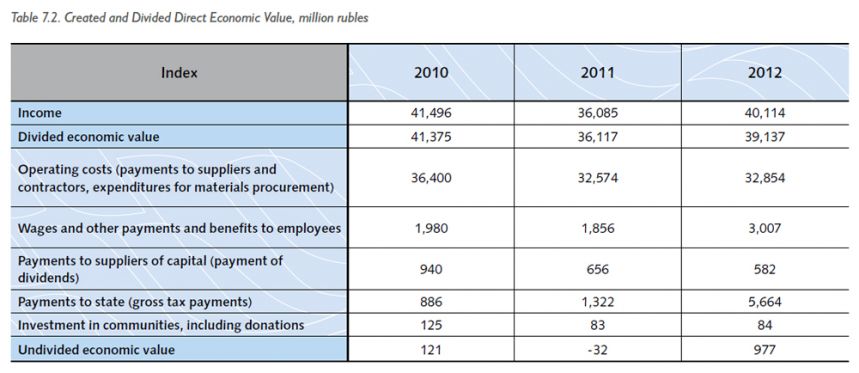
Fig. 7.1. Dynamic Structure of NIAEP Proceeds over 2010–2012
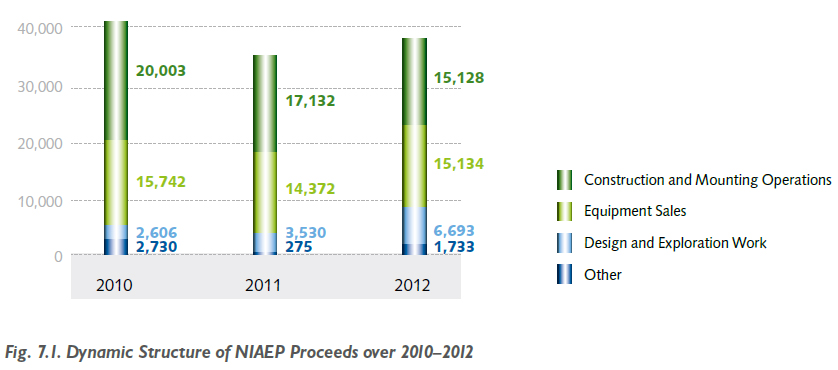
Compared to 2011, in 2012 increase in proceeds in the segments “Equipment Sales”, “Design and Exploration Work” and “Other” amounted to 5.3%, 89.6% and 530% accordingly. At the same time the proceeds in the “Construction and Mounting Operations” segment decreased by 11.7%.
Table 7.3. Performance Indices


According to the 2012 results, the index of return on assets (ROA) amounted to 1.73%, which is almost twice as high as in 2011. The increase in this index is connected with increase in the net profit by 91.6% from 707.6 million rubles in 2011 to 1,355.9 million rubles, whereas the amount of assets of the Company remained almost unchanged: 78,727.1 million rubles in 2011 and 78,288.7 million rubles in 2012. At the same time, decrease in this index in 2011 to
0.9% compared to 1.97 in 2010 is conditioned by the drastic increase in the amount of the Company’s assets from 39.376,4 million rubles in 2010 to 78.727,1 million rubles in 2011, while the net profit has slightly decreased from 776.3 million rubles to 707.6 million rubles accordingly. A significant growth in assets is connected with advance financing received for current and new projects.
The 2010–2012 dynamics of the return on equity (ROE) index was conditioned by the net profit received in the reporting period and change in the Company’s equity capital. The equity in its turn was formed by the Company’s charted and surplus capital which remained unchanged in the analyzed period and the amount of net profit minus dividends paid (undivided profit). Thus, in 2010, when net profit amounted to 776.3 million rubles, and equity equaled to 2,811.8 million rubles, the ROE index value amounted to
27.61%. In 2011 reduction in index was insignificant due to a small growth in the Company’s equity to 2,863.4 million rubles, and net profit amounted to 707.6 million rubles. In 2012 due to significant growth in net profit to 1,355.9 million rubles with an increase in equity by 770.8 million rubles to 3,634.2 million rubles, the ratio reached the value of 37.31. It shall be also noted, that 2011 the dividends were paid for 2010 in the amount of 656.2 million rubles, and in 2012 dividends paid for 2011 equaled to 585.2 million rubles. Decision on payment of dividends in 2012 will be taken in 2013. Profit margin value is given in Table 7.4.
Table 7.4. Return Indices


Table 7.5. Liquidity Indices


The growth in current liquidity ratio is connected with an insignificant change in the NIAEP balance structure, namely reduction in short-term liabilities of the Company by 5,457.5 million rubles as a result of return of recurring advances gained in the balance sheet line “Other Long-Term Liabilities” (+ 4,248.2 million rubles). At the same time, the amount of current assets of the Company has reduced by 1,433.3 million rubles only.
According to the results of 2012, the quick assets ratio reduced to 0.99 due to reduction in the line “Financial Investments” from 30,320 million rubles as of December 31, 2011 to 18,200 million rubles as of December 31, 2012. Funds in the amount of 12,120 million rubles were allocated for advance payments to counteragents, mainly long-term ones. Consequently, long-term receivable which is not taken into account during calculation of the quick assets ratio has increased by 12,034 million rubles in 2012, and current receivable has increased by 1,760 million rubles only, which led to reduction in ratio.
14 Information in Chapter 7.1 Financial Capital is given with regard to JSC NIAEP.
15 Indices are calculated in accordance with the data of the 2012 accounting records prepared for the purpose of generation of State Corporation ROSATOM consolidated statements. Deviations of indices taken from the accounting records submitted to tax, statistical and other public authorities are insignificant.
Production Capital
Production Capital 16
Development of NIAEP production capital is aimed at achievement of the strategic goals both of the Company and of State Corporation ROSATOM in whole. Increase in production capital was achieved through execution of investment programs.
Making Investment Decisions
Investment decisions in NIAEP are made on the basis of the approved Investment Program. The Investment Program for 2012–2016 was approved during the Board meeting of State Corporation ROSATOM (Minutes of the meeting No. 62 of December 22, 2011).
2012 NIAEP entered the unified hierarchical investment management structure of State Corporation ROSATOM in the capacity of Financial Responsibility Center-2 “Foreign Construction”. In 2012 the project approach was introduced to investment projects management (introduction of the Company’s Standard on Investment Activity Management No. 35.02-12).
Execution of Investment Projects in 2012
The investment projects are financed from the NIAEP equity capital (amortization and profit). In addition, leasing tools are used.
In 2012 within the NIAEP Investment Program the Company’s investment projects were reviewed and rescheduled up to 2017 (see Table 7.6).
Table 7.6. Investment Projects Executed by NIAEP


Motorization of Construction Sites for Performance of Construction and Mounting Operations
Within this project NIAEP shall be provided with the necessary mechanisms of high lifting capacity, equipment and rigging for performance of construction and mounting operations during construction of generating units. It is planned to purchase construction machines, sometimes unique ones, for performance of general contractor functions, including provision of subcontracting organizations with expensive machines on a rental basis. Execution of the project excludes the risk of violation of the construction deadlines set by the customer, as it permits to conclude contracts with highly qualified subcontractors, whether they posses expensive construction machines or not.
Purchase of Equipment and Machines for Design and Exploration Work
Within the frames of this project it is planned to purchase special equipment and machines for performance of field surveys. The main scope of exploration work is carried out within the first two or three years from the moment of decision making on location of NPP construction site (substantiation of site location safety and parameters for making project decisions on NPP structures and equipment, creation of monitoring networks for control over environmental parameters significant for NPP safety). Further work is carried out within monitoring of facilities construction and operation. The project provides for procurement of geodesic equipment, drilling equipment, and measuring devices.

IT Projects
Within the frames of this direction it is planned to purchase modern software for development of key competences in the field of designing and engineering, to provide NIAEP employees with modern computers and office machines, develop communication means, including construction of telecommunication infrastructure of NIAEP branches for implementation of field engineering functions.
Infrastructure Development
Execution of the project provides for performance of a number of activities aimed at reconstruction of buildings and structures, improvement of labor conditions, purchase of motor vehicles for uninterruptible day-to-day operation, and development of infrastructure on construction sites.
2013 Arrangements
In 2013 it is planned to actively purchase modern equipment and machines on the basis of leasing procedures. Application of leasing shall intensify re-equipment of key assets and is aimed at keeping of leading positions on the market of engineering services.
In 2013 NIAEP investment management will be performed in strict compliance with the Standard of the Company.
16 Information in Chapter 7.2. Production Capital is given with regard to JSC NIAEP.
Human Capital
The NIAEP activity in the field of social and labor relations is based on the Labor Code of the Russian Federation, the Industry-Specific Agreement on Nuclear Energy, Industry and Science for 2012-2014 and documents regulating the NIAEP activity, in particular the NIAEP Charter, the Regulations on Internal Labor Order, the Code of Corporate Ethics and the Collective Agreement.
All social benefits and guarantees to the NIAEP employees are formalized in the Collective Agreement and put into practice in accordance with the unified social policy of State Corporation ROSATOM within current social programs. Social benefits are provided to regular employees.
In social partnership the NIAEP employees are represented by the Trade Union. A primary association of employees of the nuclear power engineering and industry is registered in the Company. The NIAEP administration complies with the conditions necessary for operation of the Trade Union and takes into account its opinion in cases stipulated by legislation. The Youth Board and the Council of Veterans actively operate in the Company.
The NIAEP obligations as an employer in the field of social guarantees and benefits to the employees are formalized in the Collective Agreement and Annexes setting forth specific sums and payment procedures. The provisions of the Agreement apply to all NIAEP employees independent of their membership in the Trade Union. Thus, 100% of employees are covered by social programs.
In December 2012, upon collective negotiations, a conference of employees was carried out to sum up the results of execution of the NIAEP Collective Agreement in 2010–2012 and to adopt the Agreement for 2013-2014. In the course of the conference the delegates unanimously acknowledged that administration’s obligations on execution of Collective Agreement for 2010–2012 had been fulfilled. The Collective Agreement for 2013–2014 stipulates new types of one-time social benefits, monthly payments to employees being on maternity leave, benefits to employees in case of serious diseases of a child, increase in payments to veterans, and other benefits.
The Collective Agreement stipulates that the Agreement itself and all changes and amendments to it shall be brought to the notice of the employees within one month from the date of signing. Sharing of information is executed by means of allocation of the document’s full text in the electronic network of the Company. In addition, regulatory acts of NIAEP reflecting all significant changes in the Company’s activity shall also be uploaded to the internal electronic network on the date of signing.
The volume of monetary funds allocated by NIAEP for activities of social nature increases annually (see Fig. 7.3).
In 2012 the amount of social benefits per one employee was 19% higher compared to the same index achieved in 2011. In 2013 it is planned to further increase this value. A significant part of payments refers to material assistance to the employees.
The volume of financing of social programs according to directions over 2010–2012 is shown in Figure 7.5.
In 2012 the most considerable increase was achieved in respect of expenses for social support of the employees. This is mainly considered by increase in number of the Company’s staff.
In 2012 the program on assistance to the Company’s employees in procurement of lodgings was updated and approved. Approval of the reviewed program made it possible to provide the employees with interest-free loans for initial installment for procurement of lodgings. In 2012 nearly 6 million rubles were allocated for execution of this program, and over 40 employees got reimbursed for payment of interests on mortgage loans. According to the results of application campaign, in 2012 the number of the program participants increased by 37 people, and the total majority is represented by the employees aged under 35.
A significant part of payments refer to material assistance to employees. In the reporting period, 660 material assistance payments were made in the total amount of 16 million rubles. All payments were made in accordance with the Provision on Rendering Material Assistance.
Fig. 7.3. Total Social Expenses of NIAEP, Ths. Rub.
Fig. 7.4. Total Social Benefits per Employee, Ths. Rub.
Fig. 7.5. Volume of Financing of Social Programs According to Directions (over 2010–2012)
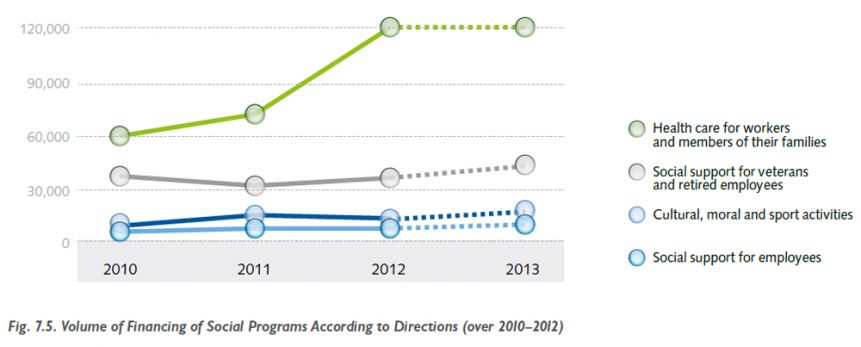
NIAEP made sequential contribution to execution of the state family, maternity and childhood support policy. Employees receive 25 thousand rubles in case of marriage and 55 thousand rubles in case of childbirth. In the reporting period the allowance to families with three and more children under 18 years old amounted to 36 thousand rubles per year for each child (see Fig. 7.6).
Fig. 7.6. NIAEP Social Benefits Paid to Large Families, Ths. Rub.
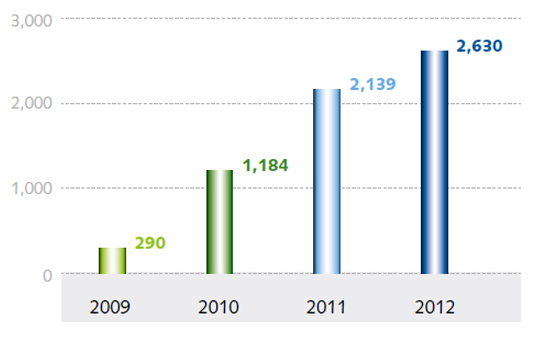
In the reporting period child-care leave in the Company was granted to women only. Only women as well were among the employees who returned after child-care leave within 2012.
NIAEP considers it important to encourage effective and creative labor of its employees. The amount of incentive payments pursuant to state or departmental rewards for special labor achievements and great personal contribution to execution of production plans amounted to 3.1 million rubles in the reporting period.
Within a number of years the Company concluded contracts with insurance medical companies on organization and payment of medical assistance to the employees. The number of VMI-insured employees increases yearly. The employees of the Central Office, branches and representation are insured according to unified programs. Funds allocated for voluntary medical insurance are also subject to year-to-year increase and amounted to approximately 25 million rubles in 2012 (see Fig. 7.7).
Fig. 7.7. Number of VMI-Insured Employees
(over 2010-2012), People
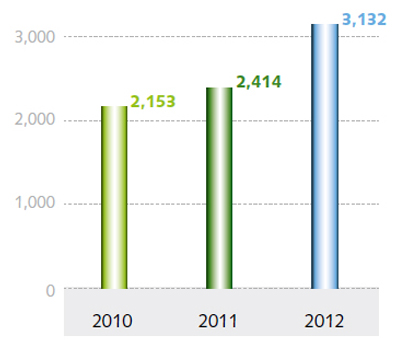
Special attention is paid to prevention and early detection of serious diseases, including vascular heart diseases, flu, cancerous and other diseases. The employees are informed about standard requirements for conditions at working place, and necessary and obligatory personal and collective protection equipment for prevention of diseases. All employees of NIAEP have the opportunity of health inspection, timely detection and treatment of diseases. In connection with invariably high level of cancer morbidity among the population the annual preventive medical inspection was organized for the employees aged 45 and older, in order to detect cancerous diseases at early stages. The employees annually undergo vaccination against flu. The Collective Agreement guarantees material assistance allocated for treatment on a paid basis to an employee suffering from a serious disease.
A significant scope of work on arrangement of healthcare and recreation of the employees and members of their families is performed by the Company’s administration in cooperation with the Trade Union. By tradition Corporate Healthcare Days are held with camping in the country, including Family events timed to the International Children Day. NIAEP organizes annual out-of-town trips for all employees within the frames of the Education Day. Healthcare corporate activities contribute to establishment of favorable social climate in the team.
Table 7.32. Number of Employees Who Took Child-Care Leave and Returned from Such Leave in 2012, and the Share of Employees Who Remained in the Company after Child-Care Leave, by Sex, as of December 31, 2012

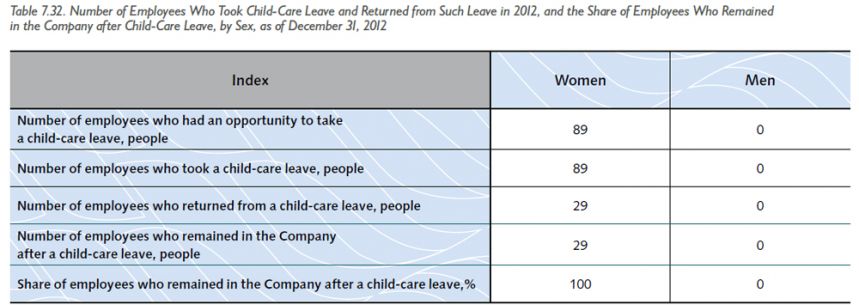
In 2012 the Company’s management carried out meetings with the employees’ children (first graders and school graduates), as well as with veterans. A number of children creativity competitions took place. In cooperation with the Trade Union the Company arranges festive and entertainment programs within the frames of national-wide and professional holidays. Works by Nizhny Novgorod artists and photographers are regularly exhibited in the NIAEP building; exhibitions are constantly updated. The issue-related photo show was presented in the building within the frames of the Victory Day.
Over 600 employees of the Company are actively involved in sport activities. All people interested are welcome to sport groups, rented swimming pools and training halls for five-a-side, volleyball and other sports. In 2012 the NIAEP team took the first place in the 10th Friendship Festival held among the companies of State Corporation ROSATOM in Nizhny Novgorod, successfully performed at ROSATOM Cup 2012 and at the annual sports contest of the Chamber of Commerce and Industry the Nizhny Novgorod Region.
The Collective Agreement stipulates for social guarantees not only for currently employed people, but for NIAEP veterans as well. On retirement employees receive a one-time payment in the amount of two basic wages. NIAEP executes the program on social support of pensioners. NIAEP pensioners and veterans receive monthly social allowance in the amount of up to 1,150 rubles. In 2012 payments were made in the total amount of 2.5 million rubles to 220 people. In cooperation with the Council of Veterans NIAEP arranges leisure and entertainment activities for pensioners, attracts them to participation in significant events of NIAEP. Veterans employed in NIAEP are provided with medical care on the basis of VMI.
NIAEP also supports veterans of the Great Patriotic War. Annually, on the eve of the Victory Day meetings of the NIAEP management with veterans are held. Victory Day Payments to every veteran amount to 50 thousand rubles.
HR Management
The main strategic goal in the field of HR management is achievement of NIAEP competitive advantage through increase in effectiveness and qualification of employees with preservation of key competences. The main management tasks of HR management are specified in Table 7.15.
Table 7.15. Main Management Tasks of HR Management

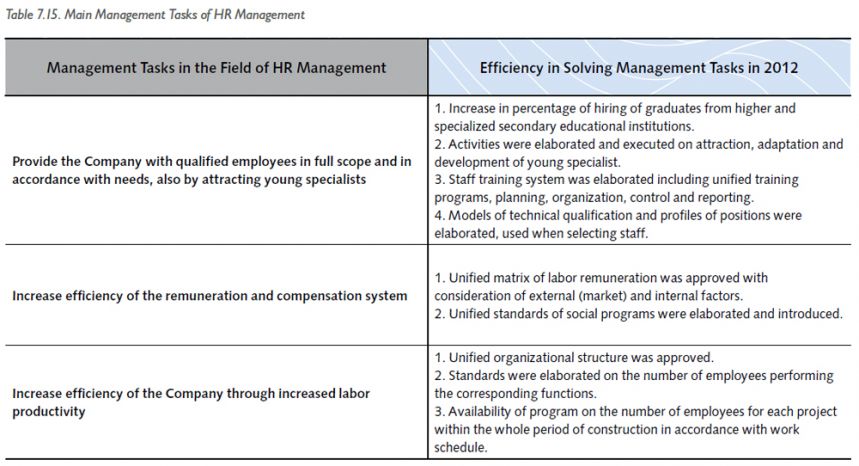
Social and labor relations in NIAEP are regulated by the following documents:
- Labor Code of the Russian Federation;
- Industry-Specific Agreement on Nuclear Energy, Industry and Science for 2012–2014;
- NIAEP Charter;
- NIAEP Regulations on Internal Labor Order;
- NIAEP Code of Corporate Conduct;
- Company’s Standard No. 25-01-12 Staff Training (approved on September 30, 2012);
- Company’s Standard No. 25-02-12 Arrangement of Recruitment, Hiring and Adaptation of Staff (approved on December 26, 2012);
- Provision on Certification of Managers and Specialist of JSC NIAEP approved by Order No. 697 of August 8, 2011;
- Provision on Annual Performance Assessment of JSC NIAEP Employees approved by Order No. 40/250-P of March 30, 2012;
- Collective Agreement for 2013–2014.
In social partnership the NIAEP employees are represented by the Trade Union. The primary association of employees of the nuclear power engineering and industry is registered in the Company. The NIAEP administration creates the conditions necessary for operation of the Trade Union and takes into account its opinion in cases stipulated by legislation.
For the second year in a row within the project of State Corporation ROSATOM, NIAEP participates in the survey on staff involvement of its employees. Involvement means personal interest of employees in achievement of the Company’s strategic goals and is directly connected with financial results. According to a 2012 survey, the level of involvement in NIAEP amounted to 80%, which is 18% higher as compared to the industry in whole. Thanks to the high level of involvement the Company entered the number of organizations participating in the international survey which were awarded the title of the Best Employer.
Stable involvement is a true reflection of the situation in the Company, where the main factors of success include satisfaction of employees with the top management having a clear vision of the future, attractive image of NIAEP on the labor market and on the product market, trust of employees in the long term stability and success of NIAEP.
Remuneration
An effective system of labor remuneration and compensations is applied in NIAEP providing for adequate wage level and encouraging the employees to achieve the NIAEP strategic and operating goals. The Provision on Labor Remuneration to the NIAEP Employees is elaborated in accordance with the Unified Labor Remuneration System of State Corporation ROSATOM (ULRS).
The ULRS has been applied in ASE since October 1, 2012. Within preparation for introduction of the system the following activities were carried out in ASE:
- Evaluation and ranging of positions, elaboration of an ASE positions classification;
- Preparation for the analysis of current and ULRS-planned wages paid to the ASE employees;
- Elaboration of a matrix of wages paid to the ASE employees in Russian and foreign currencies;
- Elaboration and approval of the Provision on Labor Remuneration to the ASE Employees, Regulation ASE.004-2012;
- Elaboration and approval of the Provision on Assessment of Monthly Key Tasks, Regulation ASE.005-2012.
In 2012 the average wage in JSC NIAEP amounted to 81,480 rubles (see Table 7.16).
Table 7.16. Average monthly wages at JSC NIAEP

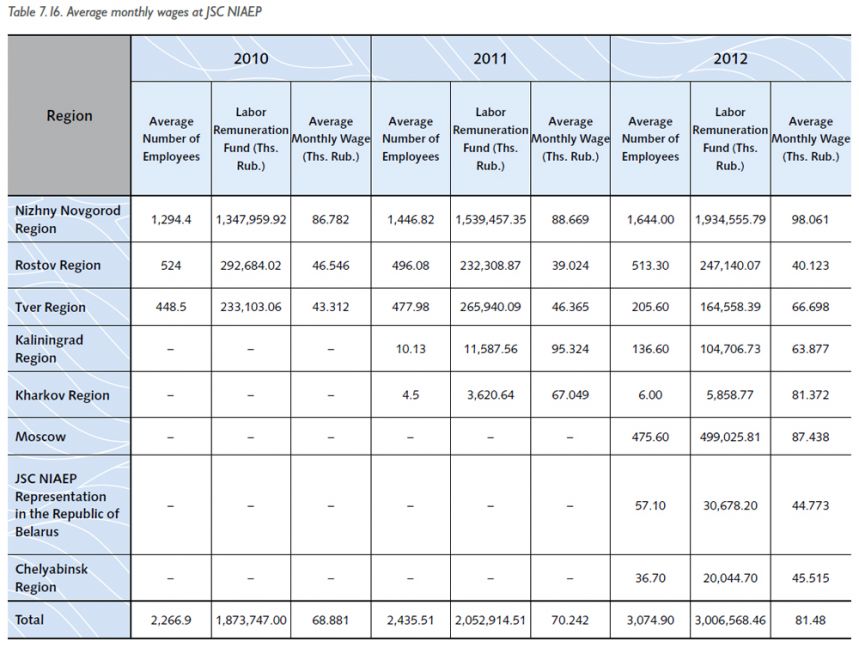
Table 7.17. Ratio of Basic Wages in NIAEP Central Office According to Sex


Table 7.18. Ratio of Basic Wages in NIAEP Belarusian Representation According to Sex


Table 7.19. Ratio of Basic Wages in NIAEP Baltic Branch According to Sex


Table 7.20. Ratio of Basic Wages in NIAEP Udomlya Branch According to Sex


Table 7.21. Ratio of Basic Wages in NIAEP Moscow Branch According to Sex


Table 7.22. Ratio of Basic Wages in NIAEP Yuzhnouralsk Branch According to Sex


Table 7.23. Ratio of Basic Wages in NIAEP Volgodonsk Branch According to Sex


Differences in basic wages of various staff categories are connected with the fact that in 2012 positions taken by male employees and female employees belonged to various grades. For instance, the minimum wage of a female manager refers to grade 14 (stock manager, logistics manager), and of a male manager to grade 11 (production manager, master). In 2012 no men occupied the positions of stock manager and logistics manager. Wages of men and women within one grade are equal.
The NIAEP Provision on Labor Remuneration provides for unified principles in organization of labor remuneration and financial incentives of the employees and establishes the wage rate determination procedure.
The wage includes:
- Position wage rate;
- Incentive payment:
- Integrated incentive markup (IIM);
- Integrated incentive markup for fulfillment of performance targets (IIM PT);
- Motivational payments:
- Bonus for fulfillment of key performance indices (KPI);
- Bonus for fulfillment of very important task;
- Compensatory payments for fulfillment of work in conditions other than normal (including markups for work with information presenting a state secret);
- Other payments stipulated by the Labor Code of the Russian Federation.
The KPI system is aimed at achievement of Integrated Company’s strategic goals through placement of tasks to managers and workers and provision of correlation of these tasks with the Company’s goals.
The amount of wage rate, IIM, and bonuses for KPI fulfillment depend on the level of an employee’s position, his or her professional competences and effectiveness.
Each position and profession of a certain qualification category in the corporate schedule of NIAEP is assigned a grade and inter-grade zone. The position (profession) grade is based on characteristics of this position (profession) and its value for NIAEP. The inter-grade zones are used to range the structural subdivisions and single positions (professions) according to priority.
The IIM is introduced as an instrument helping to determine the money remuneration of an employee corresponding to his or her professional competence and effectiveness of labor (professional status). The IIM PT is generally paid to workers of large production subdivisions.
The employees are given bonuses pursuant to the results of KPI fulfillment once a year. The NIAEP key performance indices are described in the NIAEP President Map of KPI and translated or decomposed to subordinated workers and structural subdivisions. Fulfillment of key goals and KPI by a worker or structural subdivision leads to fulfillment of goals and KPI of NIAEP in whole or top managers. The key performance indices are established for one year in accordance with the major goals of a worker or structural subdivision and functional workload (see Table 7.24).
Table 7.24. Fulfillment of
KPI by President of NIAEP in 2010–2012

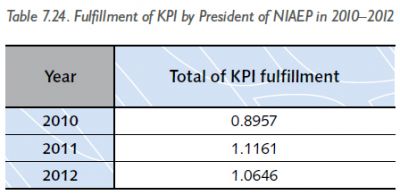
Due to the fact that the key performance indices of the Vice-President are built on the principle of the President KPI decomposition, the final ratios are also connected with the level of fulfillment of the President KPI. The amount of bonus directly depends on the ratio of KPI fulfillment. Thus, remuneration of a top-manager of the Company will directly depend on fulfillment of the assigned tasks.
For the purpose of flat incentives the employees may receive bonuses for fulfillment of very important tasks pursuant to the Decision of the NIAEP President. The very important tasks include tasks connected with special requirements for time-frame and quality and imposing higher responsibility on the executing employee.
The approach to labor remuneration of top managers is equal to the approach of labor remuneration of other workers. The incentive system for top managers and other managers is based on ULRS. The wage of top managers includes a fixed part and an annual bonus, with the amount of the latter depending on KPI performance.
Issues connected with President labor remuneration are regulated by the Labor Agreement, Decisions of the Board of Directors and Provision on Labor Remuneration of NIAEP.
One of the basic principles of the labor remuneration system in NIAEP consists in assurance of equal opportunities for various age-sex groups.
Staff Training
The staff professional training and development system is elaborated and updated with consideration of tasks and strategic priorities of NIAEP. The staff training system is applied in NIAEP which covers all levels of the Company’s staff and includes assessment of training effectiveness. This system is constantly updated in connection with rapidly changing market conditions.
The activity on staff training in NIAEP is regulated by Company’s Standard No. 25-01-12 Staff Training.
1,429 NIAEP employees have improved their professional skills and received training in educational centers of State Corporation ROSATOM and other organizations in 2012 (see Table 7.25).
Table 7.25. Number of NIAEP Employees Who Received Training

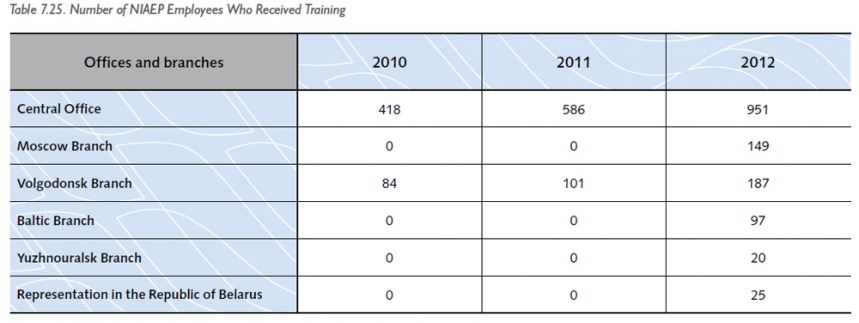
Main training courses called for in 2012:
- Planning and control with application of Primavera, basic course;
- Planning and control with application of Primavera, advanced course;
- Elaboration of estimate documentation for construction, repair and construction, mounting and commissioning operations;
- Environmental management system, internal audit in accordance with international standards ISO 14001:2004, ISO 19001:2011, and OHSAS 18001:2007;
- Management of procurement activity in nuclear power industry on the basis of the Unified Industry-Specific Procurement Standard.
Additional target training in the field of IT applied in NIAEP was provided to 80 managers in 2012. The training was arranged in June and October in the Volgodonsky and Baltic Branches on the following subjects:
- Production logistics;
- Innovative methods of management and designing;
- Management and engineering of complex technical facilities;
- Introduction of information technologies into designing and production.
Lectures and practical training were carried out by the highly qualified employees of NIAEP and leading lecturers of the Nizhny Novgorod Alekseev State Technical University. The training took place in both full-time and remote modes (with application of remote means of communication).
In 2012 NIAEP training expenditures amounted to 13,807 thousand rubles or 0.3% of the remuneration fund. In 2012 expenses for training of one employee with consideration of external and internal education excluding expenses for obligatory education amounted to 3,800 rubles (2,720 rubles in 2010, 3,115 rubles in 2011).
The average number of training hours increases yearly (see Table 7.27).
In 2012 Globalization Leaders Development Program and Globalization Participants Development Program were launched. These programs are aimed at identification and development of specialists having skills in the field of international business. The programs on development of globalization leaders and participants provide for off-the-job training lasting 2-3 days every month. Experts with international experience from leading business schools are invited in the capacity of lecturers. In 2013 the participants of the programs received Industrial Expert of International Level certificates. 12 employees of NIAEP took part in the globalization leaders and participants development programs.
Table 7.26. NIAEP-ASE Expenses for Staff Training


Table 7.27. Average Number of Training Hours per NIAEP/ASE Employee


1 employee of NIAEP is studying at Skolkovo International Management School under the educational program Engineering Innovations Management in State Corporation ROSATOM. The program participants investigate contemporary models of arrangement of scientific and research activity which are applied in modern European countries.
Work with HR Reserve
Currently, growth of HR potential is one of the most significant tasks of NIAEP management. In 2012 HR reserve was approved in the Company.
During appointment of employees to managing positions in NIAEP, priority is given to internal candidates selected normally from the HR reserve. In 2012
27.4% of vacancies were filled by managers from the HR reserve (see Table 7.28).
Table 7.28. NIAEP HR Reserve Structure in 2012


In accordance with NIAEP Order No. 40\482-P of May 30, 2012 the initial program was approved on elaboration of corporate skills of the employees included in the HR reserve.
Within the frames of the approved program 27 employees from the NIAEP HR reserve received training in the period from September to November 2012. The program included 48 hours of training lessons on the following subjects:
- Efficient manager
- Effective communication
- Changes management
- Activity planning and arrangement.
Staff Assessment
The staff assessment system is applied in NIAEP and ASE. The results of assessment are used for decision making in the process of HR management.
Staff assessment is part of the employee effectiveness management model. The assessment system allows an employee to understand which results an employer expects from him or her and which criteria will be used to assess his or her performance, and to implement career expectations and obtain recognition.
In 2012 NIAEP-ASE managers and specialists participated in various assessment procedures:
- In accordance with the Order of State Corporation ROSATOM on Execution of the Integrated Program on Professional Development of Managers Working in the Industry and ROSATOM Reserve Development, 18 managers of NIAEP took part in the event aimed at assessment of managerial skills (Capsim business stimulation) within the TOP-1000 evaluation;
- In accordance with the NIAEP Order on Arrangement of Testing and Training for HR Reserve Employees, 84 NIAEP employees passed the test for determination of their level of managerial skills;
- In accordance with the NIAEP Order on Annual Assessment of Employees Performance, 218 employees of NIAEP and 119 employees of ASE participated in the annual assessment procedure REKORD (including 78% of men and 22% of women).
Plans for staff evaluation in 2013:
- 830 employees will go through the annual REKORD performance assessment procedure;
- 200 employees will be tested for determination of their level of managerial skills;
- Assessment of managers appointed to positions of the TOP-1000 level.
According to the performance assessment, the system of individual financial incentives of an employee can be reviewed; a decision can be made on his or her transfer to a higher position or on inclusion in the HR reserve.
Results of staff assessment are of great importance both for the NIAEP management, and for each single employee. Support of the assessment process by the top and middle management of NIAEP is the key factor of success of all assessment activities.
Table 7.29. Share of NIAEP Employees Subject to Performance and Career Development Assessment


Attraction of Young Specialists and Cooperation with Institutions of Higher Education
Planning its long-term development, NIAEP is eager to attract graduates of field-specific institutions of higher education.
In 2010 NIAEP instituted the Pozdyshev monthly grant in the amount of 5 thousand rubles. Currently, the grant is paid to 15 senior students from field-specific institutions of higher education: Nizhny Novgorod Alekseev State Technical University (NNSTU) and Nizhny Novgorod State Architecture and Construction University. All grant holders were selected on a competitive basis according to the results of assessment of progress in studies, public activity, and interest in profession.
In 2012 the Basic Chair of Lifecycle Management System for Complex Engineering Facilities was established in NNSTU. President of NIAEP V.I. Limarenko, Doctor of Economic Sciences, headed the Chair. Students of the University and employees of NIAEP study there.
In 2012 models of professional skills required to take engineering positions of designing subdivision were elaborated in cooperation with the employees of the Sarov Physical and Technical Institute of the National Research Nuclear University MEPhI (NRNU MEPhI). These models are applied during preparation and selection of graduates for employment in NIAEP.
In accordance with contracts between NIAEP and institutions of higher education, students from the following institutes and universities may undergo practical training in NIAEP:
- Russian Presidential Academy of National Economy and Public Administration (RANEPA);
- The Nizhny Novgorod State Architecture and Construction University (NNSACU);
- Nizhny Novgorod Alekseev State Technical University (NNSTU);
- Lobachevsky Nizhny Novgorod State University;
- Balakhna Polytechnic College;
- National Research Nuclear University MEPhI.
During the reporting period 85 people underwent all types of practical training in NIAEP.
250 senior students of the Volgodonsk Engineering and Technical Institute, National Research Nuclear University MEPhI, NNSTU, South-Russian State Technical University, Azov-Black Sea State Agricultural and Engineering Academy and Kostroma State Agricultural Academy worked on the Rostov NPP construction site within 5 construction teams from the beginning of July till the end of August 2012.
On the basis of contracts, 5 students of institutions of higher education underwent pre-degree practice and internship in ASE in 2012.
Plans on cooperation with institutions of higher education in 2013 are as follows:
- 300 students from different institutions of higher education will participate in work of construction student teams on construction sites of the Volgodonsk Branch;
- 100 students from different institutions of higher education will undergo internship in the NIAEP structural subdivisions;
- 40 senior students from two field-specific institutions of higher education (Nizhny Novgorod State Technical University and Nizhny Novgorod State Architecture and Construction University) will participate in elimination round for participation in the
Pozdyshev Grant program;
55 students will proceed with education on the Basic Chair of Lifecycle Management System for Complex Engineering Facilities.
Table 7.30. Work with Students in 2012
 >
>

Youth Policy
The NIAEP youth policy is focused on creation of conditions for attraction and retention, encouragement of initiative, improvement of professional skills and assistance in self-realization of young specialists.
The program of professional orientation and adaptation of young specialists was elaborated in NIAEP.
To help young professionals acquire the necessary professional skills quickly, NIAEP established the mentorship institute within which the most skilled employees are engaged in adaptation and training of newcomers.

In accordance with the Collective Agreement, the labor of mentors is remunerated: in 2012 mentorship expenses amounted to 291 thousand rubles.
Young specialists are actively engaged in scientific and innovative activity.
In June 2012 the 4th Scientific and Technical Conference of Young Scientists and Specialists of Nuclear Industry Team-2012 took place in St. Petersburg. The NIAEP delegation was represented by 7 young specialists. Anna Yuryevna Dodonova, Engineer of the Department for Filling of Catalogues of the Directorate for Informational Development Projects (DIDP), took first place in the section Economy and Procurement Activity.
In July 2012, 10 young specialists of NIAEP took part in the Second Youth Innovation Forum Forsazh–2012 organized at the initiative of State Corporation ROSATOM. The main goals of the Forum consisted in establishment of communication between employees of various divisions and shaping of notion on branch structure and operation of its parts.
Young specialists participated in field-specific creative and sport festivals and competitions.
2012 the young team of NIAEP took the first place at the Festival of Friendship arranged by State Corporation ROSATOM and NNSTU.
Table 7.31.Mentorship Expenses in 2010-2012, Ths. Rubles


Inter-Company Communications
Procedures for communication between employees and top managers are established in the Company. Employees may give recommendations to the highest managing body by means of internal electronic network.
In addition, the employees may lodge various complaints, including those referring to human rights, through this network and the Company’s website or the Trade Union Committee.
Quarterly the Information Sharing Days are held in the Company. The managers of the Company and structural subdivisions answer the employees’ questions by means of video materials prepared by State Corporation ROSATOM. The package of materials is formed to hand down the information to the subordinates in the most precise way.
Social Policy
The NIAEP activity in the field of social and labor relations is based on the Labor Code of the Russian Federation, the Industry-Specific Agreement on Nuclear Energy, Industry and Science for 2012-2014 and documents regulating the NIAEP activity, in particular the NIAEP Charter, the Regulations on Internal Labor Order, the Code of Corporate Ethics and the Collective Agreement.
All social benefits and guarantees to the NIAEP employees are formalized in the Collective Agreement and put into practice in accordance with the unified social policy of State Corporation ROSATOM within current social programs. Social benefits are provided to regular employees.
In social partnership the NIAEP employees are represented by the Trade Union. A primary association of employees of the nuclear power engineering and industry is registered in the Company. The NIAEP administration complies with the conditions necessary for operation of the Trade Union and takes into account its opinion in cases stipulated by legislation. The Youth Board and the Council of Veterans actively operate in the Company.
The NIAEP obligations as an employer in the field of social guarantees and benefits to the employees are formalized in the Collective Agreement and Annexes setting forth specific sums and payment procedures. The provisions of the Agreement apply to all NIAEP employees independent of their membership in the Trade Union. Thus, 100% of employees are covered by social programs.
In December 2012, upon collective negotiations, a conference of employees was carried out to sum up the results of execution of the NIAEP Collective Agreement in 2010–2012 and to adopt the Agreement for 2013-2014. In the course of the conference the delegates unanimously acknowledged that administration’s obligations on execution of Collective Agreement for 2010–2012 had been fulfilled. The Collective Agreement for 2013–2014 stipulates new types of one-time social benefits, monthly payments to employees being on maternity leave, benefits to employees in case of serious diseases of a child, increase in payments to veterans, and other benefits.
The Collective Agreement stipulates that the Agreement itself and all changes and amendments to it shall be brought to the notice of the employees within one month from the date of signing. Sharing of information is executed by means of allocation of the document’s full text in the electronic network of the Company. In addition, regulatory acts of NIAEP reflecting all significant changes in the Company’s activity shall also be uploaded to the internal electronic network on the date of signing.
The volume of monetary funds allocated by NIAEP for activities of social nature increases annually (see Fig. 7.3).
In 2012 the amount of social benefits per one employee was 19% higher compared to the same index achieved in 2011. In 2013 it is planned to further increase this value. A significant part of payments refers to material assistance to the employees.
The volume of financing of social programs according to directions over 2010–2012 is shown in Figure 7.5.
In 2012 the most considerable increase was achieved in respect of expenses for social support of the employees. This is mainly considered by increase in number of the Company’s staff.
In 2012 the program on assistance to the Company’s employees in procurement of lodgings was updated and approved. Approval of the reviewed program made it possible to provide the employees with interest-free loans for initial installment for procurement of lodgings. In 2012 nearly 6 million rubles were allocated for execution of this program, and over 40 employees got reimbursed for payment of interests on mortgage loans. According to the results of application campaign, in 2012 the number of the program participants increased by 37 people, and the total majority is represented by the employees aged under 35.
A significant part of payments refer to material assistance to employees. In the reporting period, 660 material assistance payments were made in the total amount of 16 million rubles. All payments were made in accordance with the Provision on Rendering Material Assistance.
Fig. 7.3. Total Social Expenses of NIAEP, Ths. Rub.
Fig. 7.4. Total Social Benefits per Employee, Ths. Rub.
Fig. 7.5. Volume of Financing of Social Programs According to Directions (over 2010–2012)

NIAEP made sequential contribution to execution of the state family, maternity and childhood support policy. Employees receive 25 thousand rubles in case of marriage and 55 thousand rubles in case of childbirth. In the reporting period the allowance to families with three and more children under 18 years old amounted to 36 thousand rubles per year for each child (see Fig. 7.6).
Fig. 7.6. NIAEP Social Benefits Paid to Large Families, Ths. Rub.
In the reporting period child-care leave in the Company was granted to women only. Only women as well were among the employees who returned after child-care leave within 2012.
NIAEP considers it important to encourage effective and creative labor of its employees. The amount of incentive payments pursuant to state or departmental rewards for special labor achievements and great personal contribution to execution of production plans amounted to 3.1 million rubles in the reporting period.
Within a number of years the Company concluded contracts with insurance medical companies on organization and payment of medical assistance to the employees. The number of VMI-insured employees increases yearly. The employees of the Central Office, branches and representation are insured according to unified programs. Funds allocated for voluntary medical insurance are also subject to year-to-year increase and amounted to approximately 25 million rubles in 2012 (see Fig. 7.7).
Fig. 7.7. Number of VMI-Insured Employees
(over 2010-2012), People
Special attention is paid to prevention and early detection of serious diseases, including vascular heart diseases, flu, cancerous and other diseases. The employees are informed about standard requirements for conditions at working place, and necessary and obligatory personal and collective protection equipment for prevention of diseases. All employees of NIAEP have the opportunity of health inspection, timely detection and treatment of diseases. In connection with invariably high level of cancer morbidity among the population the annual preventive medical inspection was organized for the employees aged 45 and older, in order to detect cancerous diseases at early stages. The employees annually undergo vaccination against flu. The Collective Agreement guarantees material assistance allocated for treatment on a paid basis to an employee suffering from a serious disease.
A significant scope of work on arrangement of healthcare and recreation of the employees and members of their families is performed by the Company’s administration in cooperation with the Trade Union. By tradition Corporate Healthcare Days are held with camping in the country, including Family events timed to the International Children Day. NIAEP organizes annual out-of-town trips for all employees within the frames of the Education Day. Healthcare corporate activities contribute to establishment of favorable social climate in the team.
Table 7.32. Number of Employees Who Took Child-Care Leave and Returned from Such Leave in 2012, and the Share of Employees Who Remained in the Company after Child-Care Leave, by Sex, as of December 31, 2012


In 2012 the Company’s management carried out meetings with the employees’ children (first graders and school graduates), as well as with veterans. A number of children creativity competitions took place. In cooperation with the Trade Union the Company arranges festive and entertainment programs within the frames of national-wide and professional holidays. Works by Nizhny Novgorod artists and photographers are regularly exhibited in the NIAEP building; exhibitions are constantly updated. The issue-related photo show was presented in the building within the frames of the Victory Day.
Over 600 employees of the Company are actively involved in sport activities. All people interested are welcome to sport groups, rented swimming pools and training halls for five-a-side, volleyball and other sports. In 2012 the NIAEP team took the first place in the 10th Friendship Festival held among the companies of State Corporation ROSATOM in Nizhny Novgorod, successfully performed at ROSATOM Cup 2012 and at the annual sports contest of the Chamber of Commerce and Industry the Nizhny Novgorod Region.
The Collective Agreement stipulates for social guarantees not only for currently employed people, but for NIAEP veterans as well. On retirement employees receive a one-time payment in the amount of two basic wages. NIAEP executes the program on social support of pensioners. NIAEP pensioners and veterans receive monthly social allowance in the amount of up to 1,150 rubles. In 2012 payments were made in the total amount of 2.5 million rubles to 220 people. In cooperation with the Council of Veterans NIAEP arranges leisure and entertainment activities for pensioners, attracts them to participation in significant events of NIAEP. Veterans employed in NIAEP are provided with medical care on the basis of VMI.
NIAEP also supports veterans of the Great Patriotic War. Annually, on the eve of the Victory Day meetings of the NIAEP management with veterans are held. Victory Day Payments to every veteran amount to 50 thousand rubles.
Occupational Safety Management
The Integrated Management System (IMS) is applied in NIAEP-ASE Integrated Company. One part of this System is the Safety Management System (OHSAS 18001:2007). The Safety Management System is introduced into all organizations included in the Integrated Company.
The Integrated Company constantly improves the Occupational Safety Management System and executes measures on prevention of industrial injuries and occupational diseases, improvement of labor conditions, and carries out training for managers and specialists on professional development in respect of labor protection. These directions of employer’s activity are formalized in the current Collective Agreements and are of special importance. The NIAEP activity connected with health and safety is reflected in the Collective Agreement in form of a contract on labor protection.
The main documents regulating accounting, analysis, investigation and registration of occupational accidents and diseases, as well as notifying and reporting on occupational accidents and diseases, include:
- Labor Code of the Russian Federation;
- Decree of the Ministry of Labor and Social Development of the Russian Federation No. 73 on Approval of Forms of Documents Required for Investigation and Accounting of Occupational Accidents and provisions on investigation of occupational accidents in certain branches and organizations dated October 24, 2002;
- Decree of the Government of the Russian Federation No. 967 on Approval of the Provision on Investigation and Accounting of Occupational Diseases of December 15, 2000;
- R GK.007-2012 Procedure for Investigation of Accidents, Emergency Situations and Incidents in ASE, NIAEP Moscow Branch and NIAEP Moscow Representation;
- Order of NIAEP No. 395 on Approval of Procedure for Informing NIAEP and State Corporation ROSATOM Managements on Occurrence of Emergency Situations dated May 20, 2011.
Occupational safety is one of the key priorities of NIAEP. In accordance with the Occupational Safety Management System of State Corporation ROSATOM, every NIAEP subdivision applies its own management system aimed at prevention of industrial injuries and occupational diseases, improvement of labor conditions and labor protection. The Occupational Safety Management system is established on the basis of regulatory framework on labor protection of the Russian and industry-specific legislation, which is confirmed by Certificate of Compliance of Labor Protection Activities (Safety Certificate) ROSS RU No. 011039 (see Fig. 7.8).
Table 7.33 below shows levels of industrial injuries and occupational diseases, ratio of lost days, ratio of workplace absence, and the total number of fatal accidents in 2012.
Table 7.33. Occurrence Rate of Industrial Injuries

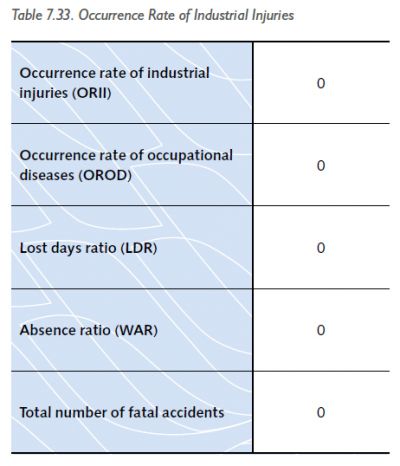 The Company’s branches keep records of accidents involving workers of subcontracting organizations. The contracts with subcontracting organizations include requirements for informing of NIAEP on all cases of industrial injuries on construction sites.
The Company’s branches keep records of accidents involving workers of subcontracting organizations. The contracts with subcontracting organizations include requirements for informing of NIAEP on all cases of industrial injuries on construction sites.
Total number of accidents at Yuzhnouralsk TPP-2 in 2012:
- OJSC South Power Engineering Center – 1 case, 1 person;
- Stroymontazh Ltd. – 1 case, 1 person.
Total number of fatal accidents on Yuzhnouralsk TPP-2 in 2012:
- OJSC South Power Engineering Center – 1 case, 1 person;
- Stroymontazh Ltd. – 1 case, 1 person.
Fig. 7.8. Occupational Safety Management System
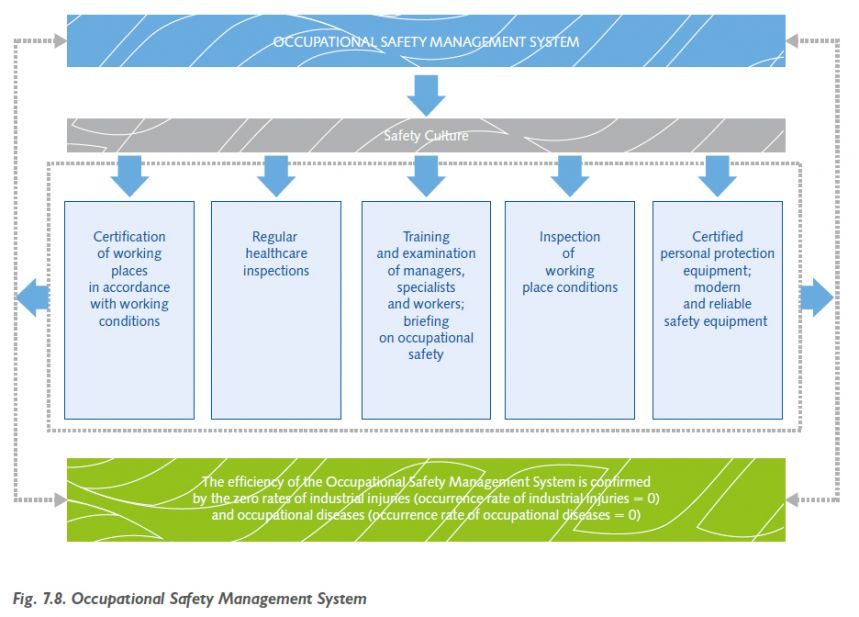
NIAEP Occupational Safety Assurance 20
NIAEP identified possible dangers and risks and set strategic goals in respect of labor safety and protection, elaborated programs on achievement these goals, and provided for total involvement of the employees in development of the current Labor Safety Management System.
The Company pays special attention to regular healthcare inspections of the employees working in conditions of exposure to various workplace factors. Medical attendance of this group of employees is carried out by the territorial field-specific medical centers of the Federal Medical and Biological Agency of the Russian Federation (FMBA Russia). In 2011–2012, 1,560 people (over 60% of employees) were examined in these centers in accordance with the requirements of Decree of the Ministry of Health and Social Development No. 302n on Approval of Lists of Harmful and Dangerous Workplace Factors and Operations Requiring to Carry out Preliminary and Regular Medical Examinations (Surveys) and Order of Obligatory Preliminary and Regular Medical Examinations of Employees Performing Hard Work or Operating in Harmful and Dangerous Conditions of April 12, 2011.
A specialized training center is used to carry out annual training and examinations on labor protection for managers and specialists and training on first-aid treatment for workers.
Constant attention of the management to issues of labor protection and high assessment of the Occupational Safety Department’s activity by the state regulatory and supervision agencies formed the positive image of our organization among the industry-specific companies and partners.
The volume of financing for execution of measures on labor safety increases year to year (see Fig. 7.9).
Fig. 7.9. Volume of Financing of Occupational
Safety Measures in 2010–2012, Ths. Rub.

The employees of the NIAEP structural occupational safety subdivisions coordinate the actions of labor safety departments of subcontracting organizations working on construction sites. In order to perform work safely on sites and reduce the occurrence rate of occupational injuries, the Company elaborated and introduced the Company’s Standard on Procedures for Recruitment of Contracting Organizations for Work Performance on NIAEP Sites. Contracts with subcontracting organizations include sections on safety requirements, and requirements for informing NIAEP on any emergency situations. Coordination of activity also includes the necessity to carry out annual sessions of safe performance of work, daily watch by occupational safety employees of subcontracting organizations on construction sites, and monthly Labor Safety Days. The NIAEP branches keep constant records of accidents involving workers of subcontracting organizations.
Integrated and systematic work on occupational safety permitted to achieve zero-rates of industrial injuries (ORII = 0) and occupational diseases (OROD = 0) among the employees since 2000.
In 2013 it is planned to execute a number of activities aimed at increase in the role of the Occupational Safety Department taking into account the necessity to provide control over safety during work performance by contracting organizations and subsidiaries on construction sites of generating units.
Occupational Safety Assurance at the NIAEP Moscow Branch and ASE
Main documents regulating activity on occupational safety in the NIAEP Moscow Branch include:
- Plan of measures on occupational and industrial safety assurance in the NIAEP Moscow Branch for the current year (the plan for 2012 was fulfilled in full scope, and the plan for 2013 was elaborated);
- Guidelines on the professional risk assessment method;
- PU GK.003-2012 Occupational Safety in ASE, NIAEP Moscow Branch and NIAEP Moscow Representation;
- Order concerning the NIAEP Moscow Branch and ASE No. 152-mf-P/373 on Safety Assurance of Employees of NIAEP Moscow Branch and ASE of October 10, 2012.
 Assessment of situation in the field of occupational safety in independent structural subdivisions is carried out during internal audits. In 2012 the leading specialist in the field of occupational and industrial safety of the NIAEP Moscow Branch in cooperation with the employees of the Occupational, Industrial and Fire Safety Department (OIFSD) took part in 9 internal audits in the capacity of technical experts.
Assessment of situation in the field of occupational safety in independent structural subdivisions is carried out during internal audits. In 2012 the leading specialist in the field of occupational and industrial safety of the NIAEP Moscow Branch in cooperation with the employees of the Occupational, Industrial and Fire Safety Department (OIFSD) took part in 9 internal audits in the capacity of technical experts.
Moreover, the leading specialist in the field of occupational and industrial safety of the NIAEP Moscow Branch in cooperation with the similar ASE department control timely procurement and delivery of free protective clothes, shoes, and personal protection equipment (PPE). Information on purchased PPE delivered to construction sites and subdivisions is summed up quarterly.
In 2012 certification of 35 working places on compliance with the requirements for labor conditions was carried out in cooperation with Limited Liability Company Scientific and Research Institute in the Field of Labor Safety in Ivanovo.
In accordance with the Schedule of Regular Medical Examinations of the NIAEP Moscow Branch and ASE Employees in 2012, regular medical examinations (surveys) of employees occupied in heavy work or operating in harmful and (or) dangerous conditions were carried out.
In 2012 the following briefings were carried out:
- NIAEP Moscow Branch – 565 people;
- Third-party organizations – 65 people.
A total of 593 employees of the NIAEP Moscow Branch were trained and examined on labor safety requirements.
2012 the leading occupational safety specialist of the NIAEP Moscow Branch received training and was certified in the following fields:
- Occupational safety;
- Industrial safety;
- Fire safety;
- Electrical safety;
- Internal Audits of Occupational Safety and Healthcare Management Systems program in JSC Bureau Veritas Certification Rus.
Table 7.34. Scope of Training Programs in the Field of Occupational Safety and Number of Employees Trained in 2012

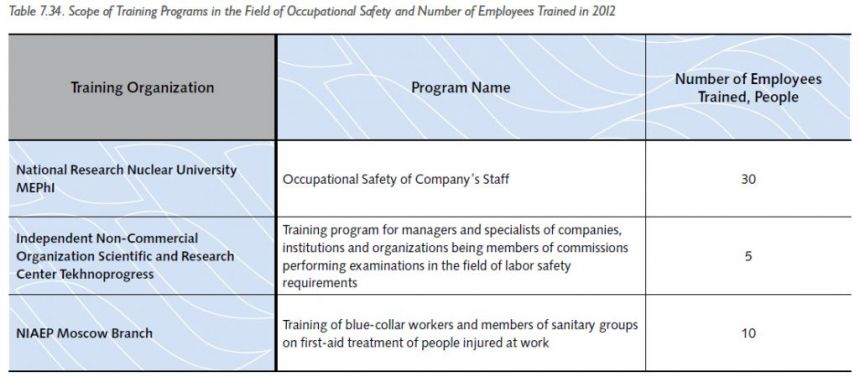
20 Excluding the Moscow Branch.
Natural Capital
Natural Capital 21
We are committed to responsible designing and construction of nuclear and thermal power energy facilities and acknowledge that functioning of Company’s subdivisions and branches, as any other anthropogenic activity, may lead to a negative impact upon the environment.
Environmental Policy 22
Our Environmental Policy complies with legislative requirements. The Company carries out and expands engineering activity in accordance with the requirements for environmental safety assurance and prevents deterioration of environmental resources.
The Environmental Policy is based on the principles as follows:
- Compliance principle means compliance with legislative and other requirements in the field of safety assurance and environmental protection;
- Continual improvement principle means the system of actions aimed at achievement and maintenance of high level of environmental safety;
- Prevention principle means the system of actions aimed at prevention of dangerous environmental impact;
- Readiness principle means constant readiness of the Company’s management and staff to prevention and remediation of radiation accident or other emergency situation on facilities under construction;
- Consistency principle means systematic and integrated assurance of environmental safety and performance of environmental activity by the Company’s subdivisions and branches;
- Openness principle means openness and availability of environmental information, and effective communication of the Company’s specialists and managers with the community.
The Environmental Policy was approved by State Corporation ROSATOM and brought into force by an order of the NIAEP President.
During elaboration of the Environmental Policy priority directions of its execution were determined as follows:
- Introduction of modern global technologies (Multi-D) into designing processes;
- Introduction of energy efficient and resource-saving technologies for construction of power facilities and methods of construction management;
- Assurance of compliance with the requirements of environmental legislation;
- Constant monitoring of the Company’s environmental impact, careful processing of collected data and application thereof in further work;
- Arrangement of necessary training for the employees whose production activity may lead to environmental pollution, their professional development and promotion of initiatives in the field of environmental conservation;
- Elaboration of environmental activity and safety economic management system.
The Company’s Environmental Policy is executed within the frames of environmental management system (EMS). EMS is elaborated on the basis of the Plan-Do-Check-Act (РDCA) model, including processes of planning, execution, control and action.
СEMS is a component of the Integrated Management System (IMS) of the Company. In addition to EMS, IMS includes Quality Management System and Safety Management System based on the requirements of standards ISO 9001:2008, ISO 14001:2004, OHSAS -18001:2007 with consideration of the requirements of the Russian legislation and IAEA.
Fig. 7.10. Environmental Management System Model
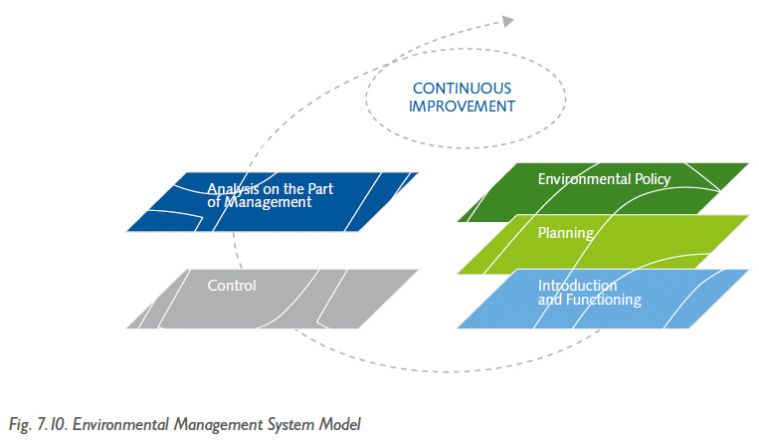
At the end of 2011 in order to prepare for elaboration of IMS, in particular EMS, the Company carried out environmental audit and defined environmental measures for further elaboration of documentation. In 2012 environmental audit of the Company’s Central Office was carried out and the Integrated Management System was elaborated.
In 2012 activities were carried out connected with IMS introduction:
- Elaboration of environmental aspects of subdivisions’ and organizations’ activity;
- Elaboration of ISM goals and tasks;
- Introduction of IMS to the employees;
- Elaboration of the required regulatory materials;
- Execution of pilot EMS audits in a number of subdivisions;
- Trial application of EMS elements in the NIAEP Central Office and branches.
2013 plans:
- Updating of elaborated documents;
- Internal audits in subdivisions;
- Pre-certification IMS audit;
- Corrective actions based on the results of IMS audits;
- Procurement of certificate on IMS compliance with the requirements of ISO 9001:2008, ISO 14001:2004, and OHSAS 18001:2007.
There are two types of Integrated Company’s impact on the environment:
- Impact of the Company’s activity as an economic entity;
- Impact of NPP generating units at all lifecycle stages.
Maximum environmental impact is exerted during construction of generating units. To control the impact of the Company’s production activity on the environment the following documents are being elaborated in the NIAEP Central Office and branches:
- Provision on Environmental Safety Assurance, Environmental Protection during Construction of Start-up Facilities;
- Provision on Industrial Environmental Control;
- Industrial Environmental Control Program;
- Plans of activities on reduction in waste generation and disposal.
These documents provide for division of responsibility between construction agents, include the scheme of cooperation with environmental authorities, regulate the issues on planning of environmental activity and industrial environmental control, etc.
21 In Chapter 7.4.1. Environmental Policy information refers to the Integrated Company in whole. In Chapters 7.4.2.–7.4.5. information is given with regard to JSC NIAEP only.
22 You may find additional information on the Company’s activity in the field of environmental protection on out website (www.niaep.ru in section – Activity – Environmental Policy).
Control over Subcontracting Organizations’ Activity Causing Environmental Impact
The main production activity connected with hazardous waste and emissions generation is carried out by subcontracting organizations performing construction and mounting and start-up operations in accordance with contracts.
Subcontracting organizations entering into agreements with the Company shall comply with the requirements as follows:
- Possession of a license for hazardous waste handling;
- Observance of limits on waste disposal approved by the territorial environmental authorities;
- Availability of hazardous waste certificate;
- Availability of draft standards on maximum permissible discharge;
- Payment of environmental impact taxes;
- Compliance with the requirements of the general contractor’s regulatory documents.
Control over environmental impact of subcontracting organizations, including requirements for environmental documentation, is carried out by inspectors of federal environmental authorities and employees of the Company’s Central Office and branches responsible for industrial environmental control.

Energy Efficiency Improvement
The NIAEP Environmental Policy is based on rational employment of natural resources. Initiatives on energy efficiency improvement are executed in two directions:
- Designing of energy efficient facilities of capital construction;
- Reduction in energy consumption through programs on saving of resources.
Within the first direction the Company introduced project solutions providing for increase in gross efficiency ratio of the designed NPP VVER-TOI project of 38% compared to 37% of the previous NPP-2006 project.
In May 2010 the 2010–2014 energy saving and efficiency improvement program was launched. This program provides for reduction in energy consumption by 17% by 2015. Saving of energy resource in the Central Office amounted to 10.87% in 2012 (planned value was 5%), which equaled to 251,765 kW/hour. Similar programs are executed in the NIAEP branches.
Saving of energy resources is achieved through the following activities:
- Introduction of automated electric energy control and metering system;
- Mounting of new energy efficient equipment;
- Reconstruction of internal and external lighting systems.
Key Environmental Impact Indices
Key Environmental Impact Indices 23
The major environmental impact is exerted by NIAEP during construction of generating units.
The level of this influence differs depending on lifecycle of the facility:
- Insignificant environmental impact at design stage;
- Significant environmental impact during construction of power facilities;
- Insignificant environmental impact of power facilities during operation.
NPP construction and operation lead to both positive and negative environmental impact.
Positive environmental effect consists in:
- Organic fuel substitution (natural gas, fuel oil, coal);
- Limitation of greenhouse gas emissions (contribution to fulfillment of the Kyoto Protocol by the Russian Federation).
Negative environmental impact caused by NIAEP includes:
- Generation of industrial and household waste;
- Emissions of pollutants into the atmosphere;
- Waste water discharge into water bodies.
According to the results of 2012, the indices of NIAEP environmental impact in respect of atmospheric emissions, waste waster discharge and waste generation were within the admissible limits. NIAEP was not subject to significant penalties and non-financial sanctions for non-compliance with the environmental legislation and regulatory requirements.
Used Materials
In 2012 the Udomlya Branch used no materials in connection with pre-commissioning start-up operations on the Kalinin NPP generating unit 4.
The share of purchased or used materials which were certified by the third-party organization with regard to consistency amounted to 8.26%. Expendable materials for NPP construction, except for soil, are purchased from external suppliers.
Table 7.35. Use of Materials by the Volgodonsk Branch in 2010–2012


Table 7.36. Use of Materials by the Baltic Branch in 2012 24


Materials which represent recycled or reused waste, except for soil excavated during excavation work, are not used at Company’s facilities. Soil accumulated during excavation of pits for buildings and structures is used for future back-fill of these structures. Nearly 60% of soil is used for back-fill, i.e. the whole pit is back-filled except for the volume of underground parts of structures. Back-fill is performed as far as underground parts of buildings and structures are constructed.
Waste Generation
During NPP construction production waste is generated similar to waste produced during TPP and CHPP construction of equal capacity. However, during further operation of nuclear power plants no branched fuel-handling systems are required which are typical of thermal power facilities operating on coal and fuel oil.
Waste is transferred to organizations possessing the corresponding licenses. Waste formed in the process of construction of NPP generating units is not recycled or reused. Quantitative indices of waste generation in the NIAEP branches are specified in Tables 7.37–7.39.
Table 7.37. Waste Generation at the Udomlya Branch


Significant reduction in waste generation with regard to all positions in 2012 is connected with completion of construction operations on the Kalinin NPP generating unit 4 and its commissioning.
Table 7.38. Waste Generation at the Volgodonsk Branch


Significant increase in waste quantity in 2012 is conditioned by increase in scope of work performed at Rostov NPP generating unit 4.
Table 7.39. Waste Generation at the Baltic Branch 25


Water Use
The Company is committed to the policy of rational use of natural resources and in the process of its activity it strives to use water taken for production and household needs in the most effective way. Water for construction and mounting operations, production of commercial concrete and mortar, manufacturing of steel structures at facilities of subcontracting organizations, and household needs is taken from the public water supply networks of the Udomelsky and Volgodonsk Branches. The Baltic Branch takes water for Baltic NPP construction from bored water wells (30,016 m3/year in 2012). No recycled water is used for construction purposes. Significant reduction in water withdrawn by the Udomlya Branch is conditioned by completion of construction operations on the Kalinin NPP generating unit 4 (see Fig. 7.11).
Fig. 7.11. Water Use at NIAEP Branches in 2010–2012, m3
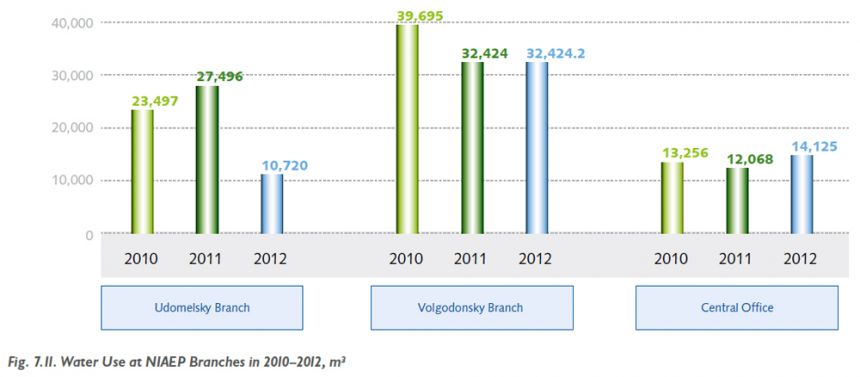
The water supply sources of the Central Office and NPP facilities under construction are not within the protected areas and constitute no danger in terms of biodiversity preservation. Water supply source of the Central Office is the Nizhny Novgorod municipal water supply system. During construction of the Kalininskaya and the Rostov NPPs water was not taken from natural water sources (surface and ground, including potable water). Table 7.40 specified average annual intensity of water consumption in the Company’s Central Office and branches.
Table 7.40. Water Use Intensity at NIAEP Offices and Branches, m3/day


Waste Water Discharge
The volume of discharged waste water on production sites is within the norms established by the legislation.
Waste water from the construction site of Kalinin NPP generating unit 4 comes from administrative and production buildings of the Udomlya Branch and subcontracting organizations to the NPP sewage systems and further to treatment plants of Udomlya. Storm water from the construction site come to the Udomlya Lake along the storm water system equipped with local treatment plants. Being a land and water user, the Kalinin NPP controls waste water composition within the frames of the Industrial Environmental Control Program.
At the Volgodonsk Branch waste water discharge to sewage systems is performed in the same way. Storm water from the construction site is processed at the treatment facilities of Volgodonsk and discharged to the heat sink of the Tsimlyansk Reservoir.
Figure 7.12 shows data on volume of waste water discharge in 2010–2012. The volume of waste water changes depending on stages of construction of generating units. Treatment facilities on the construction site of the Baltic NPP were not commissioned in 2012. Household and utility waste water of the Baltic Branch are removed by means of motor vehicles on the basis of contracts concluded with subcontracting organizations.
The sharp increase in water consumption and discharge at the Volgodonsk Branch in 2012 is conditioned by significant increase in scope of work. This multiple increase of environmental impact is admissible, it is stipulated by the corresponding norms and limits approved by the environmental authorities.
Emissions of Pollutants into the Atmosphere
Data on the volume of pollutants emitted into the atmosphere in 2012 from construction sites of NPP generating units are given on the basis of averaged data for subcontracting organizations and branches. Calculations are based on maximum allowable emission targets, data of field instrumental gauging performed by specialized organizations, and calculations of fuel balance of enterprises and payments made by enterprises for negative environmental impact.
There are stationary and fugitive emission sources on NPP construction sites. Stationary emission sources include exhaust ventilation pipes, cyclone outlets, deflectors and roof ventilators. Fugitive emission sources include open warehouses for storage of inert materials (sand and crushed stone), overturning areas, welding machines operating on open sites, and motor vehicles.
Fig. 7.12. Waste Water Discharge at NIAEP Branches, m3
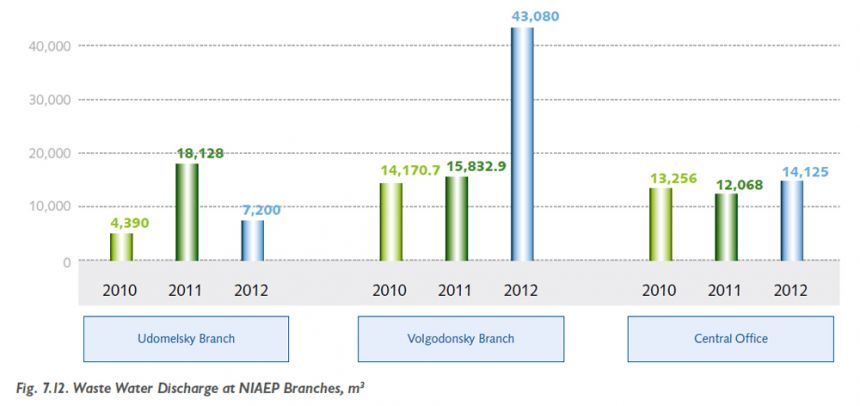
Fig. 7.13. Emissions of Pollutants into the Atmosphere, t
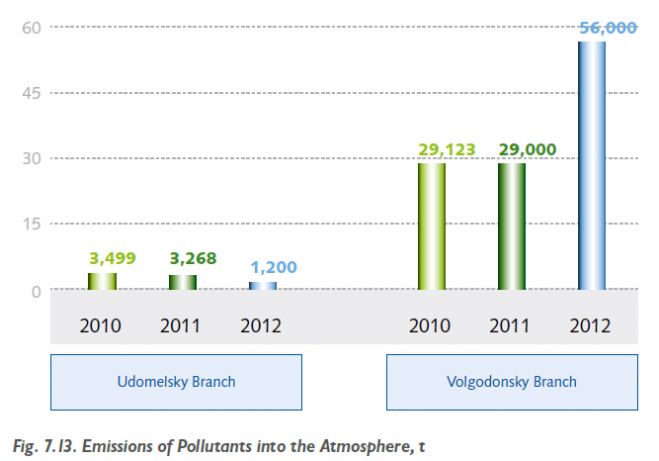
Reduction in volume of emitted pollutants on the construction site of Kalinin NPP generating unit 4 is conditioned by completion of construction operations in 2012. There are no stationary emission sources in the balance of the Baltic Branch.
Greenhouse Gas Emissions
During construction of NPP generating units NIAEP applies modern technologies which almost exclude greenhouse gas emissions. Greenhouse gases are emitted only in case of use of vehicles and construction machines, and the volume of emissions is comparable to the background level of greenhouse gas emissions (NOX, SOX, etc.) from motor vehicles and machines used in the process of human life activity. Indirect emissions conditioned by burning of organic fuel for heat and electricity supply of the Central Office are calculated on the basis of annual heat and electricity consumption.
There are no indirect greenhouse gas emissions conditioned by burning of organic fuel on construction sites, as in the reporting year the construction sites of the Kalininskaya and the Rostov NPPs were supplied with heat and electricity from the operating NPP units
Indirect emissions conditioned by burning of organic fuel for heat and electricity supply of the Central Office were calculated on the basis of annual heat and electricity consumption and amount to 1,840*106 m3.
Table 7.41. Direct Greenhouse Gas Emissions from Motor Vehicles, t of СО2 Equivalent


Table 7.42. Indirect Greenhouse Gas Emissions, t of СО2 Equivalent


Table 7.43. Intensity of Greenhouse Gas Emissions, t of СО2 Equivalent


Initiatives on emission reduction come to assurance of regular technical control over pollution from vehicles and machines and regulation of indices. In addition, it is possible to reduce greenhouse has emissions by purchasing new vehicles and construction machines with better environmental characteristics (in case of the specified mean life and retirement of existing vehicles and machines).
Most motor vehicles used by NIAEP are of environmental class 4. Several new vehicles belong to class 5. There is a hybrid car in the Central Office and it is planned to buy vehicles of this type in future.
Currently, vehicles are being transferred to EKTO gasoline providing for minimum level of atmospheric pollution. Regular technical inspection of motor cars is carried out. NIAEP makes regular payments for environmental impact caused by motor vehicles in various amounts depending on haulage and power, as well as environmental class thereof.
Impact on Soil
NPP construction is connected with construction of a large number of facilities varying in functional purpose and depth of digging-in. Depending on composition, structure and other characteristics of soil various types of work are carried out on construction sites (removal of fertile layer, territory planning, excavation of pits, water drawdown, rehabilitation of territories free from structures, etc.). These operations exert significant impact on soil. However, the impact complies with the requirements of construction norms and rules, and other regulatory permits.
NPP generating units designed and constructed by NIAEP are not located within specially protected areas or in the territories with high concentration of biodiversity, as well as adjoining territories.
In 2012 no rehabilitation was carried out at NIAEP facilities, as the land plots to be used for current and future needs do not required restoration.
Energy Resources Consumption
In the process of its activity, NIAEP consumes various types of energy resources which are subject to strict accounting.
Table 7.44. Energy Resources Consumption, GJ


Table 7.45. Average Annual Intensity of Electricity Consumption during Working Hours, kW/day


Table 7.46. Heat/Water Consumption, Gcal


Table 7.47. Gasoline Consumption, GJ


Table 7.48. Diesel Fuel Consumption, GJ


Such types of energy resources as nuclear power energy, fuel gas, coal, combustible shale and peat were not used during production activity of NIAEP and its branches.
Expenses for Environmental Protection
In 2012, 350.5 thousand rubles were allocated for financing of work on environmental audit of the NIEAP Central Office and elaboration of Integrated Management System.
Table 7.49. Expenses for Environmental Protection and Environmental Payments of the NIAEP Central Office, Ths. Rub.

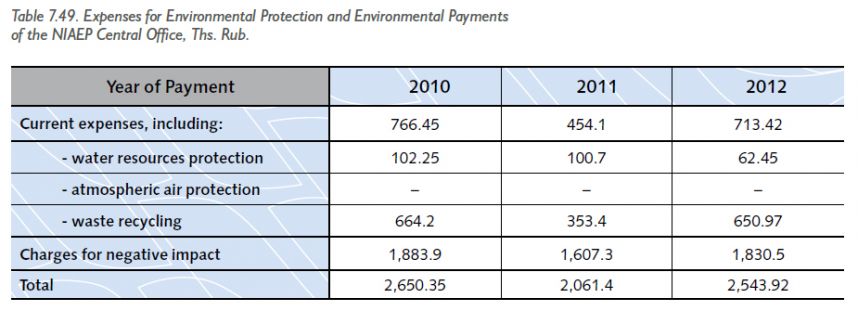
Table 7.50. Expenses for Environmental Protection and Environmental Payments of the NIAEP Udomlya Branch, Ths. Rub.

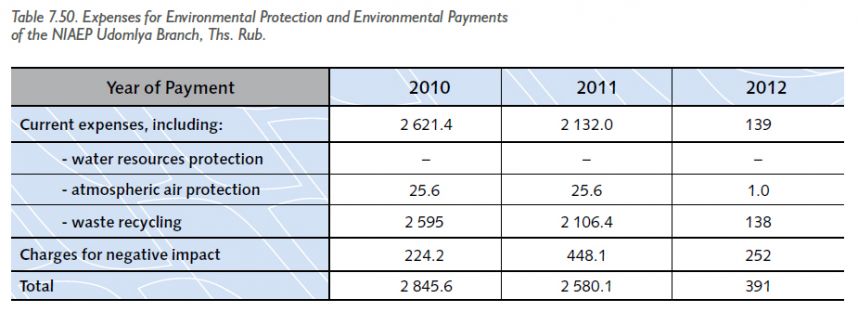
The sharp decrease in expenses for environmental protection in 2012 is connected with completion of operations at Kalinin NPP generating unit 4.
Table 7.51. Expenses for Environmental Protection and Environmental Payments of the NIAEP Volgodonsk Branch, Ths. Rub.

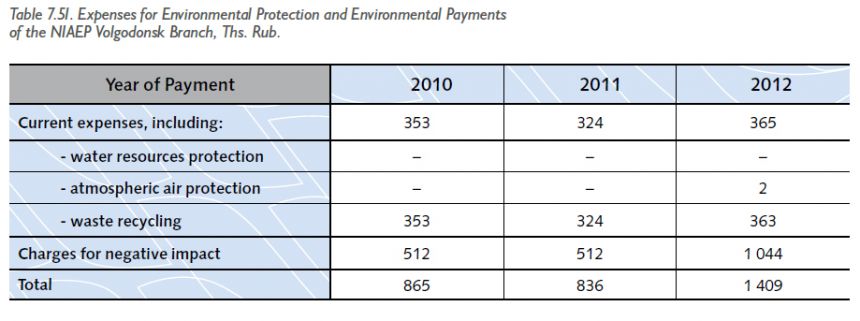
Table 7.52. Expenses for Environmental Protection and Environmental Payments of the NIAEP Baltic Branch, Ths. Rub.

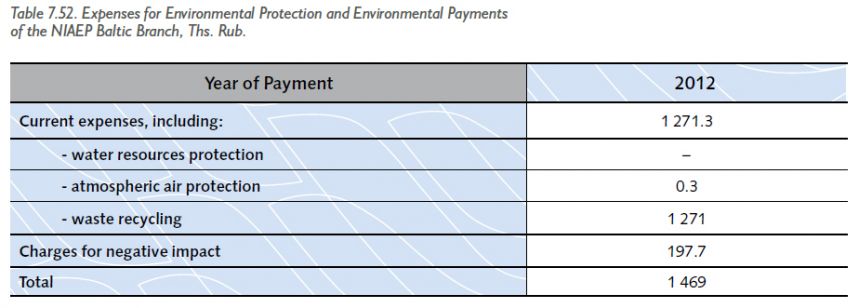
In 2012 no penalties were imposed on the NIAEP Central Office and branches for non-compliance with the environmental legislation.
23 Borders of consolidation on all indices include the Udomelsky, Volgodonsky and Baltic Branches. The data on the Baltic Branch are given with regard to 2012 only, as the Branch was established at the end of 2011.
24 Due to the fact that the Baltic Branch was established at the end of 2011 and construction operations began at the end of 2012, the data on the Baltic Branch are given for the fourth quarter of 2012 only.
25 Production activity of the Baltic Branch began in the end of 2011.
Nuclear and Radiation Safety of Nuclear Power Industry Facilities
During construction of NPP generating units NIAEP executes project complying with all safety norms and requirements of the Russian Federation. In addition, NIAEP takes into account modern principles and approaches to safety assurance established by IAEA norms.
In terms of nuclear and radiation safety minimization of negative environmental impact of completed nuclear power industry facilities is achieved through sound elaboration of design documentation and compliance with its requirements in the process of construction.
NPP construction and operation is regulated by the following regulatory documents:
- Federal Law No. 170 on Nuclear Energy Use of November 21, 1995;
- Federal Law No. 3 on Radiation Safety of Population of January 9, 1996;
- Federal Law No. 190 on Radioactive Waste Handling of July 11, 2011;
- Provision on Licensing of Activity in the Field of Nuclear Energy Use;
- Rules of Physical Protection of Nuclear Materials, Nuclear Units and Storage Stations for Nuclear Materials;
- Provision on Elaboration and Approval of Federal Norms and Rules in the Field of Nuclear Energy Use and Lists of Federal Norms and Rules in the Field of Nuclear Energy Use;
- Rules on Decision Making on Location and Construction of Nuclear Facilities, Radiation Sources and Storage Stations;
- Federal Norms and Rules in the Field of Nuclear Energy Use;
- Sanitary Norms and Rules of Radiation Safety Assurance.
The requirements of regulatory documentation are complied with both during elaboration of design documentation and at the following stages: NPP construction, operation and decommissioning.
Fig. 7.14. Safety Level of Constructed NPPs
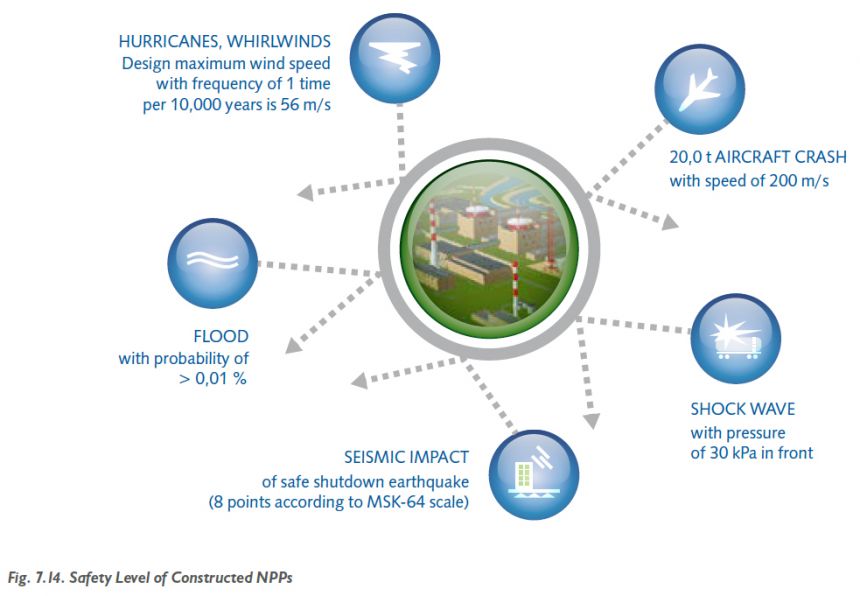
Technical Solutions for Safety Assurance
Nuclear power stations are designed with a significant margin of stability to internal and external impacts.
NPP safety in respect of internal (radiation) impacts is achieved through consecutive execution of concept of defense in depth based on application of physical barrier system mounted on the way of distribution of ionizing radiation and radioactive substances to the environment. In addition, a complex of technical and organizational measures is executed on protection of barriers and maintenance of their effectiveness, as well as on staff, population and environment protection.
Organizational Issues of Safety Assurance
Fig. 7.15. Safety Assurance at All Stages of NPP Lifecycle
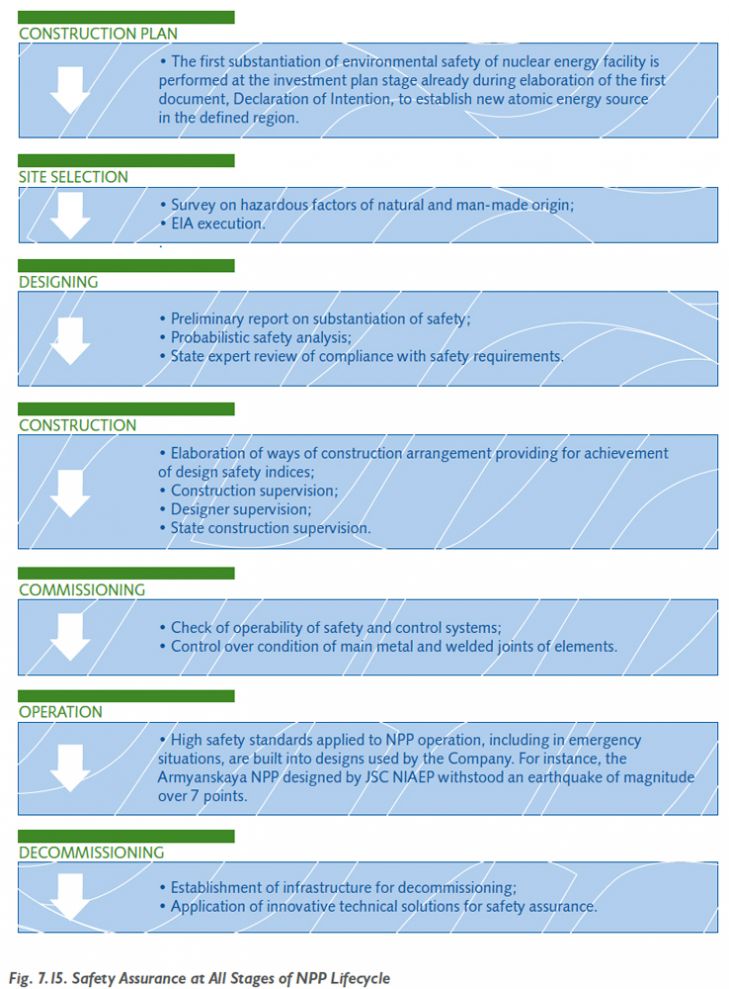
Assessment of Products and Services Safety and Impact on Health
Assessment of NPP impact on human health and environmental protection is carried out at each stage of NPP lifecycle, including:
- Selection of site;
- Designing;
- Construction;
- Commissioning;
- Operation;
- Modernization.
The methods of the current Management System of the Integrated Company are applied on a case-by-case basis with consideration of:
- Influence of equipment, systems and structures or type of activity on NPP safety;
- Values and complexity of each type of equipment, systems and structures or activity;
- Possible consequences of product defects or improper performance of activity.

NPP complies with safety requirements, if its radiation impact on staff, population and environment during normal operation and abnormal operation, including design-basis accidents, does not lead to excess of admissible staff and population irradiation doses, standard levels of emissions and discharges, concentration of radioactive substances in environment, and is restricted in case of beyond design-basis accidents. This is achieved through compliance with requirements of federal norms and rules in the field of nuclear energy use, IAES standards, and other regulatory documents.
Substantiation of environmental safety of nuclear energy facilities begins at the stage of investment plan and is formalized in the Declaration of Intention on creation of new atomic energy source. The main tasks on environmental impact assessment are solved at the stage of design. Environmental safety of NPP designed for construction in Russia is proved through comparison of design indices and indices achieved during operation of similar generating units with admissible indices set by applicable norms.
For instance, according to one of the applicable standards “Sanitary Rules of Designing and Operation of Nuclear Stations” (SP AS-03), the main irradiation dose limit for population in conditions of normal operation amounts on the average to 1 mSv for life time of 70 years. This index is built into the design of Rostov NPP generating units 3 and 4 with a value of 10 mkSv per year (i.e. 0.01 mSv per year), which is 100 times lower than the effective standard. The actual level of radiation from the running unit 1 of the Rostov NPP is still 100 times lower than the estimated design values, i.e. it presents a markup to the natural radiation background in the area of Volgodonsk which is almost imperceptible for radiation survey meters (natural radiation background amounts to 1 mSv per year). Even in cases of hypothetical beyond design-basis accidents the estimated radiation values will not exceed 100 mkSv per year (10% of admissible limits).
The design documentation elaborated for NPP generating unit after procurement of necessary permits is subject to mandatory independent analysis. It is required to obtain licenses of the Federal Service for Environmental, Technological and Nuclear Supervision for each stage of NPP lifecycle (4 licenses for each generating unit). In turn, materials on license substantiation shall be prepared, in order to procure each license (on the basis of environmental impact assessment). The necessary requirement for materials on license substantiation consists in that all interested parties, public and scientific organizations shall have access to these materials. After a preliminary review, public hearings shall be held on EIA materials in respect of designed facility in the region of planned construction. Following positive conclusion from the state environmental expert review, the materials on license substantiation are subject to additional special expertise carried out by the Scientific and Engineering Center for Nuclear and Radiation Safety (SEC NRS), i.e. analysis of nuclear and radiation safety with consideration of all other factors, including environmental, fire, etc.

After a SEC NRS expert analysis, the Federal Service for Environmental, Technological and Nuclear Supervision issues licenses for a certain stage of NPP lifecycle: placement, construction, operation or decommissioning. Currently, NIAEP received licenses for placement of Nizhny Novgorod NPP generating units 1 and 2, Tver NPP generating units 1 and 2, and operation of Kalinin NPP generating unit 4.
In 2012 EIA materials were elaborated for operation of Rostov NPP generating unit 3. In December 2012 the specified materials, first separately, and then as part of materials on license substantiation (MLS) were submitted for public hearing and further public discussion in the Dubovskoye Settlement and Volgodonsk Town of the Rostov Region. In 2012 the NIAEP activity complied with all norms and safety requirements of the Russian Federation and IAEA.
Social and Economic Capital
Social and Economic Capital 26
In terms of sustainable development, the Company’s social and economic influence on development of regions of its operation is of great importance.
The activity on NPP construction has a positive effect on the territories of NIAEP operation as follows.
Social effect:
- New job formation;
- Improvement of life quality of the population;
- Attraction of young people to youth construction brigades for NPP construction;
Infrastructure effect:
- Creation of new and replacement of retired generating facilities.
Budget effect:
- Estimated tax revenue to all levels of budget system during construction of a double-unit NPP amounts to nearly 9 billion rubles;
- Estimated tax revenue to local and regional budgets during operation of a double-unit NPP amount to nearly 2 billion rubles yearly. Distribution of NIAEP tax payments between budgets of various levels in 2010–2012 is shown in Table 7.53 below;
General economic effect:
- NPP construction has a favorable influence on economic situation in the region, where construction is held and adjoining territories, as well as regions, where manufacturers of equipment and materials for NPP are locate.
In 2012 HR and social activity of NIAEP was highly appraised: NIAEP is acknowledged as the winner of the regional stage of the Russian National Competition Russian Company of High Social Efficiency in the categories Development of Working Places and Formation of Healthy Lifestyle. Currently, the Company participates in the federal stage of the competition.
Table 7.53. Distribution of Tax Payments Between Budgets of Various Levels, Million Rubles


26 Chapter 7.5 Social and Economic Capitall provides basic data on impact types upon regions of operation for NIAEP-ASE Integrated Company in general. Chapters 7.5.1–7.5.4 disclose information about JSC NIAEP.
Economic Effect on Local Population in Regions of Operation
New Jobs in Regions of Operation
The NIAEP activity contributes creation of new jobs both in the regions of Company’s operation and in the regions where suppliers and manufacturers of equipment and materials operate.
In 2012 nearly 80% of funds going through the accounts of the Company were received by the NIAEP counteragents which created new jobs for performance of their activity. Generally, creation of a new job at NIAEP leads to ten new jobs in related industries.
Employment of Local Population in the Russian Federation
Staff recruitment in NIAEP is carried out in accordance with STP 25.02-12 Arrangement of Staff Recruitment and Adaptation. This standard establishes the procedure for staff employment by the Central Office and structural subdivisions. Employment priority is given to local population provided that qualified employees are available in the region of operation. More than half of top managers of NIAEP are employed from among local population living in the relevant regions of operation.
Community offices are established to help the construction and mounting departments and contracting and subcontracting organizations operating on construction sites in solving the problem of HR recruitment.
All specialists employed through community offices are citizens of Russia (except for community offices in Visaginas established for citizens of Lithuania). 95% of them constantly reside in cities and settlements located within 100 km from NPP construction sites. 100% of staff employed by subsidiaries and contracting organizations get wages exceeding the minimum monthly wage fixed in the relative regions of operation.
Fig. 7.16. Number of Top Managers Employed from Among Local Population in 2012
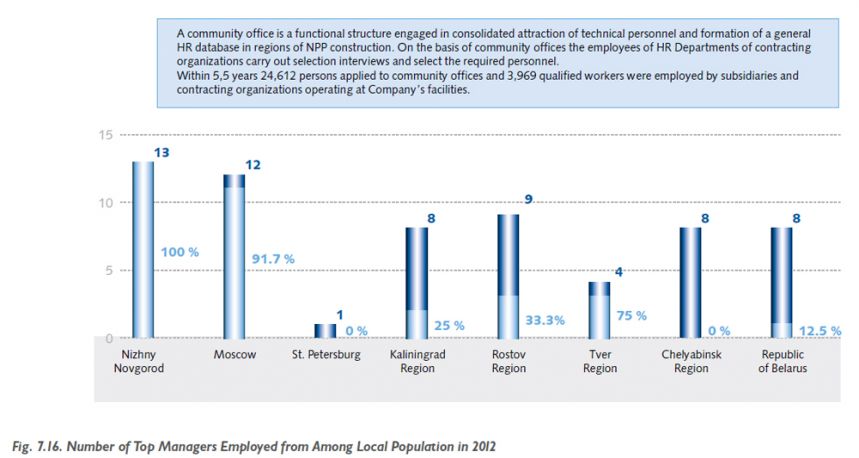
Table 7.56. Employment through Community Offices in Russia

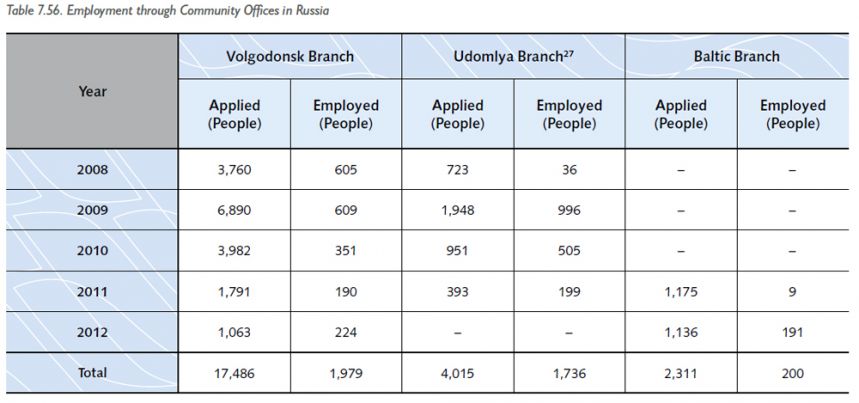
Employment of Local Population Abroad
The procedure for employment of local population for work performance on NPP construction abroad and execution of other nuclear energy projects was established by Order of ASE No. 42 on Approval of Procedure for Application of Document Forms of February 24, 2009 and STP 25.02-12 HR Recruitment and Employees Adaptation Procedures. In 2012 the share of engineers and technical specialists employed by ASE subdivisions from among local population amounted to nearly 20%.
In October 2012 the first foreign community office was established in Visaginas of the Utensky Uyezd of Lithuania for recruitment of qualified workers, engineers and technical specialist for the Ignalina NPP decommissioning project. A large-scale advertising campaign was carried out in Lithuanian mass media and reception of citizens was arranged. This permitted to employ the key staff for the Lithuanian Branch of Construction and Erection Department No. 1 Ltd. (NIAEP subsidiaries and affiliates) in total of 54 people and to form the external HR reserve including over 800 qualified workers and specialists within a short time.
27 Zero values are conditioned by scheduled completion of construction of Kalinin NPP generating unit 4 and liquidation of the Udomlya Branch.
Economic Effect on Suppliers and Contractors
NIAEP places no priorities on suppliers and contractors in connection with geographical location. However, in accordance with the applied policy and practice, NIAEP shall fulfill customer’s requirements for attraction of local subcontractors and suppliers when executing certain projects.
Generally, selection of suppliers is performed by means of tender procedures, and possibility to win a tender depends on the level of compliance of candidate with requirements and criteria specified in documentation. The share of budget allocated for procurement from local suppliers in relevant regions of operation varies depending on customer’s requirements and contractual terms (see Table 7.58).
Table 7.57. Number of Supplies in 2012, Including Non-Residents of the Russian Federation


Table 7.58. Share of Procurement from Local Suppliers in 2012

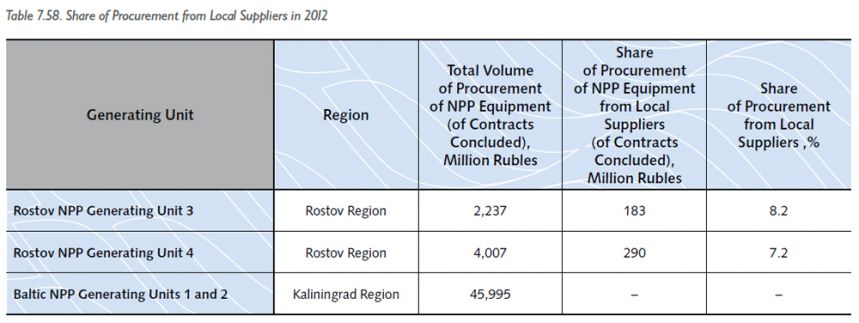
Procurement Optimization
In 2012 NIAEP proceeded with optimization of procurement procedures. Electronic trading platforms (ETP) were widely used for this purpose. Procurement through ETP has a number of advantages:
- Significant time-saving;
- Saving of capital for arrangement and carrying out of procurement;
- Transparency of procurement process.
In 2011 21.9% of all NIAEP tender procurement procedures were carried out by means of ETP, while in 2012 this value amounted to 99.99% (see Fig. 7.17).
Execution of open tender procedures by means of electronic trading platforms permitted to considerably reduce contract prices compared to the initial (maximum) ones. Saving on the generating units under construction amounted to:
- Rostov NPP generating unit 3 – 507.4 million rubles;
- Rostov NPP generating unit 4 – 162.9 million rubles;
- Baltic NPP generating units 1 and 2 – 621.6 million rubles.
In 2012 the total saving as a result of placement of procurement tenders on ETP amounted to 1,291.9 million rubles.
Fig. 7.17. Share of Tender Procurement Carried out
Through Electronic Trading Platforms (over 2010–2012)
Investments in Social Infrastructure and Charity

While choosing an investment vehicle in public infrastructure the preference is given to initiatives which are aimed at achievement of significant social changes in the region of operation provided that volume of expenses for execution of these initiatives is substantiated and commensurable to the expected result. NIAEP encourages targeted charity projects aimed at life quality improvement of people connected with organizations of State Corporation ROSATOM. NIAEP executes social projects which are not budget-substituting and which support tendering procedures on determination of the best social initiatives.
In 2012 the volume of monetary funds allocated by NIAEP for charity purposes amounted to 84 million rubles. Significant funds (60 million rubles) were allocated to public orthodox organizations for construction and reconstruction of churches (Nizhny Novgorod and Rostov Regions, Lithuania, and Republic of Belarus).
 In 2012 charity funds were distributed between the following types of organizations:
In 2012 charity funds were distributed between the following types of organizations:
- Public organizations;
- Local authorities;
- Educational, healthcare and cultural institutions;
- Sports organizations;
- Religious organizations.
Charity support in the amount of 1.5 million rubles was rendered by NIAEP to municipal formations, enterprises and public organization of the Nizhny Novgorod, the Rostov, the Tver and the Kaliningrad Regions for arrangement of charity events, improvement of infrastructure and land, execution of cultural-mass and sports events, rendering assistance to war and labor veterans and disabled people.
For the first time in 2012 NIAEP organized and carried out a Charity Projects contest in regions of its operation. The contest was announced on April 2, 2012. The total grant fund of the contest amounted to 12.3 million rubles.
102 projects (from 86 organizations) were submitted to the contest. In total the requested funds amounted to 63.3 million rubles. 32 projects (from 33 organizations) were selected by the jury as the winners of the contest.
Table 7.54. Number of Projects Awarded in Competitions


Table 7.55. Number of Projects Awarded in Competitions


Interaction with Interested Parties
Interaction with Interested Parties in 2012
The Integrated Company tends to establish mutually beneficial partnership with interested parties.
Based on express-polling of the Company management, following groups of key interested parties of the Integrated Company were revealed:
- shareholders;
- customers;
- suppliers;
- contractors and sub-contractors;
- staff and management;
- non-governmental organizations;
- educational institutions;
- central and local authorities;
- resident population;
- mass media.
A Permanent Stakeholder Panel was established in order to create efficient system of interaction with the interested parties. Primary groups of the interested parties were determined on the basis of evaluation of importance of their influence to ongoing activity of the Company and effect the Company produces on the interested parties. Procedure of the Stakeholder Panel formation is to be approved by Provision about Stakeholder Panel.
Interaction of the Company with the interested parties is governed by the following principles:
- Respect of interested parties’ opinion.
- Timely notification of the interested parties.
- Interaction on a regular basis.
- Fulfillment by the Company of commitments incurred.
- Requirement for the interested parties to fulfill the undertaken obligations.
The interaction is arranged with account of expectations of each interested party. The Integrated Company uses various mechanisms and tools for such interaction (See Table 7.59).
Table 7.59. Interaction with Interested Parties in 2012


In 2013, it is planned to develop and start an Internet platform for interaction with the interested parties. The project is intended to arrange discussions of projects, documents, and other matters related to activities of the Company28 which are essential for the interested parties 28.
Assessment of Consumers’ Satisfaction
Russian consumers
On the basis of results of work in 2012, questionaries to assess satisfaction of quality of the performed works were sent to major customers of the Integrated Company: OJSC Rosenergoatom Concern and JSC ”Atomenergoproekt”. This polling provides for collection of data on determination of quality level for the past period (improvement/worsening) and information on compliance with deadlines (fulfillment later than the deadline/prior to the deadline) as for basic products of the Company (design products; construction of the NPP generating units).
On the basis of data on satisfaction received from the customers, following is specified:
- Quality of services rendered by the Company in the field of designing and construction of the NPP generating units is unaffected.
- Deadlines of the services rendered by the Company are mostly complied with. In some occasions the time periods are exceeded.
In April 2012, testimonials about the Company as General Designer and Contractor for construction of Kalinin NPP generating unit No. 4 (ref no. 09-01-15/471 of 12.04.2012) were received from Kalinin NPP (branch of OJSC Rosenergoatom Concern).
Quality of the performed works and services rendered was assessed as positive one in this testimonial. It was also mentioned:
- Efficient support of the equipment manufacturing process by the Company staff: it enabled to avoid delivery of falsified and pirated products.
- Proper organization of works on incoming inspection, storage, and delivery of equipment and materials for installation.
- Prompt initiation and performance of works on the construction sites in accordance with the approved schedules.
In order to improve results and efficiency of the quality management system, improvement activities are carried out, and programs on different types of activities are developed.
Foreign consumers
Satisfactin of foreign consumers is assessed by evaluating fulfillment of contractual obligations on projects in the course of audit from the side of the customer and during quarterly coordination meetings with participation of customers, as well as at video-conferences with participation of customers. Results of consumer satisfaction are in the audit reports from the side of the customer and in the protocols of meetings.
During Reporting Period, the customers performed audits for projects of Tyanwan NPP-2 and the Akkuyu NPP. The customers’ evaluation of activities to fulfil contractual obligations was positive.
28 See http://niaep.stakeholderpanel.ru/
Dialogues with Iterested Parties in the Course of Report Preparation
Strategy in the field of public reporting of State Corporation Rosatom specifies that one of the key principles of the NIAEP public reporting is an interaction with the interested parties (stakeholders) which is implemented in the course of preparation of public reports.
In the course of preparation of the Report, four dialogues were arranged (including public consultations) in accordance with Standard on Interaction with the Interested Parties АА1000SES. These activities were intended to get a feedback from stakeholders in order to specify a higher-priority subject, matters of sustainable development and control of capitals in the report. Representatives of the interested parties including Stakeholder Panel of NIAEP were invited to participate in these dialogues.
Dialogue No.1. Annual Report Concept for 2012 29
On January 30, 2013 in the office building of JSC NIAEP in Nizhny Novgorod (3, Svoboda sq.), a dialogue on report concept of JSC NIAEP for 2012 took place. In the course of dialogue, the Report concept worked out by JSC NIAEP was presented for the interested parties, and after that the interested parties were suggested to express their opinions and recommendations on priority issues of the Report, issues for other dialogue with the interested parties and a list of those authorized to approve the report. The activity enabled to finalize and update the Report concept and make the 2012 Report meet interests of stakeholders better.
Dialogue No. 2. Strategy of NIAEP-ASE Integrated Company 30
On the 13th of March, 2013, at 10:00 a.m., a the dialogue Strategy of NIAEP-ASE Integrated Company took place in the office building of the NIAEP Moscow Branch (2, Dmitrovskoye shosse). Issues of development of the Integrated Company Strategy and incorporation of principles of sustainable development into strategy were discussed during this activity.
Dialogue No. 3. Sustainable Development 31
On the 13th of March, from 11:15 a.m. to 12:30 a.m., the dialogue Sustainable development took place in the office building of JSC NIAEP in Nizhny Novgorod (3, Svoboda sq.).
Issues of the Company efficiency in the field of sustainable development, as well as management of human, social-economic, and environmental capitals were discussed during this activity.
Table 7.60. Replies to Requests and Recommendations Stated by Interested Parties during Dialogues


29 Protocol of consultation and list of participants, see: http://niaep.stakeholderpanel.ru/ru/activities/?all=1.
30 Ibid.
31 Ibid.
Public Consultations on Report
On April 24, 2013, public consultation on annual public report of JSC NIAEP for 2012 took place in a conference hall of the office building of JSC NIAEP in Nizhny Novgorod (3, Svoboda sq.).
Representatives of the main interested parties participated in the public consultations.
|
On behalf of state authorities:
|
|
Tamarov V.А.
|
Deputy Director of the Volga and Oka Head Office of the Environmental, Technological and Nuclear Supervision Federal Service
|
|
Vasilyiev А.А.
|
Consultant of the Military and Industrial Complex Department of the Nizhny Novgorod Region Government
|
|
On behalf of industry organizations:
|
|
Aleksandrov Е.G
|
Director of Power Machines OJSC
|
|
Borodin Е.B.
|
Chief Engineer of Power Machines OJSC
|
|
Kezin S.N.
|
Adviser Director of the World Association of Nuclear Operators
|
|
Krivosheev А.B.
|
Marketing Management Head of Atomenergomash JSC
|
|
Kurachenkov А.V.
|
Chief Officer of the Designing Department for Water-Cooled Reactor Systems and Common Auxiliaries of Joint Stock Company Afrikantov Experimental Mechanical Engineering Design Bureau
|
|
Khramova Е.N.
|
Chief Specialist of AEM-Technology CJSC
|
|
On behalf of business community:
|
|
Lebedev V.А.
|
Vice-President of Sarovbusinessbank JSC
|
|
On behalf of non-governmental organizations:
|
|
Anosov А.V.
|
Director of Design Planning and Analysis of the Chamber of Commerce and Industry of the Nizhny Novgorod Region
|
|
Semenchuk V.S.
|
Deputy Director General of the Nizhny Novgorod Association of Manufacturers and Entrepreneurs
|
|
Tarasenko Е.А.
|
Head of the Design and Communications Department of the Oka Interregional Environmental Movement
|
|
Khasiev А.V.
|
Chairman of the Oka Interregional Environmental Movement
|
|
On behalf of educational institutions and scientific organization:
|
|
Khadchenko S.P.
|
Head of Department of FSUE Sedakov FRPC NIIIS
|
|
Khrobostov А.Е.
|
Director of the Nuclear Energy and Applied Physics Institute of Nizhny Novgorod Alekseev State Technical University
|
|
On behalf of consulting companies:
|
|
Galushkin S.V.
|
Project and Program Manager of Da-Strategy Group of Companies
|
|
Nakvasin S.U.
|
Corporate Reporting Business Area Director of Da-Strategy Group of Companies
|
|
Tokareva V.S.
|
Project Manager of Da-Strategy Group of Companies
|
|
Vodopyanova L.V.
|
Lead Auditor of Bureau Veritas Certification Russia CJSC
|
|
On behalf of the Integrated Company:
|
|
Sheshokin N.P.
|
Vice President, Human Resources
|
|
Zilinskaya О.I.
|
Chief Specialist of the Public Relations and Information Policy Department
|
|
Kochergina Е.V.
|
Chairman of Trade Union
|
|
Letovaltseva T.V.
|
Acting Head of the Social and Labor Relations Department
|
|
Podorov N.G.
|
Director of Economic and Financial Affairs and Head of the Main Finance and Economic Department
|
|
Sedelnikov D.V.
|
Chief Specialist of the Strategic Development amd Market Monitoring Department
|
|
Sokolov N.G.
|
Chief Specialist of the Engineering Department
|
|
Shadrin Е.А.
|
Head of the Investment Department
|
|
Shiryaeva N.V.
|
Acting Head of the HR Department
|
Approved by the Decision of the Sole Shareholder
Approved by the Decision of the Board of Directors
| President |

|
V.I. Limarenko |
| Chief Accountant |

|
E.V. Samogorodskaya |
ANNEXES
Annex No.1. Report of the Board of Directors on Operating Results of JSC NIAEP per Priority Activities
Annex No. 2. Information on Compliance with the Corporate Code of Conduct of JSC NIAEP
Annex No. 3. Report on Major Transactions and Interested Party Transactions
Annex No. 4. Accounting statements for 2012
Annex No. 5. Auditor’s Report Confirming Authenticity of Annual Financial Statements
Annex No. 6. Report of Audit Commision
Annex No. 7. Report on Public Acknowledgement of Public Annual Report of JSC NIAEP»
Annex No. 8. Conclusion of Internal Check and Audit Department on Compliance of Preparation of Public Accounting with the Requirements of State Corporation Rosatom Policy and Local Regulatory Acts of JSC NIAEP
Annex No. 9. Conclusion of Non-Financial Auditor
Annex No. 10. Applying of Standard Elements of Reporting and Performance Indicators
Annex No. 11. Plans and Obligations to Interested Parties
Feedback Questionnaire
GLOSSARY
- ЕРС-companies (ЕРС – engineering, procurement, construction) are companies which implement turn-key projects. Functions of EPC-company include engineering, supplies, and construction.
- EPCM-companies (EPCM – Engineering, Procurement, Construction, Management) are companies which use methods and means of turn-key projects portfolio management. The functions of an EPCM-company are engineering, supplies, construction, and project management.
- GRI (Global Reporting Initiative) is an international non-governmental organization that developed corporate reporting guidelines in the field of sustainable development.
- ISO means a series of international standards on company management system developed to provide for predictable and stable services quality.
- NPP-2006. At the moment, it is the most up-to date typical design of Russian nuclear plant of new “3+” generation with an improved technical and economic performance. The project purpose is to achieve up-to-date safety and reliability characteristics alongside with optimized capital investments for plant construction. The design provides for use of VVER reactor with electric power output of at least 1150 MW (and an option for uprating to 1200 MW). Two NPP projects were developed under the approved technical assignment: Novovoronezh NPP-2 (General Designer JSC ”Atomenergoproekt”, Moscow) and Leningrad NPP-2 (General Designer - JSC Saint Petersburg Research and Design Institute ”Atomenergoproekt”).
- Vendor is a company which manufactures and supplies products and services under its trade mark.
- General Contractor is a party in the contractor’s agreement that commissions performance of certain types and packages of works under the agreement to dedicated contractor organizations (subcontractors). General Contractor is fully responsible to the Customer for package of subcontract works and their quality, timely elimination of defects, imperfections, etc.
- Customer (Developer) is a person or legal entity intending to perform building, renovation, or other type of construction works for which a construction permit is required.
- Engineering (lat. ingenium – inventiveness; knowledge) means engineering and advisory services of research, design and analytical nature, preparation of project feasibility study, drawing up of recommendations for production and management organization, i.e. a package of commercial services for preparation and assurance of production process and sales of products, for maintenance and operation of industrial, infrastructure, and other facilities.
- Project documentation implies documentation consisting of information in the form of texts and charts (diagrams). It specifies architectural, functional and engineering, design and technical solutions for the purposes of construction and renovation of capital construction objects, their parts, as well as major repairs, if in the course of such repair, engineering data and other safety and reliability characteristics of capital construction objects are affected.
- Design and survey works means a package of works including engineering survey, development of feasibility study, preparation of projects, detailed design documentation, drawing up of cost estimate documentation for the purposes of construction (new construction, extension, renovation, re-equipment) of facilities and buildings.
- Detailed design documentation is documentation developed in accordance with the approved project documentation and intended for performance of construction works.
- Radioactive substances are substances containing radioactive nuclides.
- Construction means the entire process of NPP erection from design and survey to commissioning to the Customer.
- Generating unit is a power station generator producing electric power.
- Nuclear power is internal power of atomic cores released in case of nuclear fission or nuclear reactions.
LIST OF ABBREVIATIONS
- NFCE – Neutron flux control equipment
- NPP – Nuclear Power Plant
- IDO – Integrated Design Office
- VVER – Water-Water Energetic Reactor
- GRES – Regional power station
- SaA – Subsidiaries and associates of the Company
- VHI – Voluntary Health Insurance
- CIS – Common Information Space
- UBDCS – Unified branch document control system
- LRW – Liquid radioactive waste
- PIMS – Project Information Management System
- ODR – Occupational Disease Ratio
- LRW TC – Complex of liquid radioactive waste treatment
- IIR – Industrial Injury Ratio
- KPI – Key Performance Indicators
- EPM – Environment protection measures
- SCT NRS – Scientific-Research Center on Nuclear and Radiation Safety
- EIA – Environmental Impact Assessment
- EP – Environmental protection
- DSW – Design and survey works
- SW – Software
- DED – Design and Estimate Documentation
- PSR – Production System Rosatom
- CIW – Construction and Installation Works
- CID – Construction and Installation Department
- FS–JoI – feasibility study – justification of investments
- CHP – Combined Heat and Power Plant
- LRW SP – Solidification plant for liquid radioactive waste
- FSUE – Federal State Unitary Enterprise
- SF – Salary Fund